I had seen the report and dismissed it quickly. There was no way that a White-eyed Vireo would stick around long enough to chase it. Their presence in Minnesota during migration is ephemeral. Then I got a phone call a couple weeks ago that changed my thinking. Ron Erpelding, a locally-based 87-county lister, calls me whenever something good shows up within a reasonable distance from Willmar. Ron told me that he went to see the Vireo at Flandrau State Park in New Ulm a few days after the initial sighting and that it was singing up a storm. Hmmm. Could it be that this misplaced Vireo was trying to set up a territory for the summer?
The singing White-eyed Vireo was intriguing on its own. The location, though, was what pushed the decision to chase over the edge. New Ulm was only an hour-and-a-half away, but more importantly, it was the city where Melissa and I got our first teaching jobs. This chase would be a family affair and a chance for Melissa and I to revisit a beautiful place we called home for a few years and show the kids our first school, first house, etc. It’s always held a special place in our hearts.
Nestled in the scenic Minnesota River Valley, New Ulm boasts the highest per capita population of German descendents, and it shows. It is a town where the industriousness of its residents is showcased in well-kept, stately brick homes and perfectly landscaped yards (there is no bad part of town), and the love of beer and all things sausage is proclaimed everywhere. It is a town where you can (and I did) roll out the barrel. You name a season, and I’ll name a beer festival for that season. New Ulm is the only place in America, and this is no joke, where schools offer up vats of sauerkraut on hot dog day and the kids pile it on. Life is a continual party in New Ulm, and partying it up just upriver from the famed Schell’s Brewery was a little bird I wanted to see.
After a quick drive-by of the old house, we went straight to Flandrau State Park right in town on the Cottonwood River. There were other birders responding to the call and making the short hike along the river to the spot. One guy, Bill Marengo, was in the parking lot and told us the bird was indeed present this morning. Yes!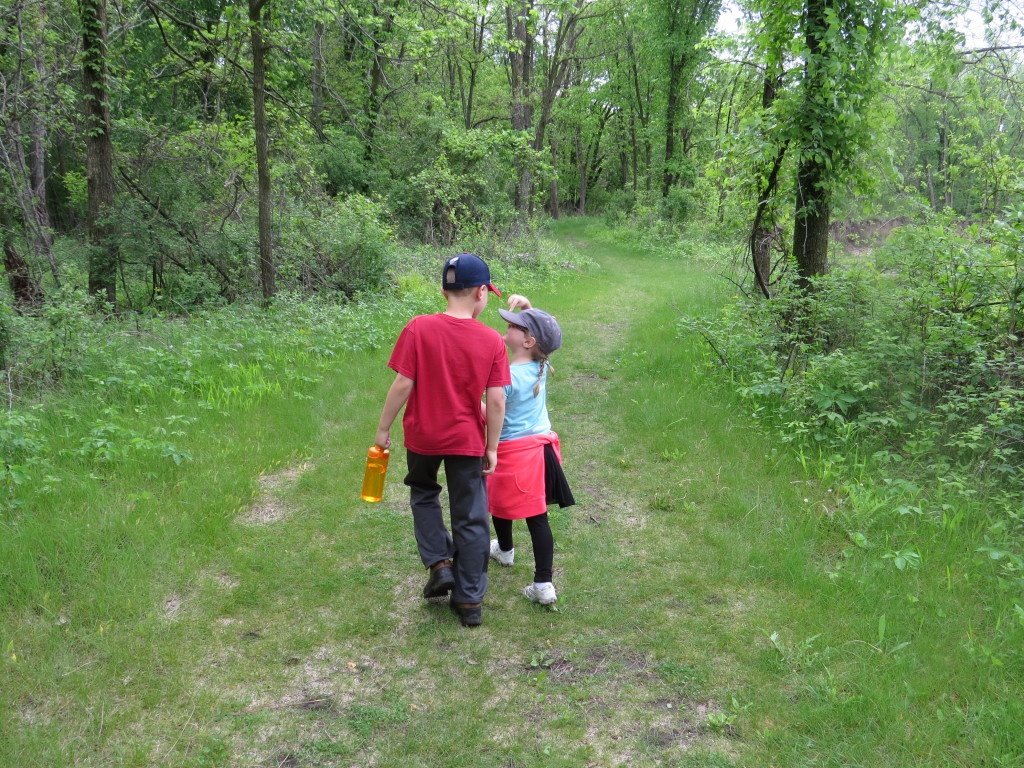 Getting to the scene a few hundred yards down the trail, I heard the bird immediately. Several birders and I strained to locate it. One lady claimed she saw it.
Getting to the scene a few hundred yards down the trail, I heard the bird immediately. Several birders and I strained to locate it. One lady claimed she saw it.
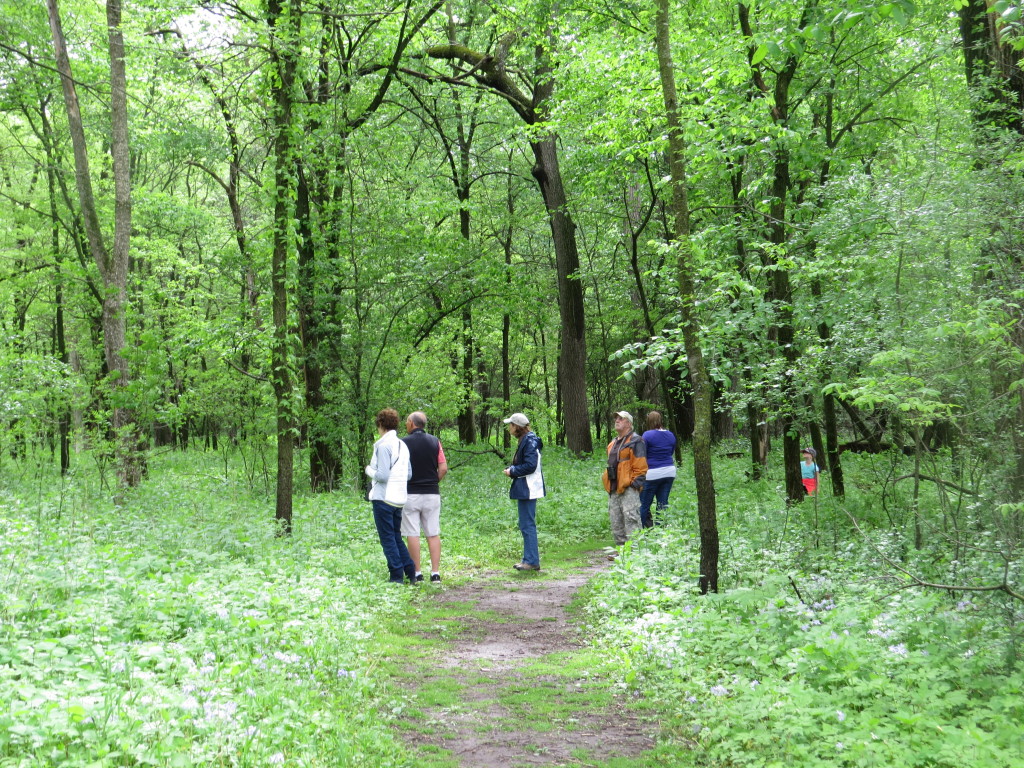
The rest of us didn’t. Then, we weren’t hearing it at all. After an hour or so, I decided to call it quits. You can only stare at the same trees for so long. Hiking back to the parking lot I checked my email and saw an eye-bulging report from the very same Bill Marengo with whom we had just spoken. He had made his way over the waste-water treatment ponds in nearby Sleepy Eye and found gobs of shorebirds–really good shorebirds. The trip went from being a downer to all the sudden being exciting again.
Once we were back at the car at Flandrau, there were some FOY Indigo Buntings to enjoy– a paltry, albeit lovely, consolation prize. The promise of some shorebird lifering was making up for any disappointment over the White-eyed Vireo.
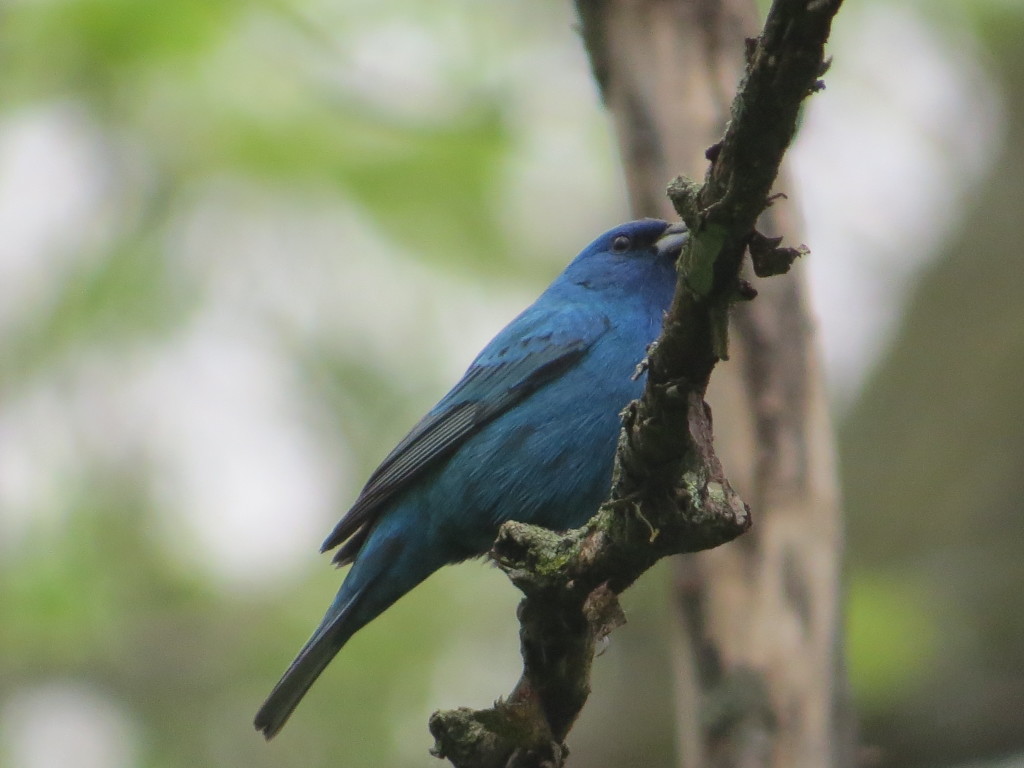 Before we left, I thought I heard the soft bee-buzzzz call of a Blue-winged Warbler. Nah, couldn’t be…
Before we left, I thought I heard the soft bee-buzzzz call of a Blue-winged Warbler. Nah, couldn’t be…
Even with a heard-only White-eyed Vireo and several potential lifers in Sleepy Eye, probably the best find of the day came when we stopped for a hot dog lunch at one of our old haunts, the Kwik Trip. (And yes, there was a huge tub of sauerkraut with the condiments). As we were leaving, who should we run into but our old neighbor and friend, Adam! The next half hour passed quickly as we reminisced, laughed, and caught up with Adam; I didn’t even have the usual anxiety when life birds are on the line.
Eventually we did part company and make the 15-minute drive to Sleepy Eye. Bill wasn’t kidding about the shorebirds. There were two main groups, each in different ponds and close to the entrance.
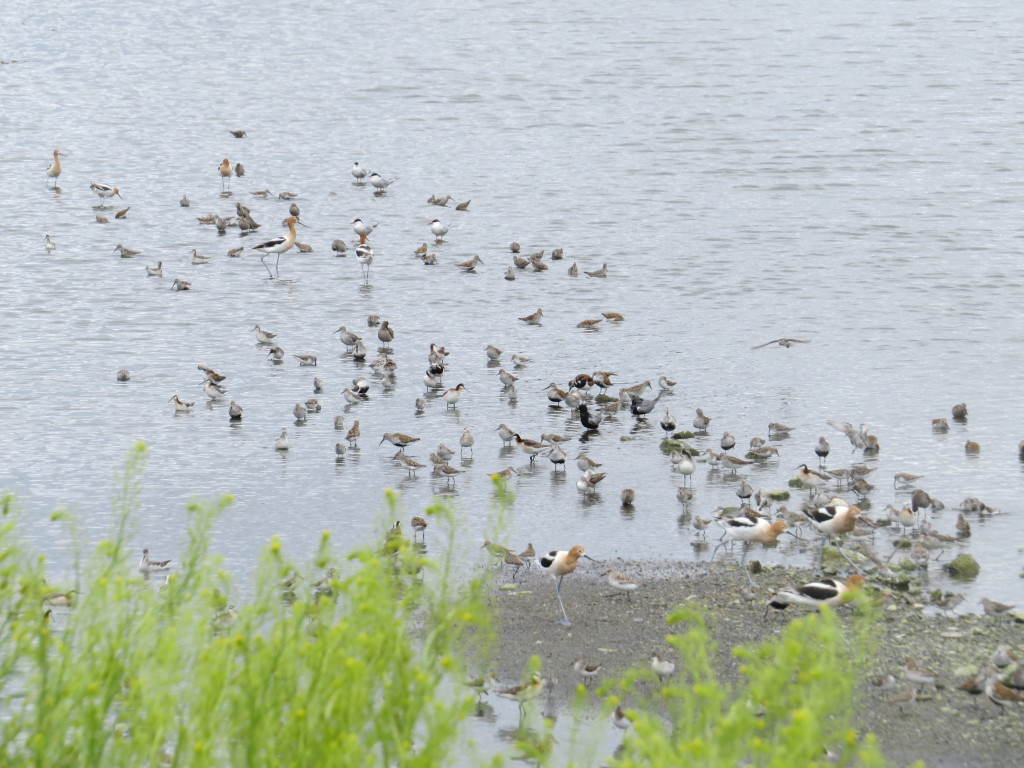
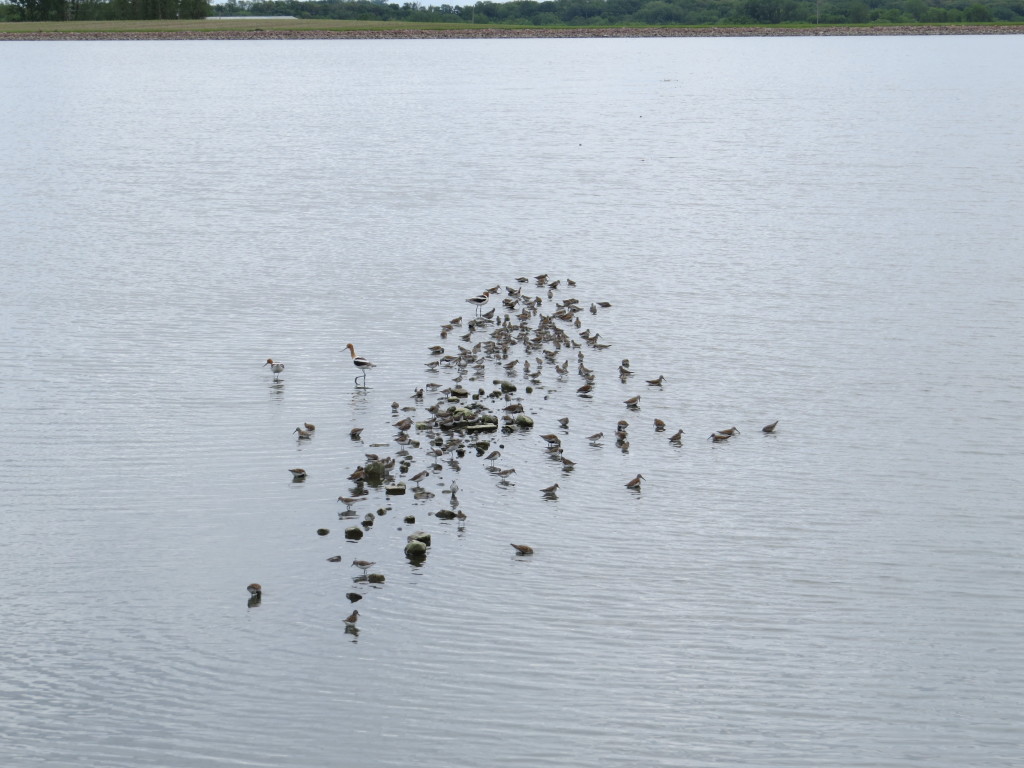
Birders who read this have probably already tried to sort through some of the goodies in these photos. When I was sorting through them in real life, I was looking for one, larger bird in particular that Bill reported–the Hudsonian Godwit.
Got it.
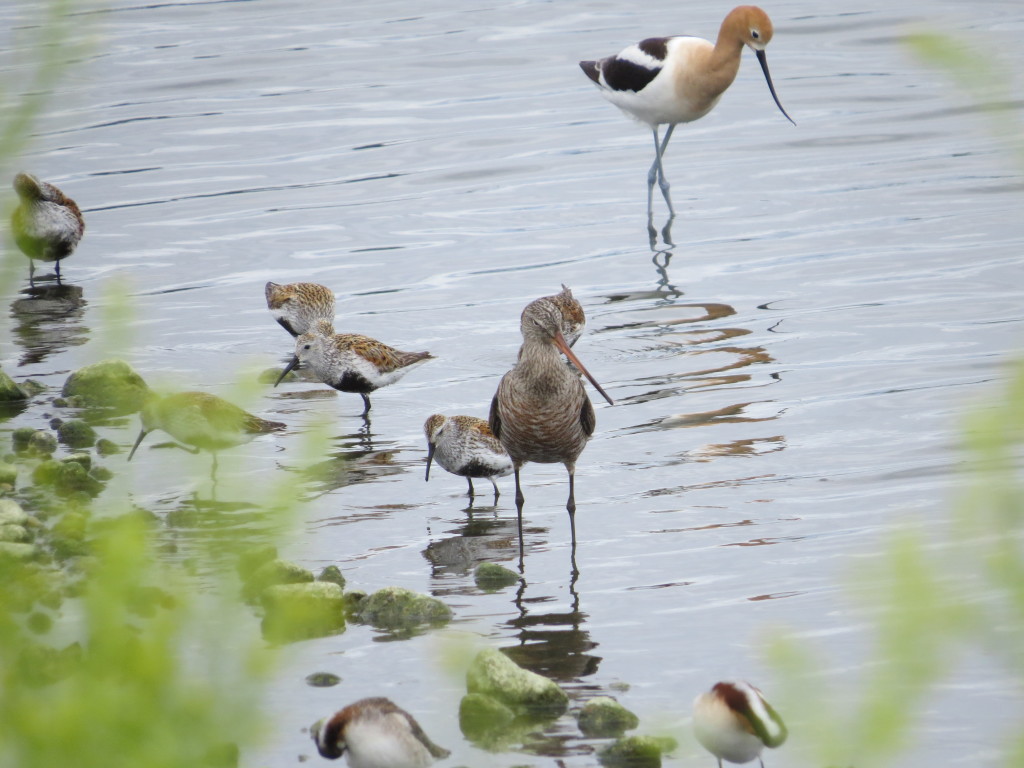
It was not the more striking male that I was hoping for, but when it comes to Hudwits, beggars can’t be choosers.
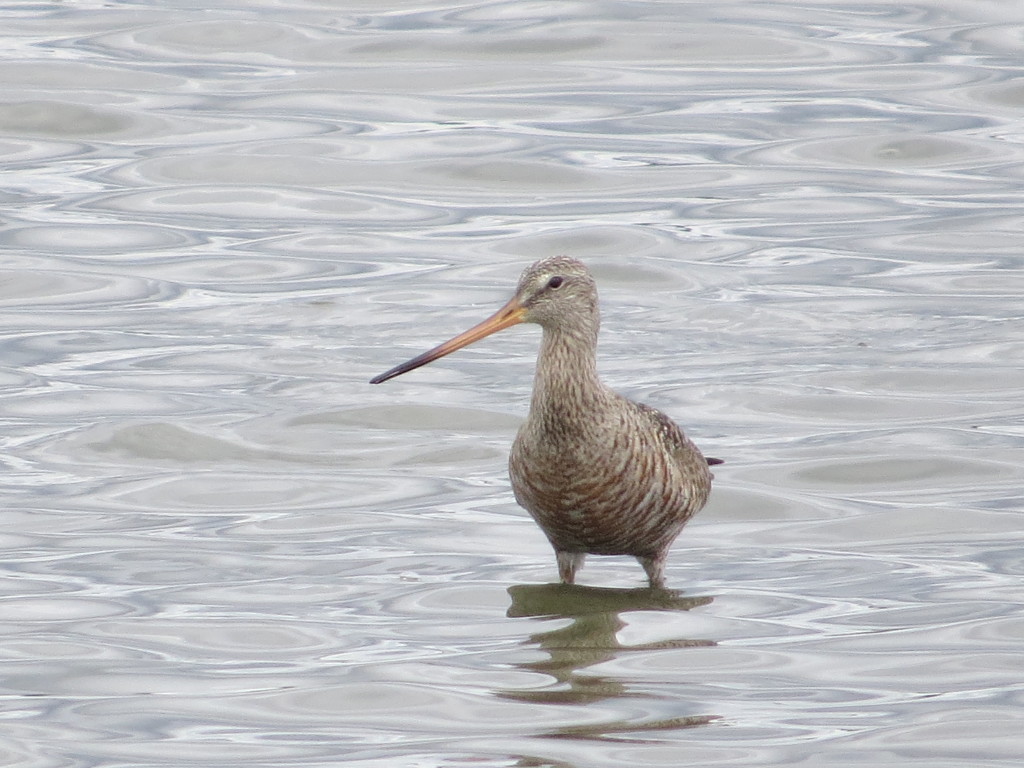
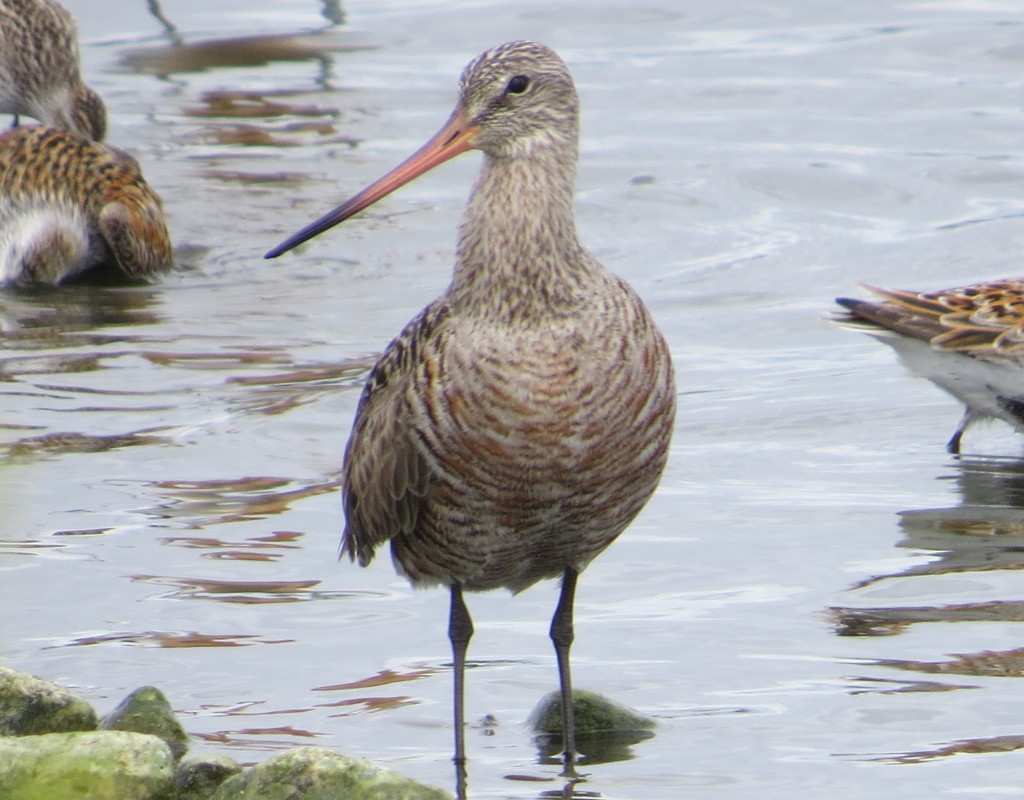
It was pretty sweet to pick up this unexpected life bird, but the fun didn’t stop there. Bill Marengo was still on the scene and helped me pick out a Sanderling lifer, even letting Evan and I get some good scope views. I was surprised by how plump they are and close in size to the Dunlin.
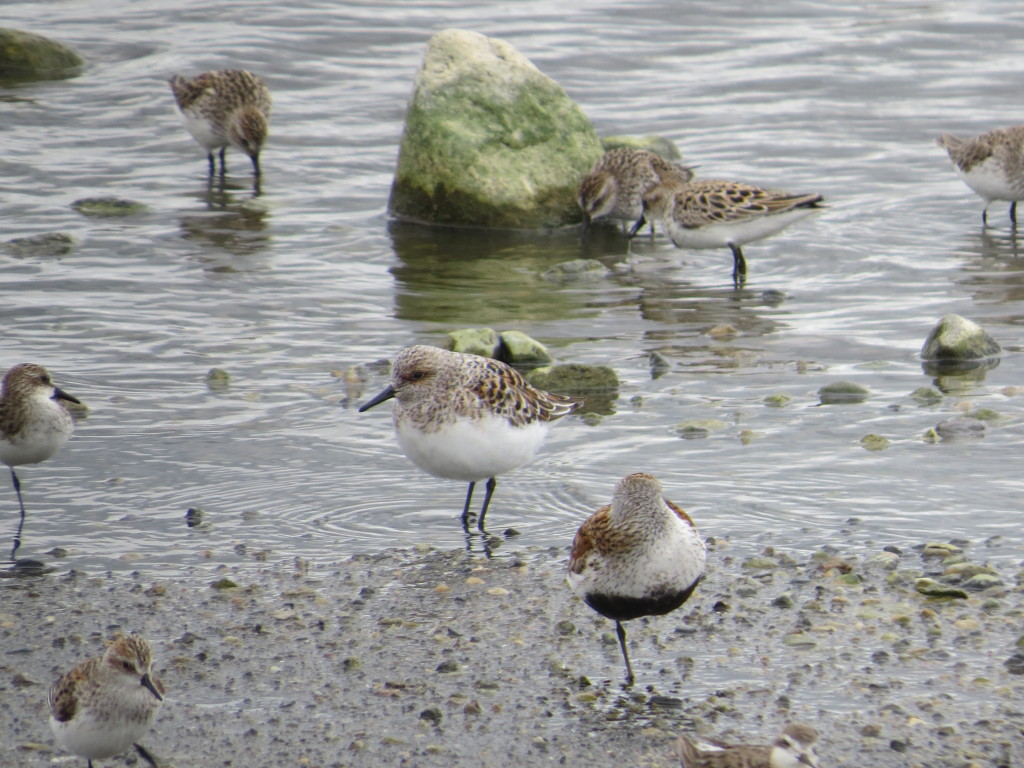
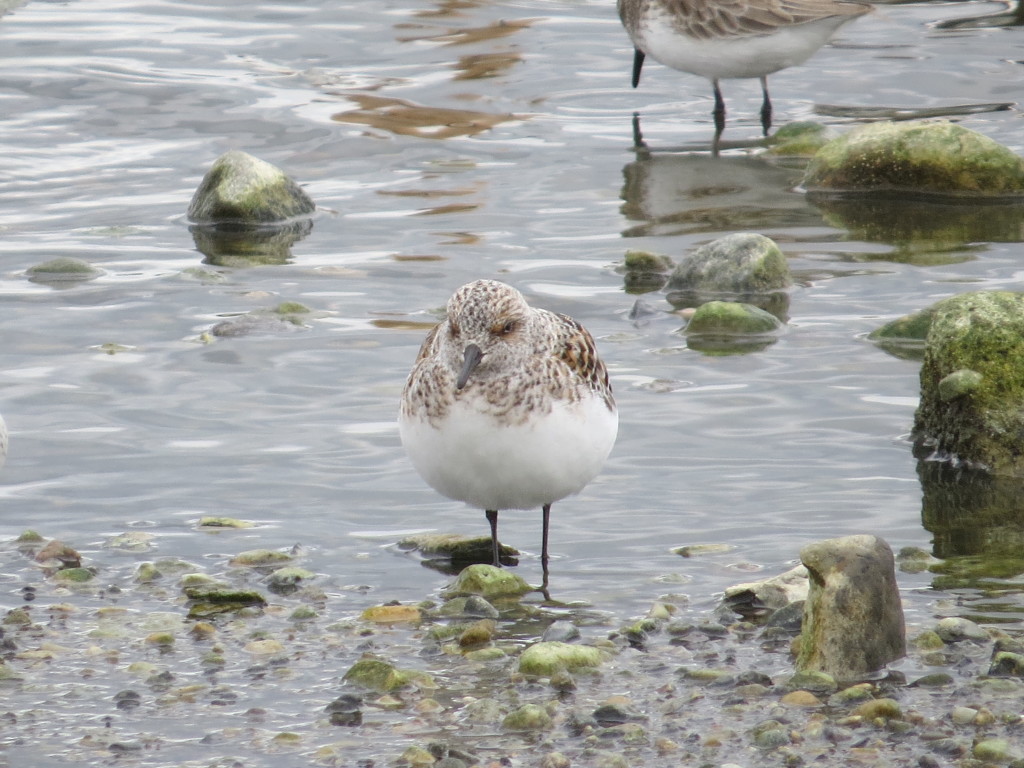 If two unplanned lifers weren’t enough, how about a third?! Several Terns caught my eye right away when we got to the ponds. Their bills looked excessively reddish and other clues were leading me to the conclusion that I was looking at Common Terns, which aren’t so common in Minnesota compared to the excessively common Forster’s Tern.
If two unplanned lifers weren’t enough, how about a third?! Several Terns caught my eye right away when we got to the ponds. Their bills looked excessively reddish and other clues were leading me to the conclusion that I was looking at Common Terns, which aren’t so common in Minnesota compared to the excessively common Forster’s Tern.
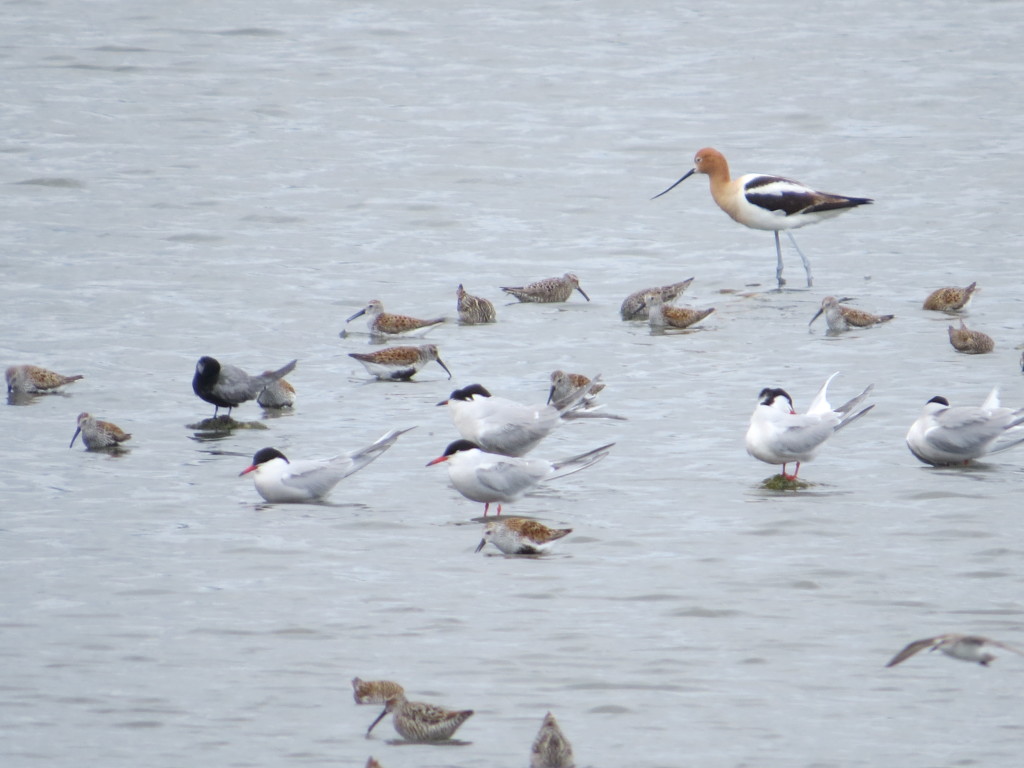 I spent much time agonizing over this ID after the fact as Common and Forster’s Terns are incredibly similar looking. Many hours were spent scouring images on Google, studying Sibley, etc. Common Terns have reddish-orange bills while Forster’s Terns have a straight-up orange color. The red really popped when I looked at these birds.
I spent much time agonizing over this ID after the fact as Common and Forster’s Terns are incredibly similar looking. Many hours were spent scouring images on Google, studying Sibley, etc. Common Terns have reddish-orange bills while Forster’s Terns have a straight-up orange color. The red really popped when I looked at these birds.
Another field mark of the Common Tern are the wings. The primaries of a Common are gray and flush with the tail while the primaries of the Forster’s are whitish or frosty and shorter than the much longer tail.
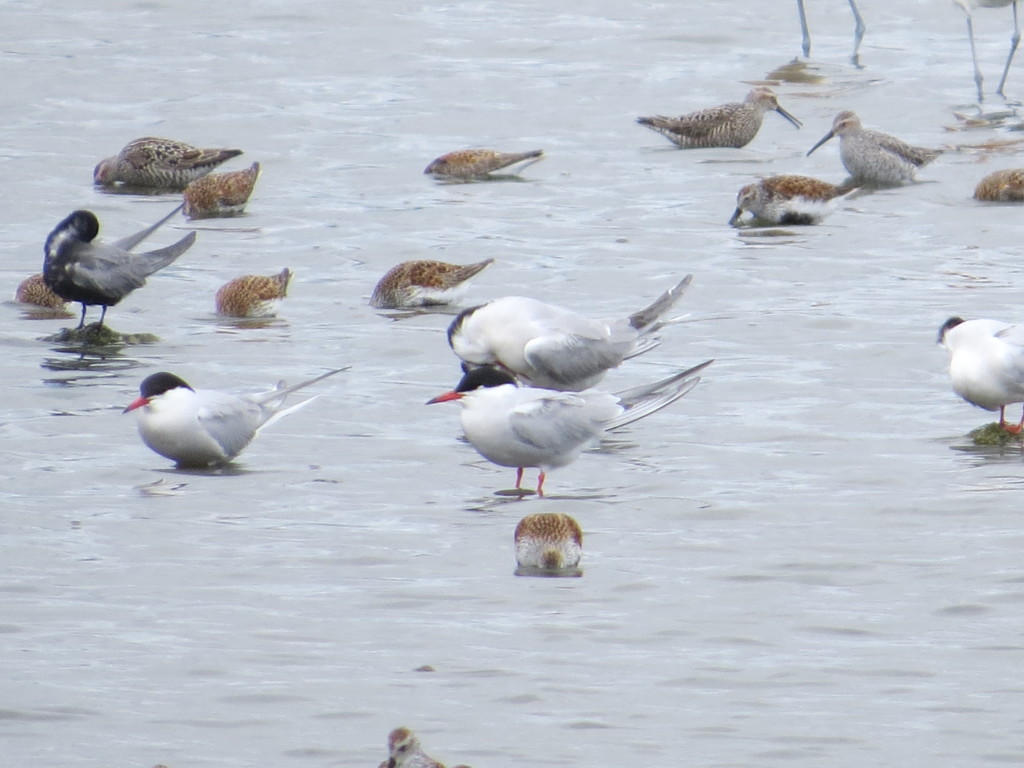
Finally, I found evidence of a remnant dark carpal bar which Common Terns have during the winter months before the black bar fades to gray.
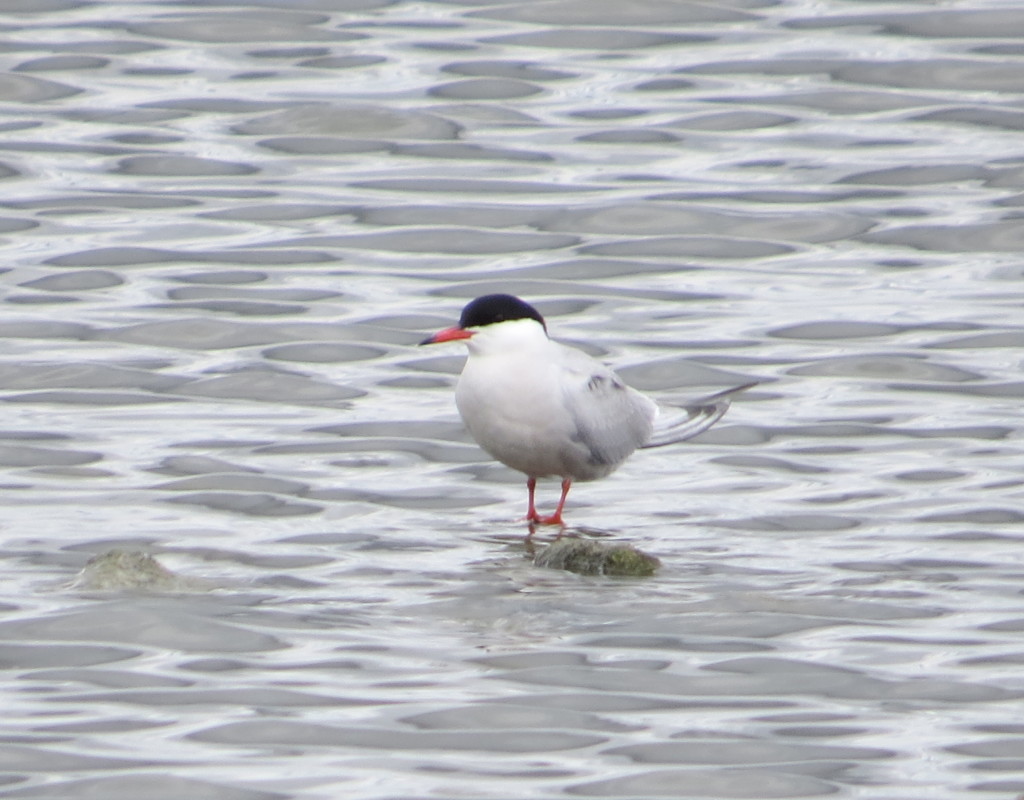
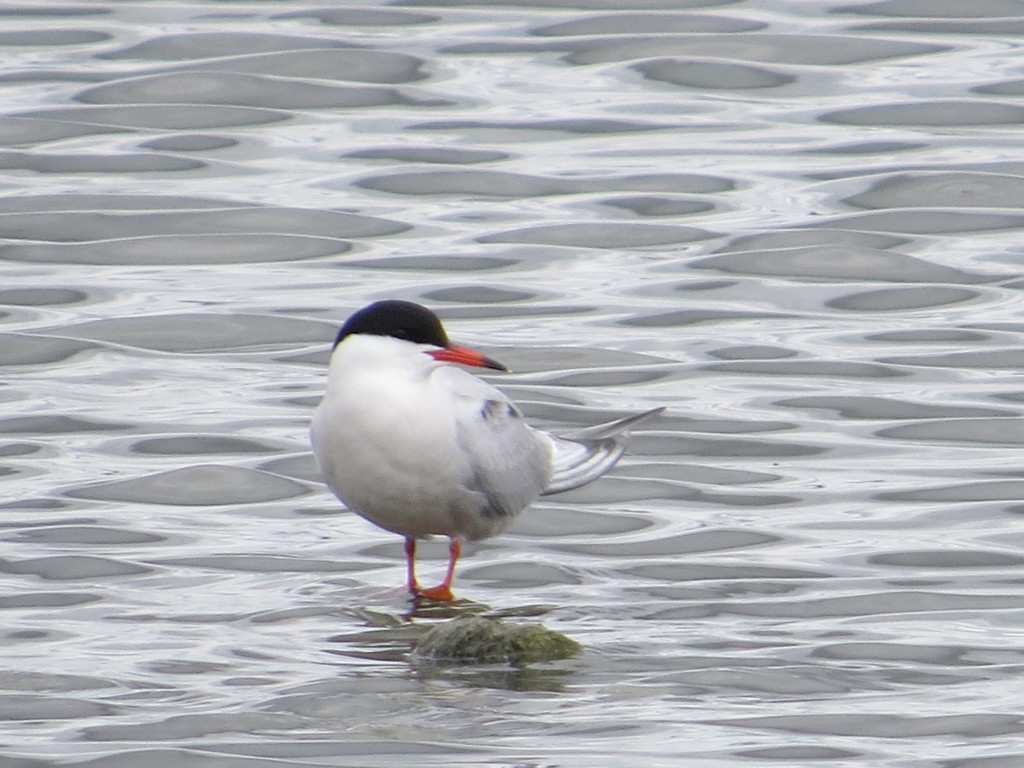
The birders among you have already detected some great shorebirds. American Avocets were plentiful with a dozen birds representing their species. This elegant bird is always a rare treat during migration in Minnesota.
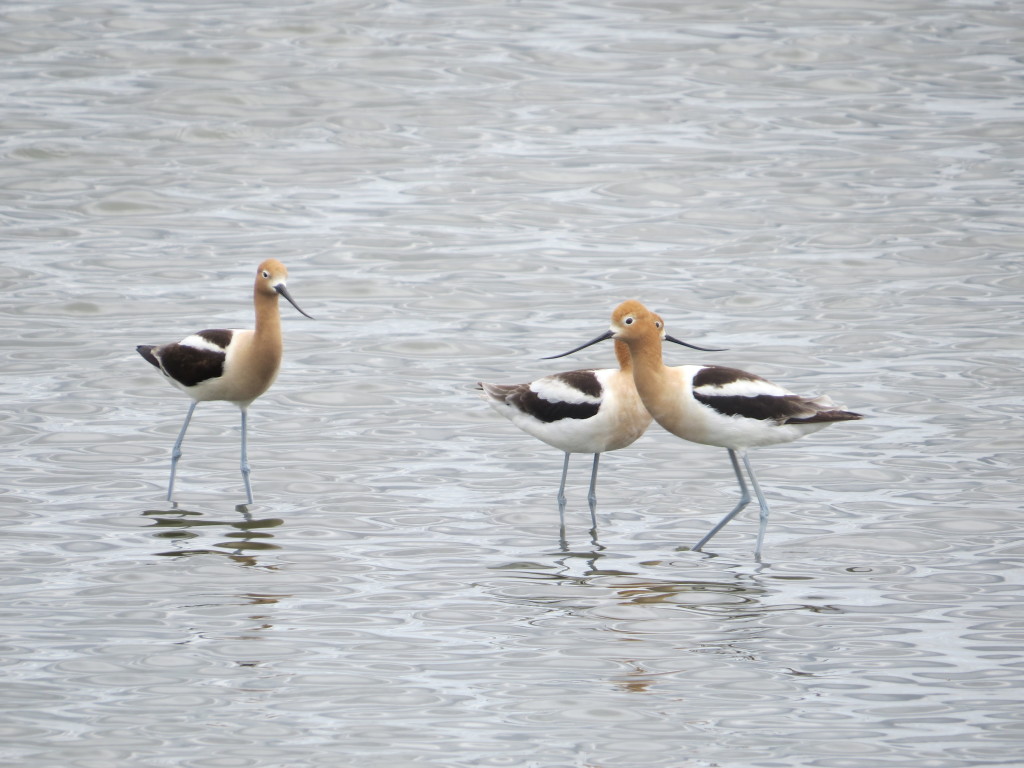
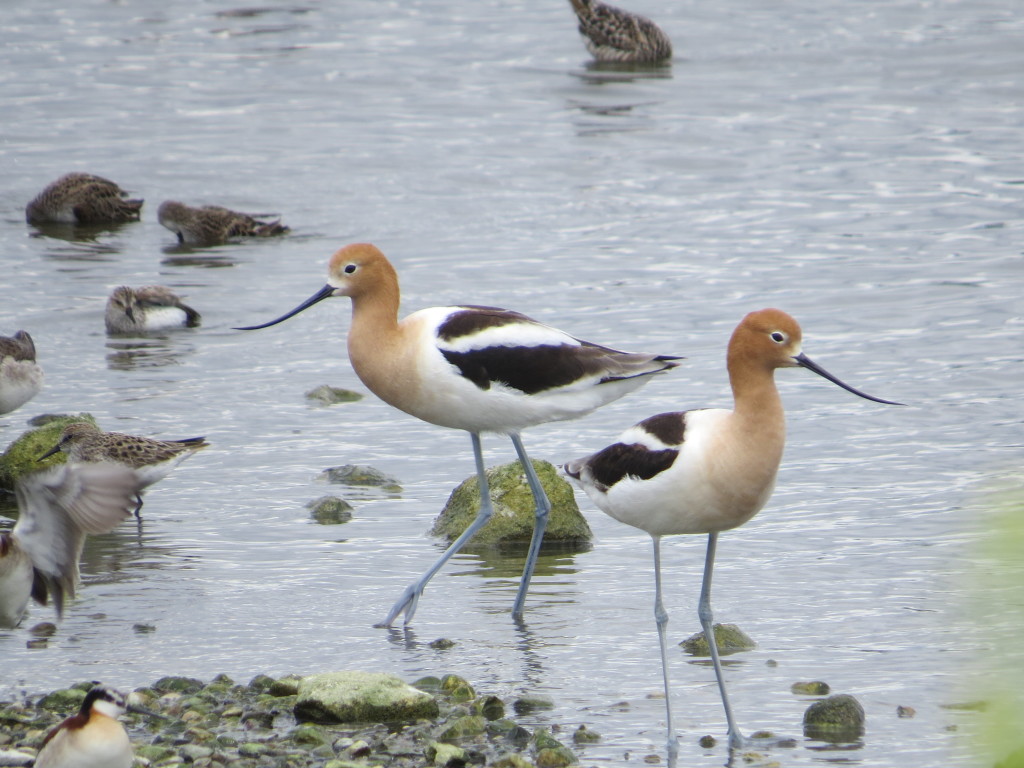
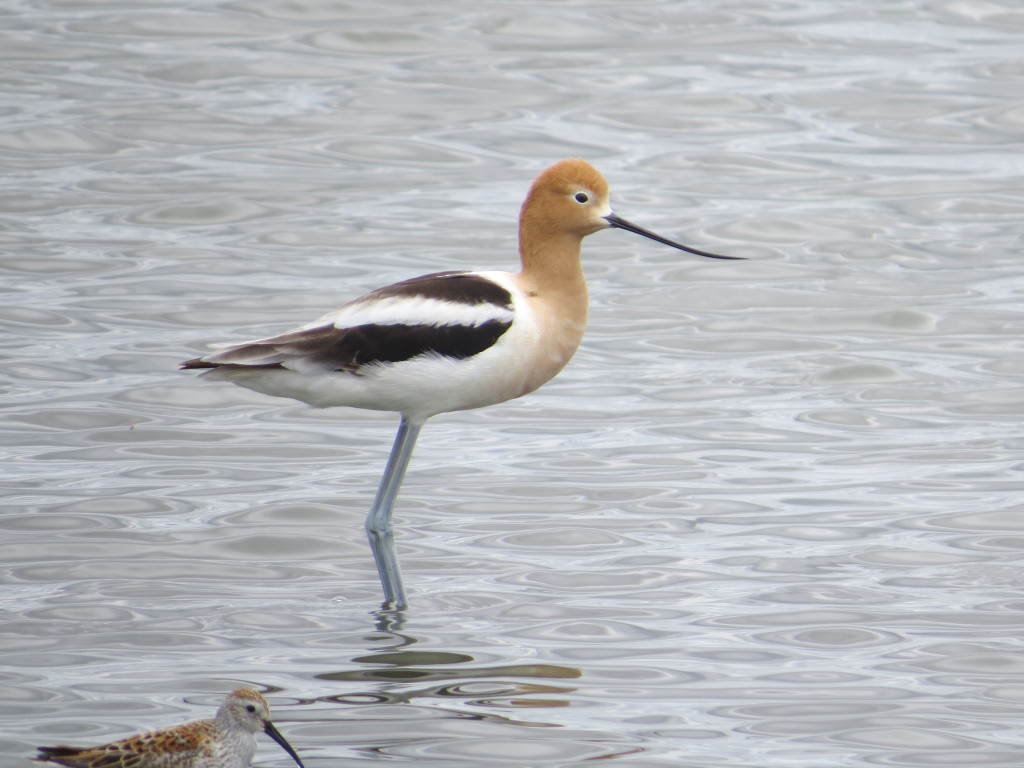
Black Terns are summer residents here, but it was nice to see one up close and still.
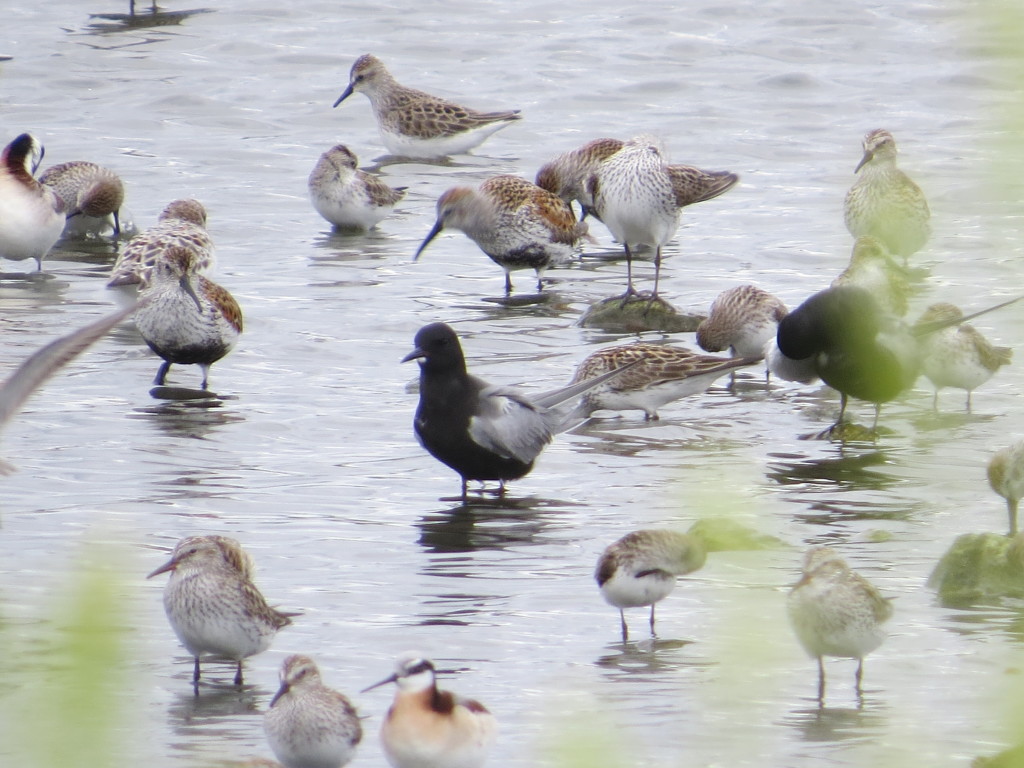 Dunlin were excessively plentiful and quite striking in full breeding plumage.
Dunlin were excessively plentiful and quite striking in full breeding plumage.
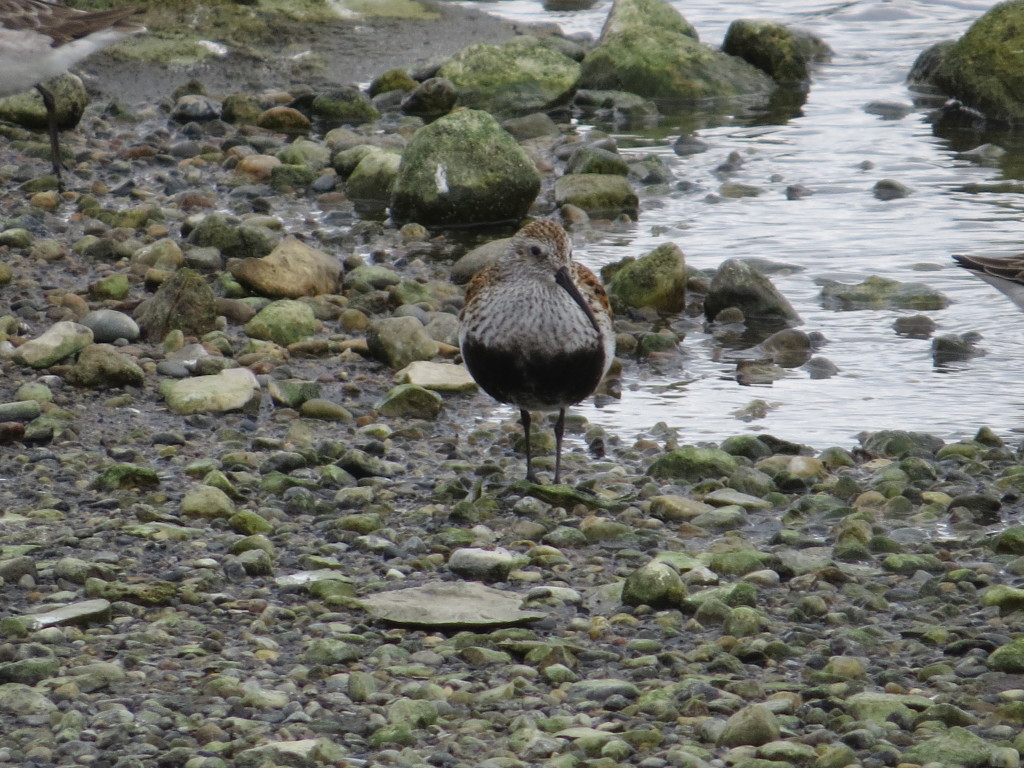
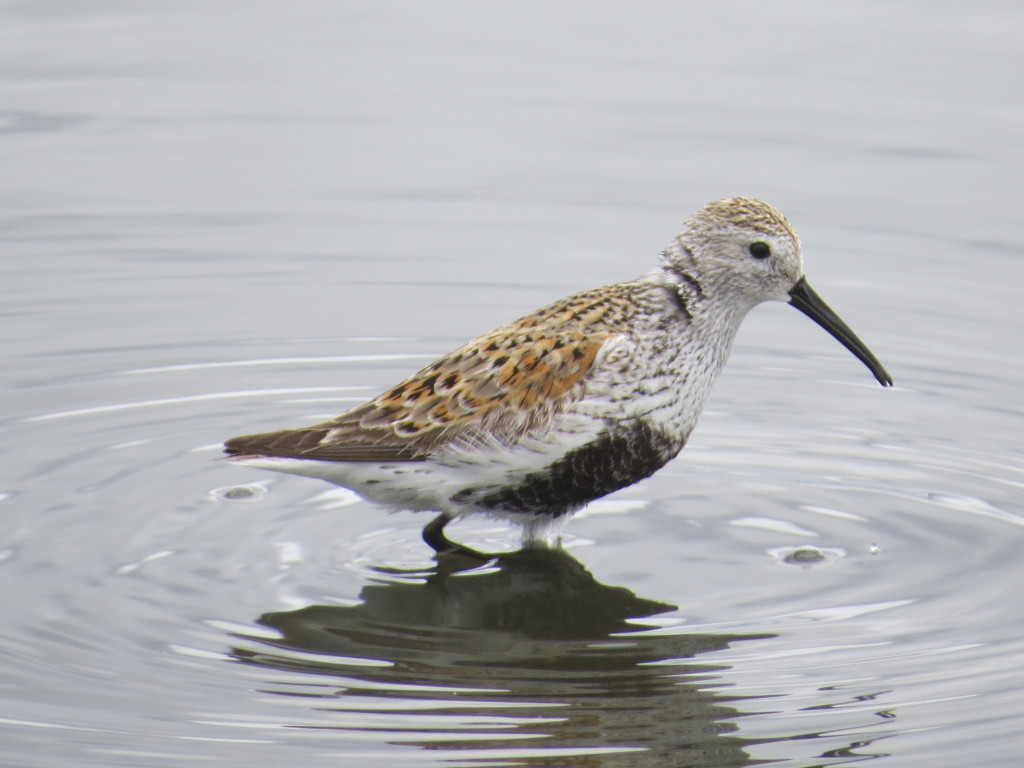
Stilt Sandpipers are also fun and handsome shorebirds.
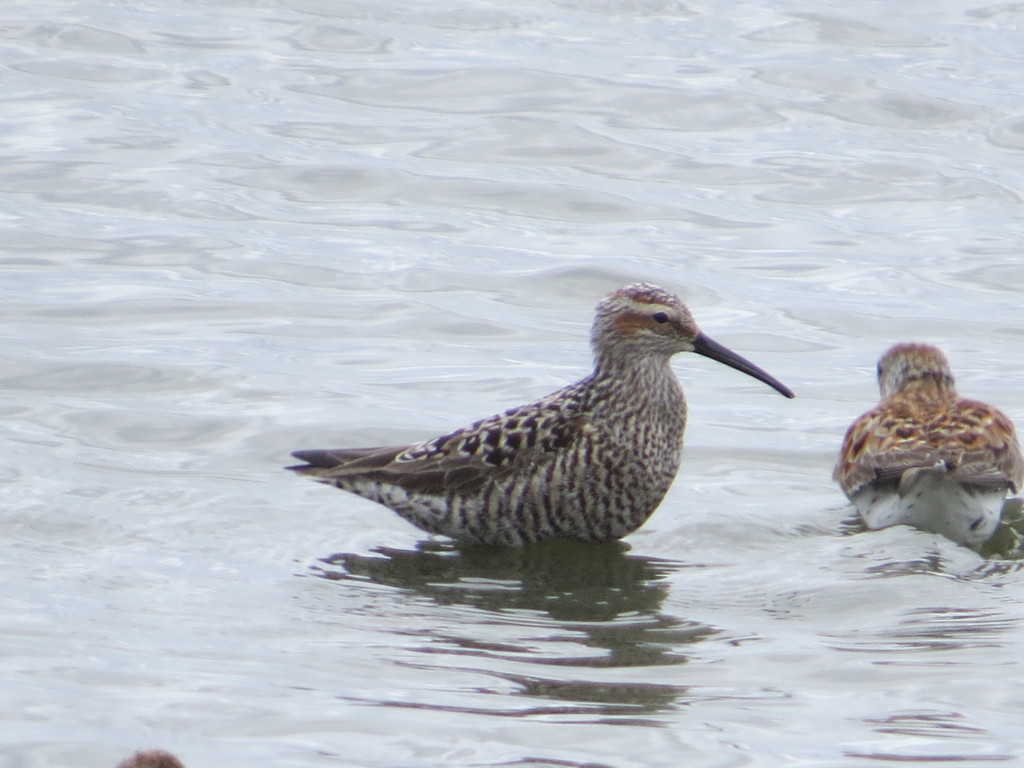
Another great addition to the shorebird mix were two Ruddy Turnstones, a crazily-patterned shorebird.
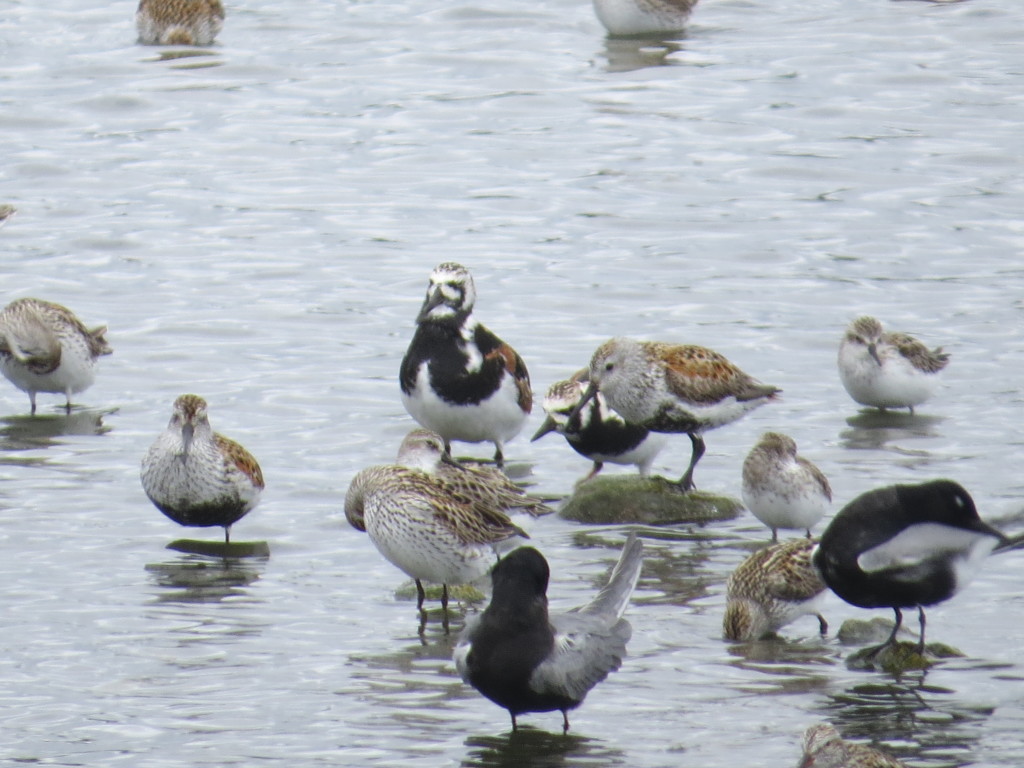 There was a lot going on with the shorebirds, both in numbers of birds and numbers of species. Wilson’s Phalaropes and White-rumped Sandpipers can be seen in my photos, but I didn’t focus any of my photography efforts on them. I probably could have spent hours photographing all these shorebirds, but I wanted to take another crack at that White-eyed Vireo and the day was already getting long for the non-birders. It was time to head back to New Ulm and hit the trail one last time.
There was a lot going on with the shorebirds, both in numbers of birds and numbers of species. Wilson’s Phalaropes and White-rumped Sandpipers can be seen in my photos, but I didn’t focus any of my photography efforts on them. I probably could have spent hours photographing all these shorebirds, but I wanted to take another crack at that White-eyed Vireo and the day was already getting long for the non-birders. It was time to head back to New Ulm and hit the trail one last time.
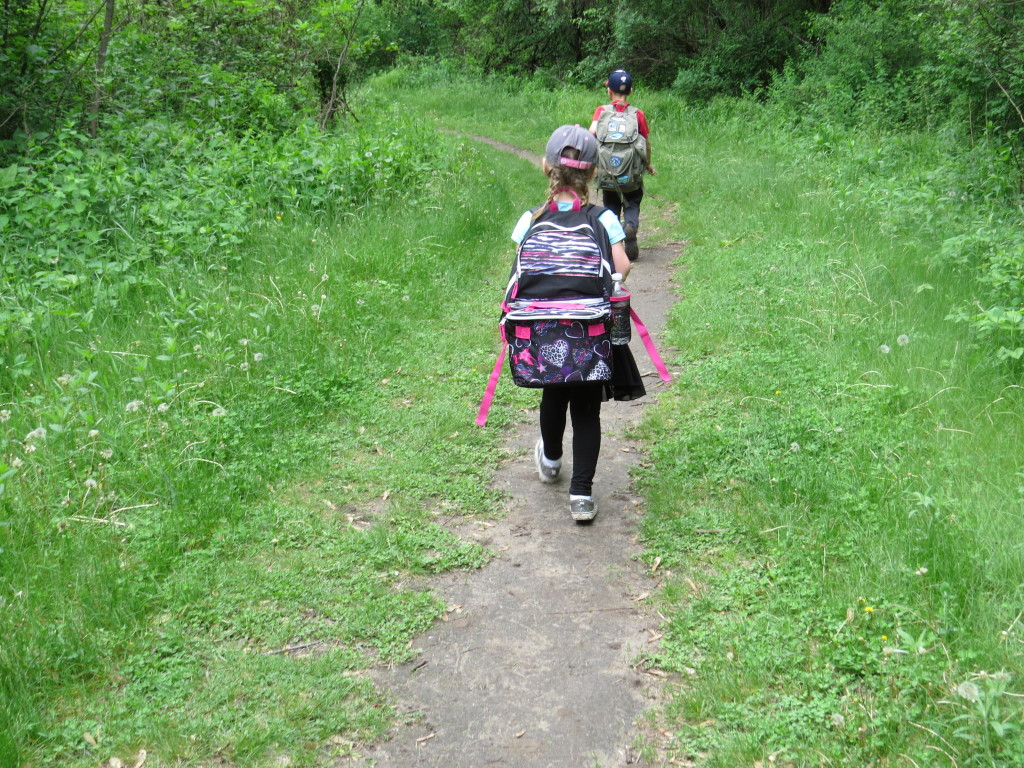
Joining us this time were Joel and Amanda Schmidt from back home. It didn’t take the six of us long to hear the White-eyed Vireo. Joel and I bushwhacked and tried to get on it, but we just couldn’t get a visual despite a valiant effort. I had to give up for real and make the painful decision to go ahead and count this bird as a lifer despite it being heard-only. I normally don’t like to do that, but exceptions sometimes need to be made for vagrant visitors of the Vireo variety. Precedence has already been set with my Bell’s Vireo lifer.
As we were about to part company with Joel and Amanda, we heard the soft bee-buzzz of a Blue-winged Warbler! I may not have been hearing things earlier after all! In no time we got some incredible looks at a Warbler I have only seen twice before.
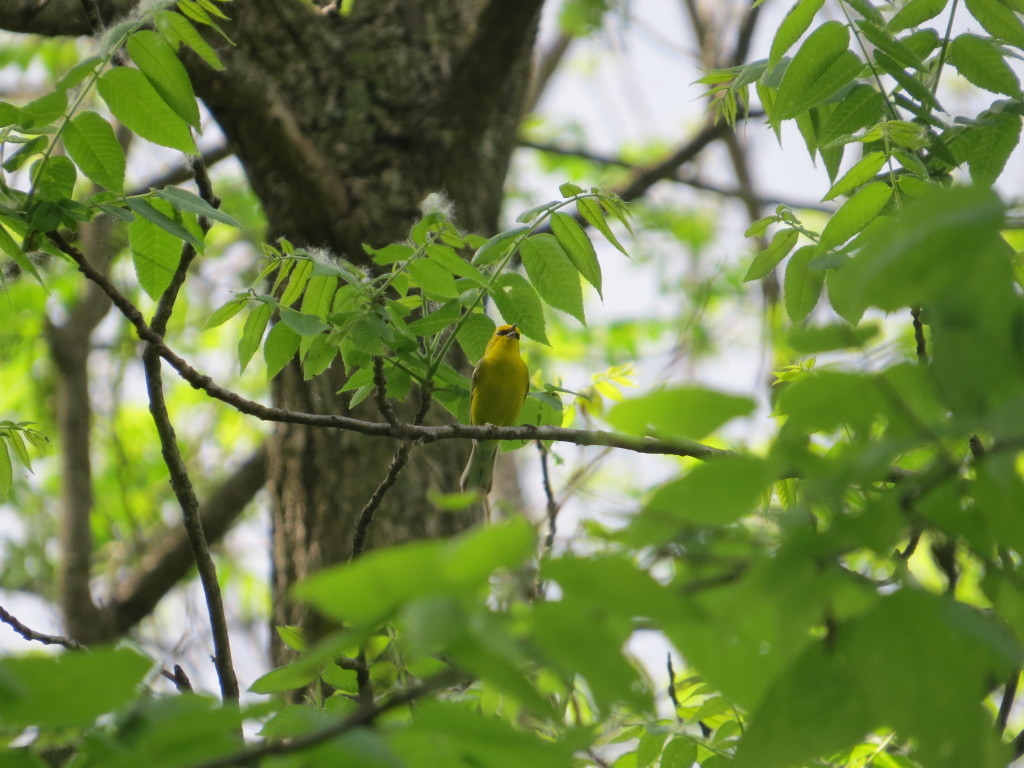
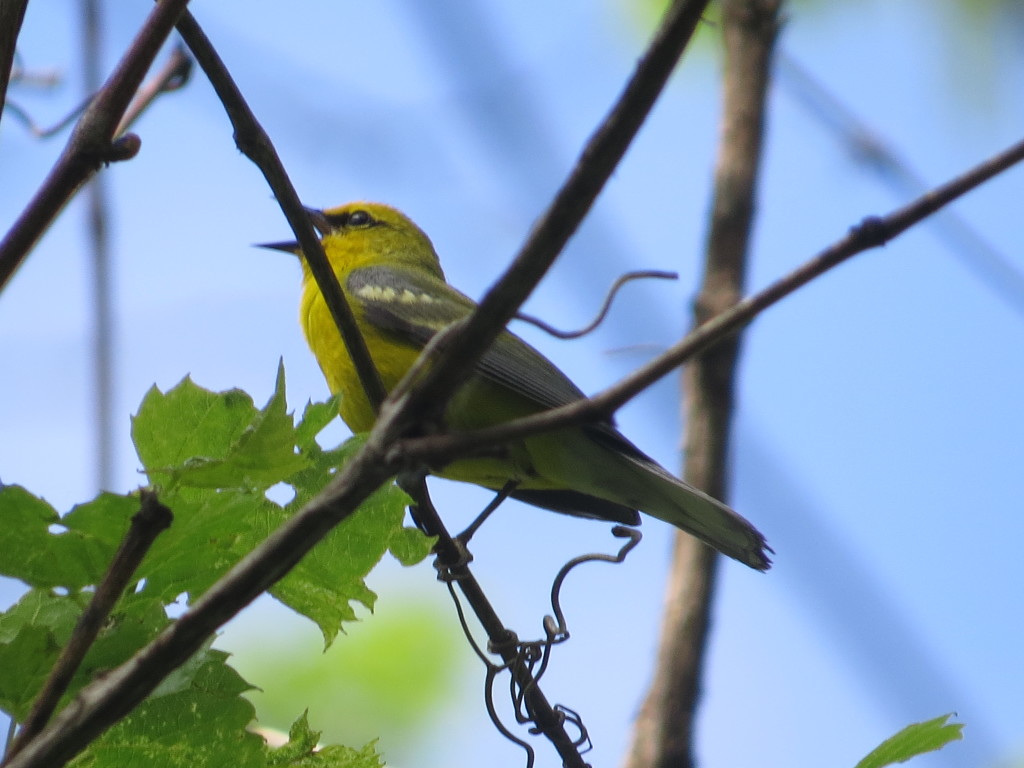 The Blue-winged Warbler was another great consolation prize in a day full of consolation goodies. It felt good to get better photos of this species.
The Blue-winged Warbler was another great consolation prize in a day full of consolation goodies. It felt good to get better photos of this species.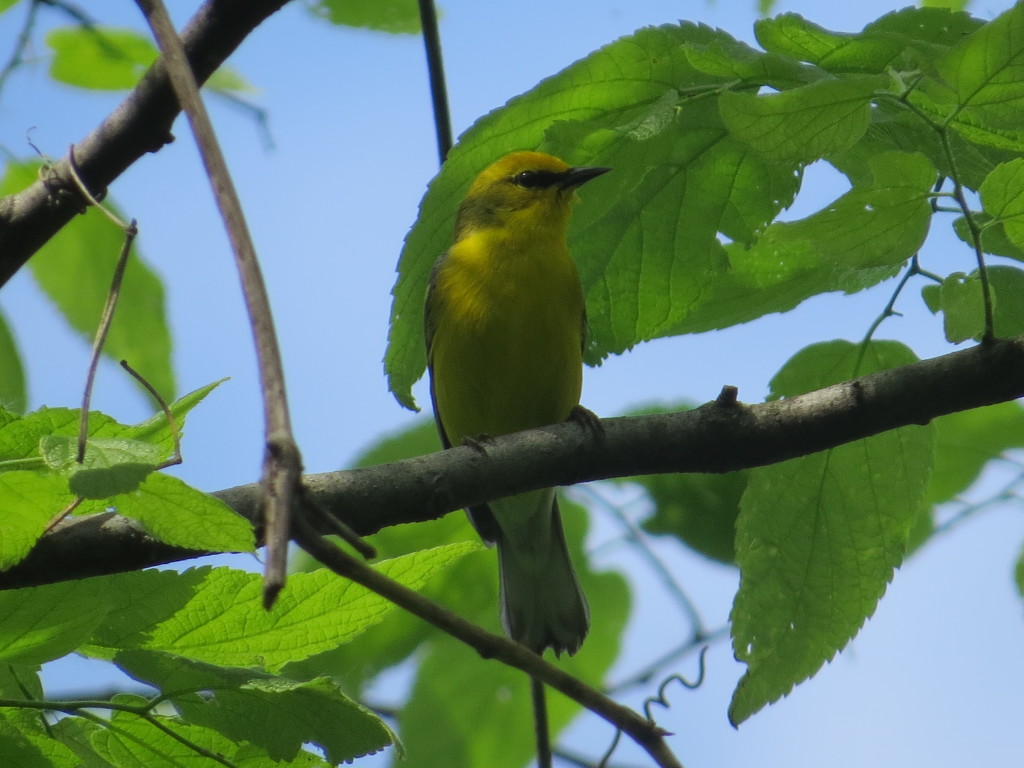 So, we went to see a White-eyed Vireo and failed in that regard. However, this day was an unimaginable lifer and FOY grab. Getting four lifers (WEVI, HUGO, SAND, COTE) in a day instate is unheard of at this stage in our birding. Topping it off with some incredible shorebirds like the Avocets and Turnstones as well as the Blue-winged Warbler really made for an exciting day back on our old stomping grounds.
So, we went to see a White-eyed Vireo and failed in that regard. However, this day was an unimaginable lifer and FOY grab. Getting four lifers (WEVI, HUGO, SAND, COTE) in a day instate is unheard of at this stage in our birding. Topping it off with some incredible shorebirds like the Avocets and Turnstones as well as the Blue-winged Warbler really made for an exciting day back on our old stomping grounds.
I’ve announced it before that there’s a lot more coming up, and even after such announcements, more incredible birding keeps happening. Now in addition to the Colorado birds and more recent lifers near home (one being nocturnal!), wait until you see WHO we went birding with and what we helped him find! Oh, and pretty soon we will be vacationing in Wisconsin’s Apostle Islands on the south shore of Lake Superior. We’ll see what comes of that. All I’ll say is that kayaks may be deployed; an endangered species may be had.
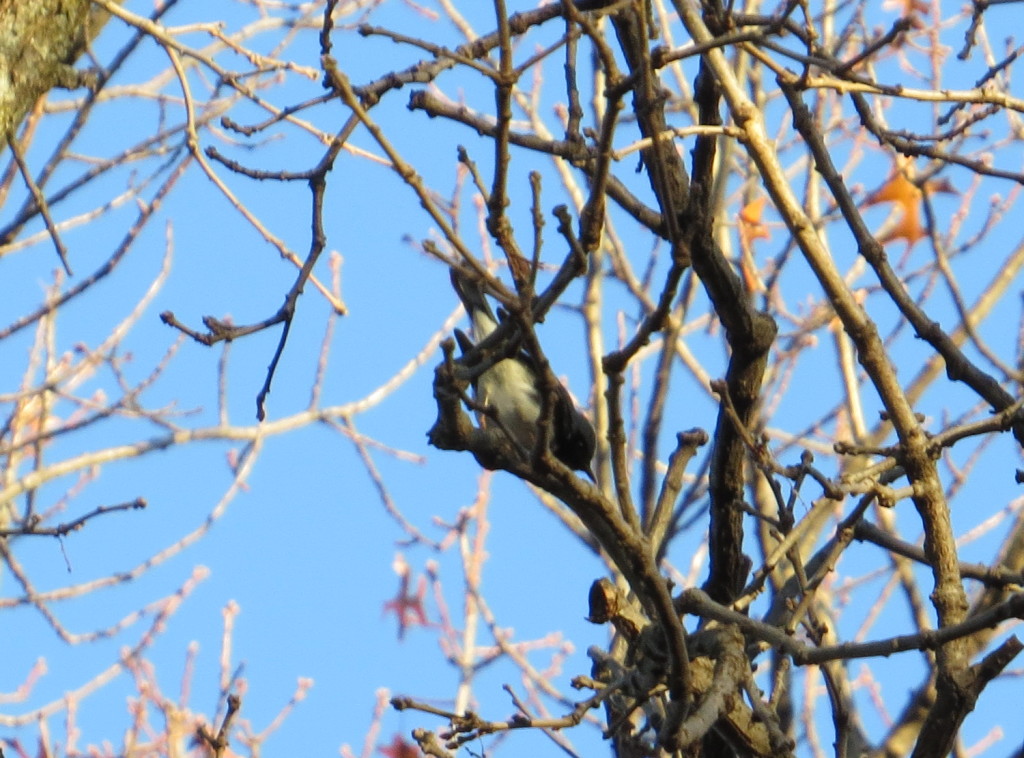
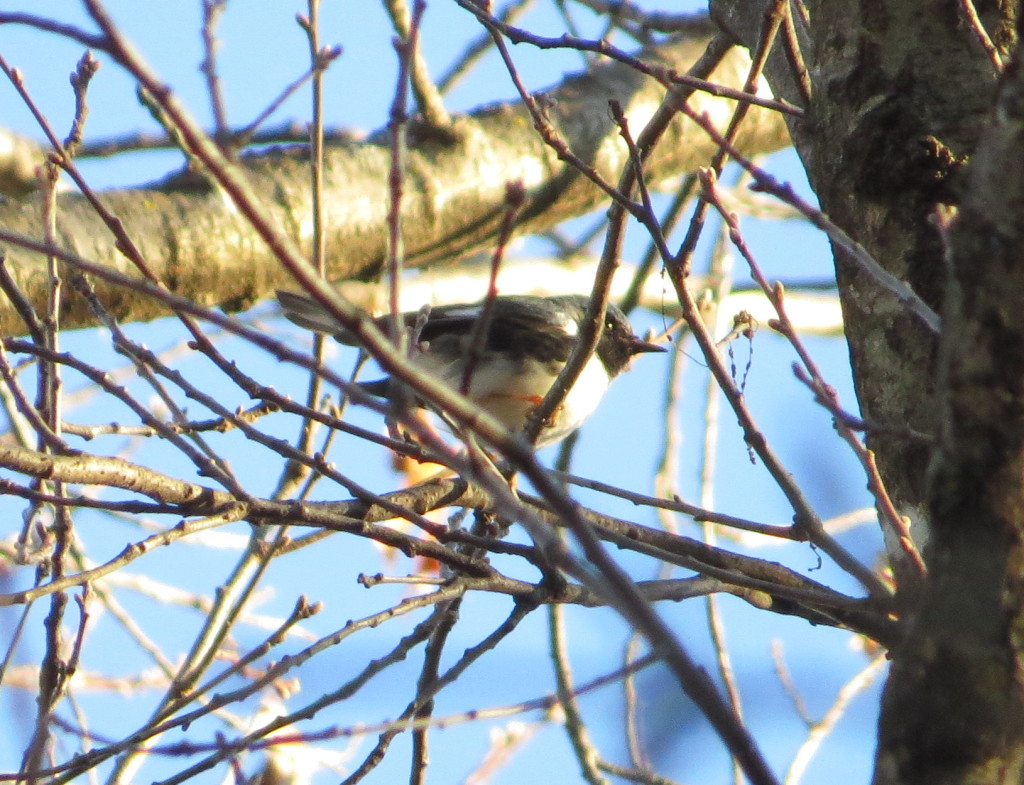
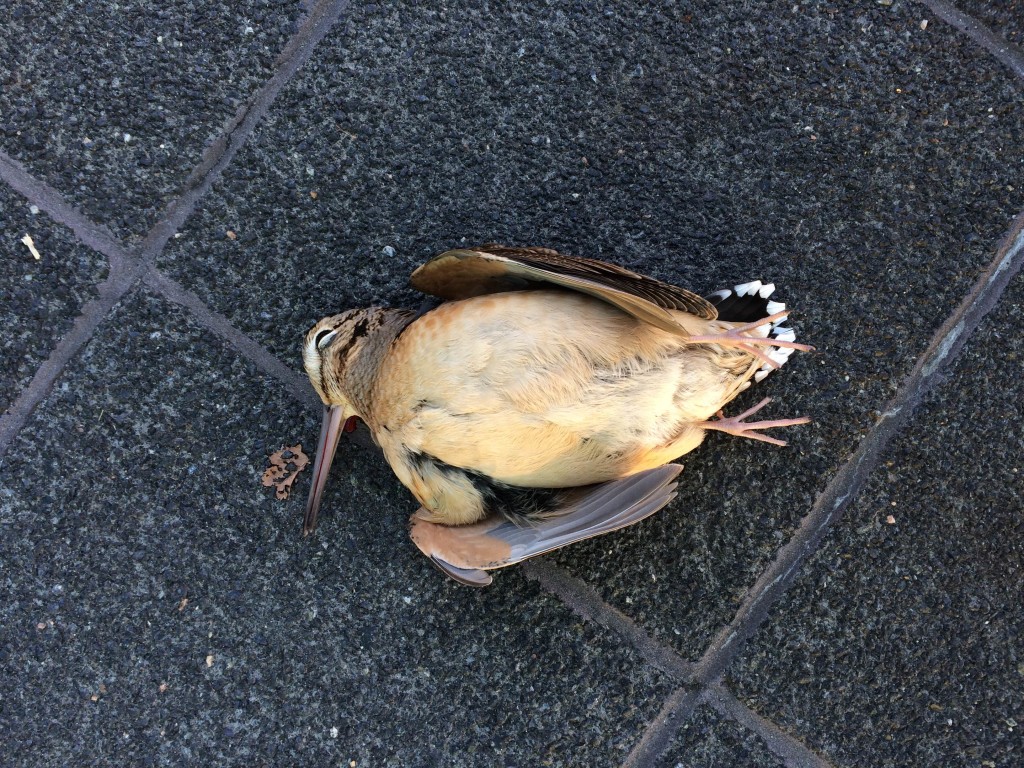
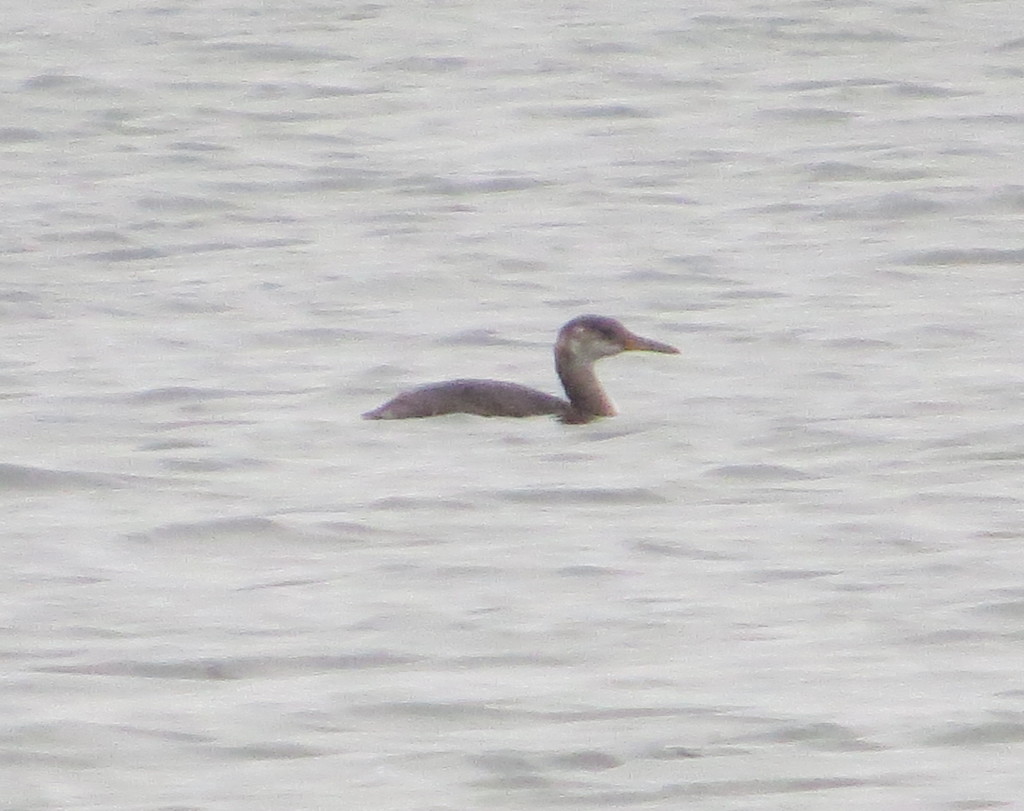 We shall see if AZ makes the next post, but it’s looking doubtful as the vagrant party just won’t stop. ABWCH will hopefully have a tidy little write-up from South Dakota after the weekend. Keep your fingers crossed everybody.
We shall see if AZ makes the next post, but it’s looking doubtful as the vagrant party just won’t stop. ABWCH will hopefully have a tidy little write-up from South Dakota after the weekend. Keep your fingers crossed everybody.
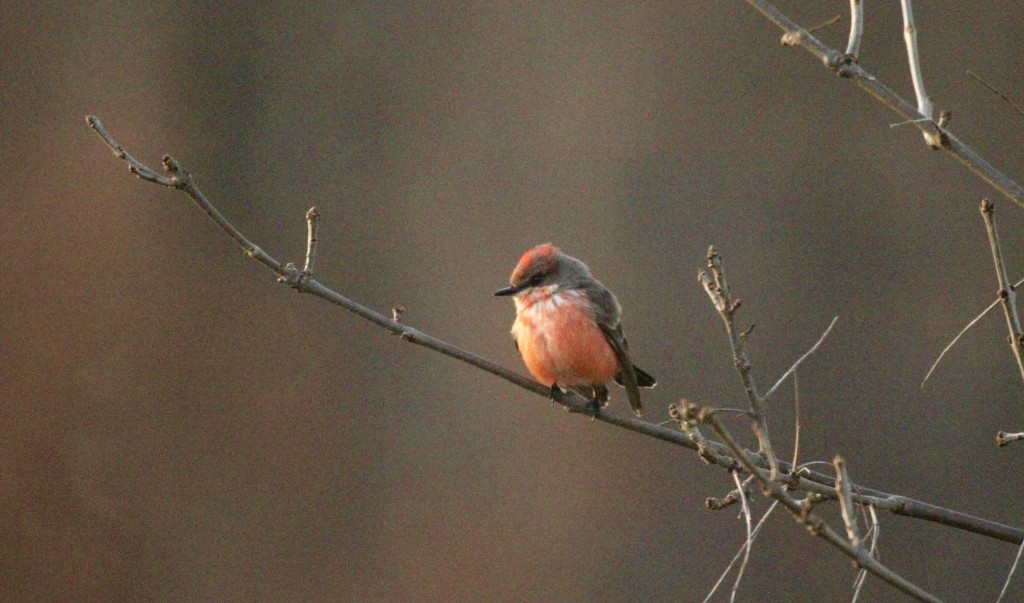
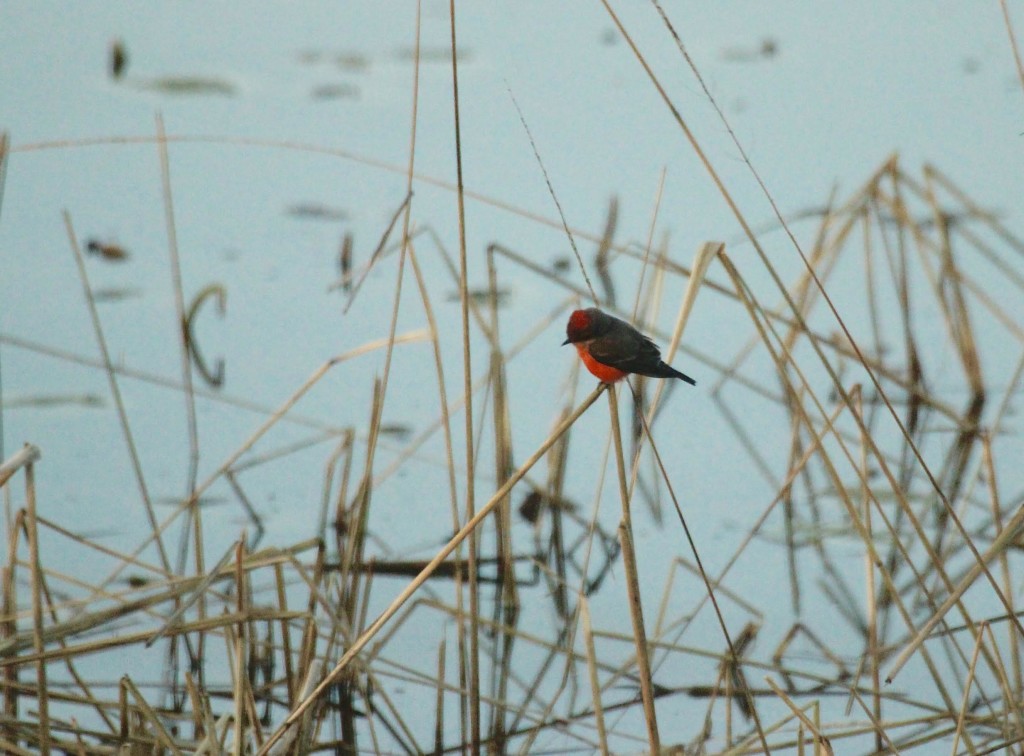
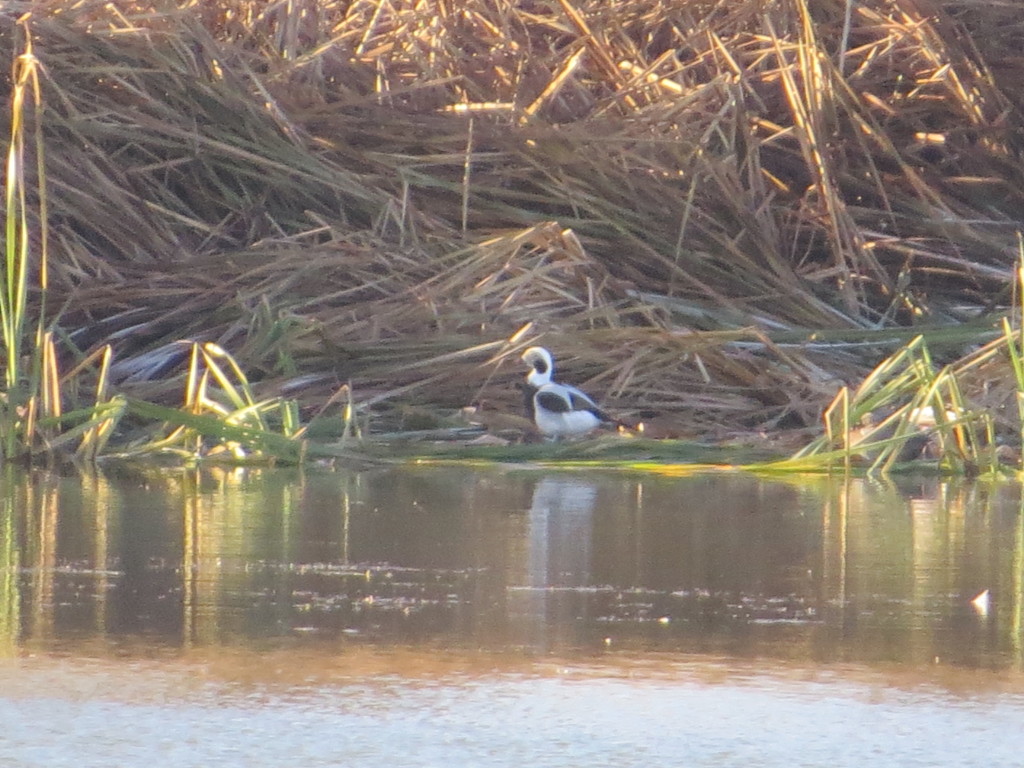 Such a striking bird. Check out this chest!
Such a striking bird. Check out this chest!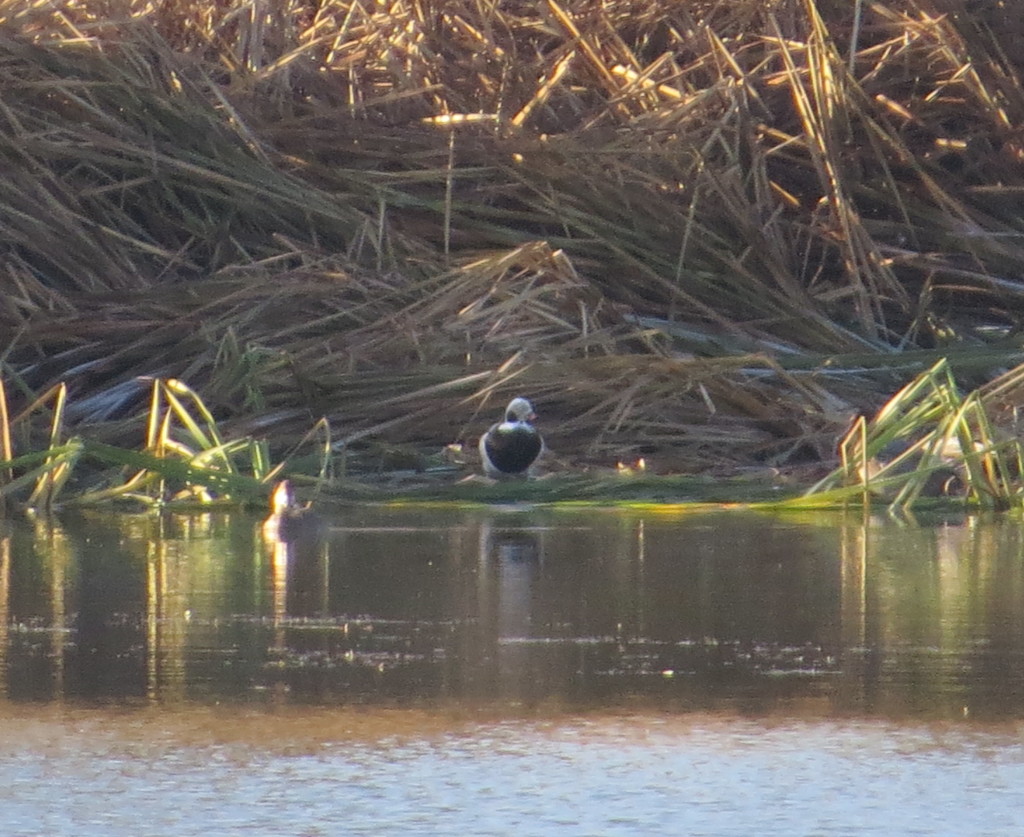
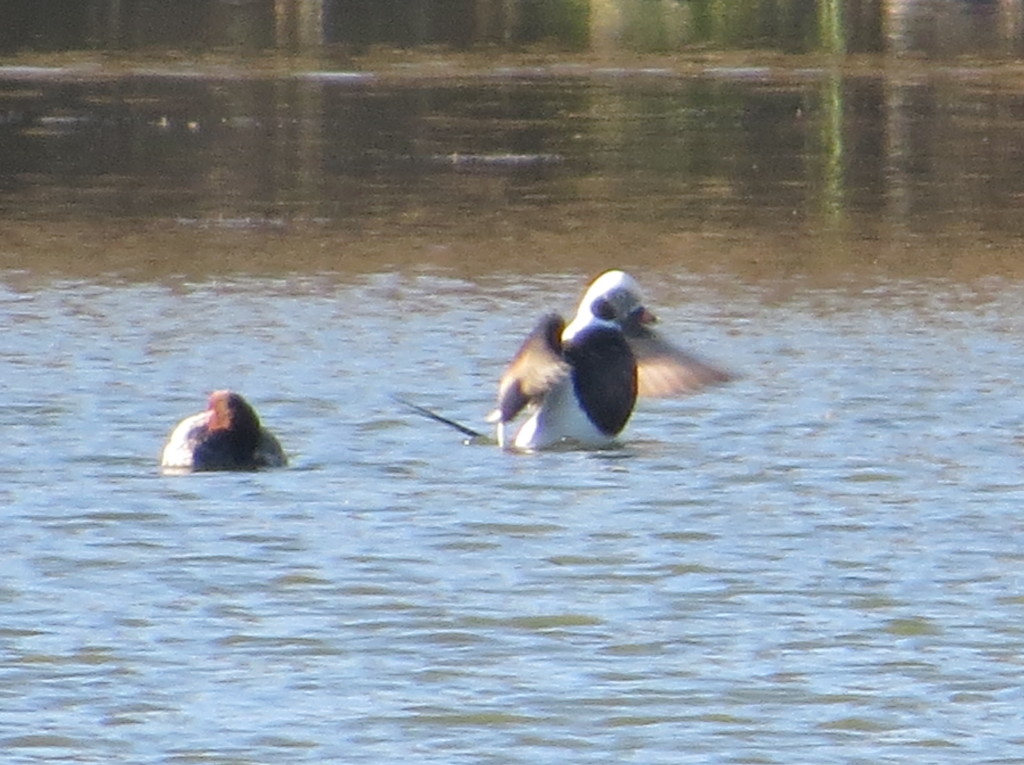 Even though it was far away, it was still such a treat to watch this handsome duck. Our lifer a couple a years ago was an immature-type bird that did not live up to its name.
Even though it was far away, it was still such a treat to watch this handsome duck. Our lifer a couple a years ago was an immature-type bird that did not live up to its name.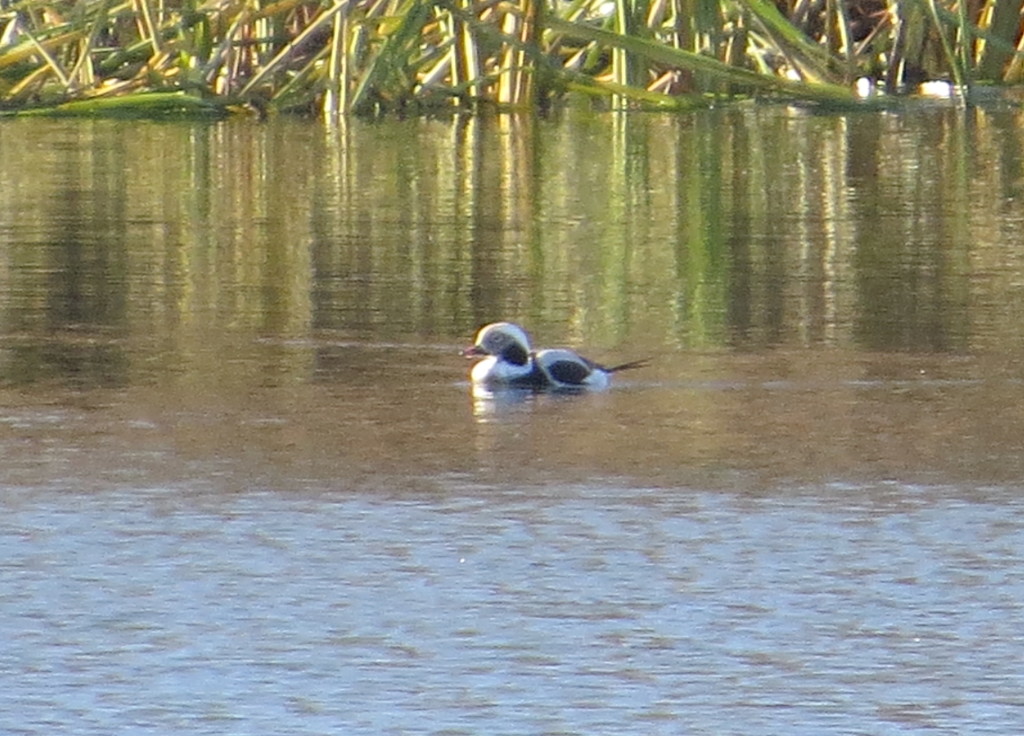
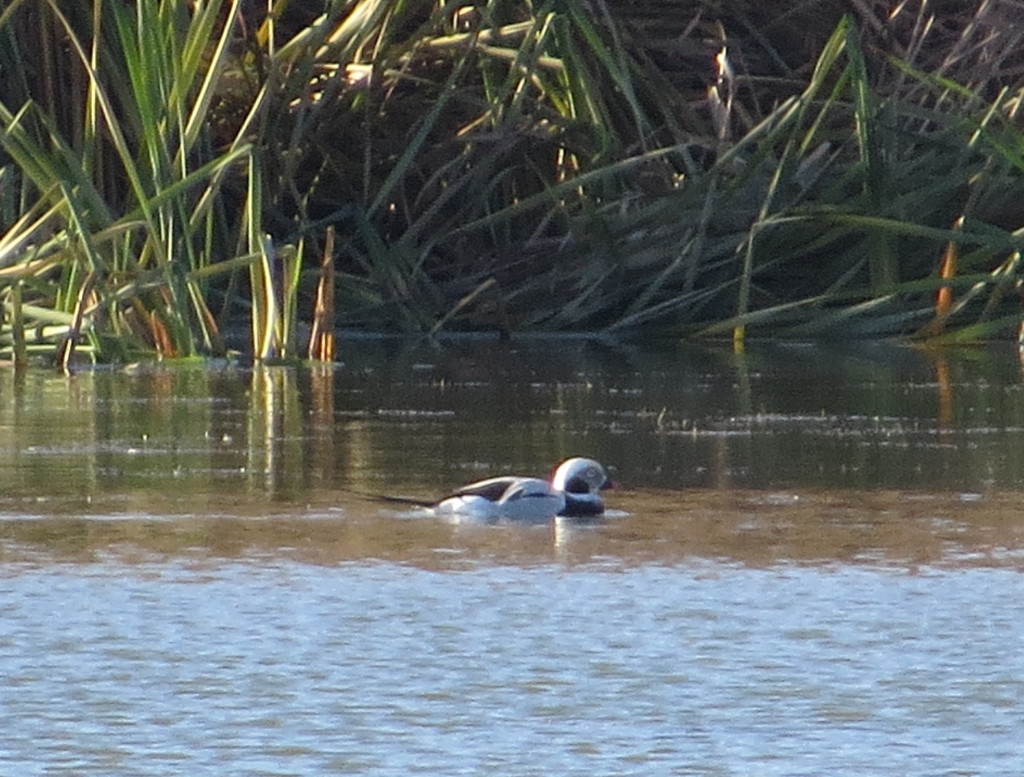 After that fun, Evan and I hit the road for the 3-hour trip home. Our second Northern Shrike of the fall was a nice bonus on our drive. Despite the memory card snafu, it was a memorable trip with Evan where we got to see some really fantastic birds for Minnesota.
After that fun, Evan and I hit the road for the 3-hour trip home. Our second Northern Shrike of the fall was a nice bonus on our drive. Despite the memory card snafu, it was a memorable trip with Evan where we got to see some really fantastic birds for Minnesota. I drove along the west shore of the lake and pulled into a boat launch to scan the waters. Right away I saw a binocular-clad gentleman loading a spotting scope into a shiny Prius–this birder could be spotted a mile away. I asked him if he saw the duck. He told me no and said he’d missed on it multiple times. Odd, I thought, as I recalled the duck being reported every single day for the better part of a week. After this exchange, he and I both headed to Orchard Lake Park on the south end of the lake where people had said was the best place from which to see the Scoter. He had the lead as I followed his car into the parking lot. Rather than parking in a stall, he faced his vehicle directly at the water. I parked, looked at the water and instantly saw a distant, giant, black-and-white blob that had Surf Scoter GISS written all over it. Before I could get my binoculars up to verify, the other birder, who never left his car, turned around after 30 seconds and drove out of the park! My desire to look at my Surf Scoter lifer was suddenly replaced by the fear that this guy might have, somehow, missed it. Was it diving when he looked? Did he not recognize this juvenile form of this species? Did he see it, get his tic, and just peel out? Even if the guy was just a lister, who doesn’t spend at least a couple minutes enjoying looking at an ocean-going Scoter in MINNESOTA? I panicked. I hesitated. Do I race after him on foot and pound on his trunk? Do I hop in my car and chase him down? You can’t save them all, I guess. Oh, well. Let’s have a look at that Surf Scoter…
I drove along the west shore of the lake and pulled into a boat launch to scan the waters. Right away I saw a binocular-clad gentleman loading a spotting scope into a shiny Prius–this birder could be spotted a mile away. I asked him if he saw the duck. He told me no and said he’d missed on it multiple times. Odd, I thought, as I recalled the duck being reported every single day for the better part of a week. After this exchange, he and I both headed to Orchard Lake Park on the south end of the lake where people had said was the best place from which to see the Scoter. He had the lead as I followed his car into the parking lot. Rather than parking in a stall, he faced his vehicle directly at the water. I parked, looked at the water and instantly saw a distant, giant, black-and-white blob that had Surf Scoter GISS written all over it. Before I could get my binoculars up to verify, the other birder, who never left his car, turned around after 30 seconds and drove out of the park! My desire to look at my Surf Scoter lifer was suddenly replaced by the fear that this guy might have, somehow, missed it. Was it diving when he looked? Did he not recognize this juvenile form of this species? Did he see it, get his tic, and just peel out? Even if the guy was just a lister, who doesn’t spend at least a couple minutes enjoying looking at an ocean-going Scoter in MINNESOTA? I panicked. I hesitated. Do I race after him on foot and pound on his trunk? Do I hop in my car and chase him down? You can’t save them all, I guess. Oh, well. Let’s have a look at that Surf Scoter…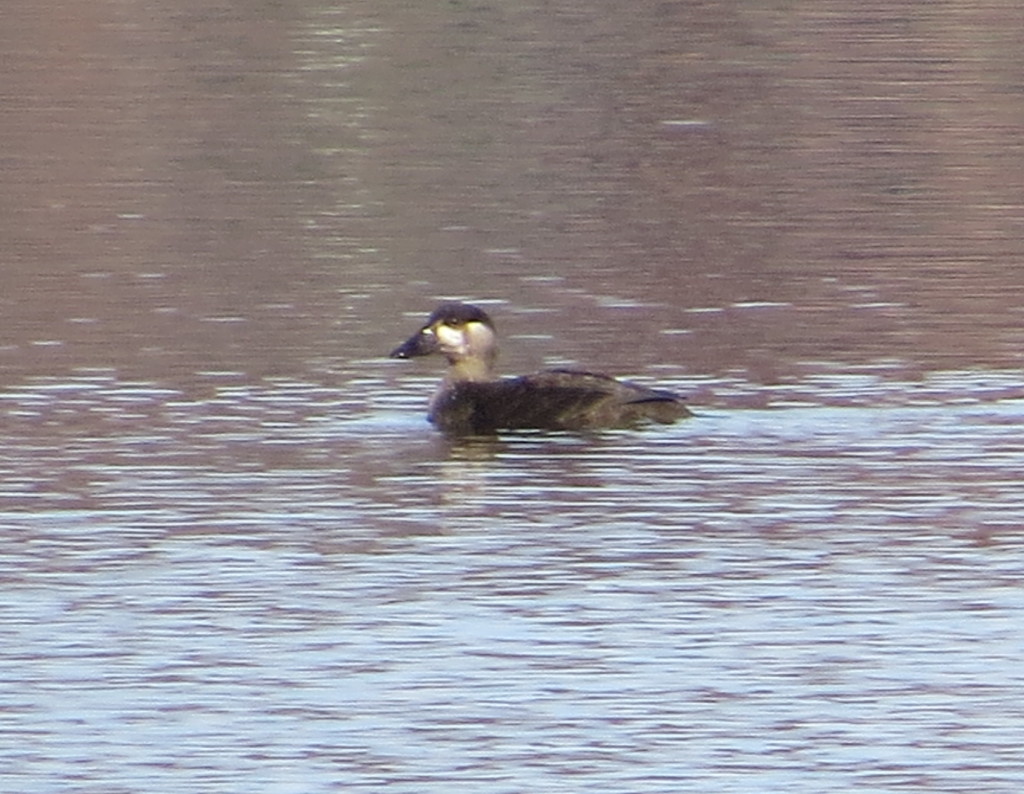 This is now my fifth species of sea duck in Minnesota with White-winged Scoter, Harlequin Duck, Common Eider, and Long-tailed Duck making up the others. I kind of prefer my sea ducks on the turbulent, cold waters of Lake Superior on a gray day. That kind of backdrop adds to the mystique and allure of sea ducks. Seeing one on a placid metro lake reflecting lingering fall colors on a 72° day is just kind of so-so.
This is now my fifth species of sea duck in Minnesota with White-winged Scoter, Harlequin Duck, Common Eider, and Long-tailed Duck making up the others. I kind of prefer my sea ducks on the turbulent, cold waters of Lake Superior on a gray day. That kind of backdrop adds to the mystique and allure of sea ducks. Seeing one on a placid metro lake reflecting lingering fall colors on a 72° day is just kind of so-so.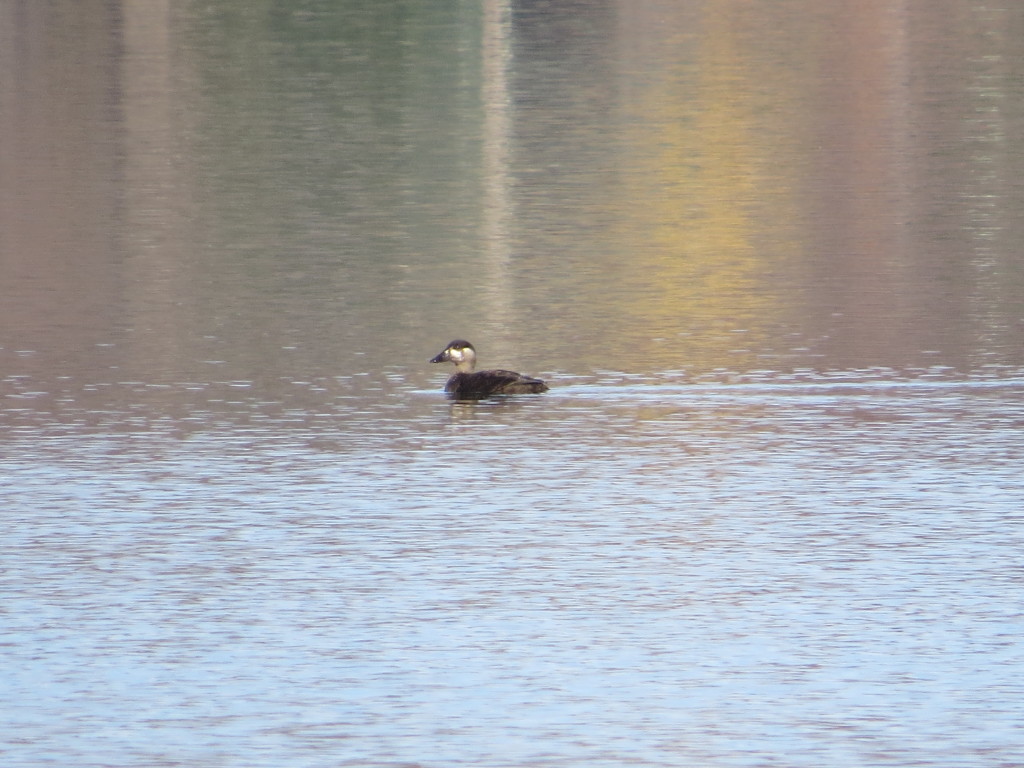 But even still. It’s cool. I mean, it’s a Scoter.
But even still. It’s cool. I mean, it’s a Scoter.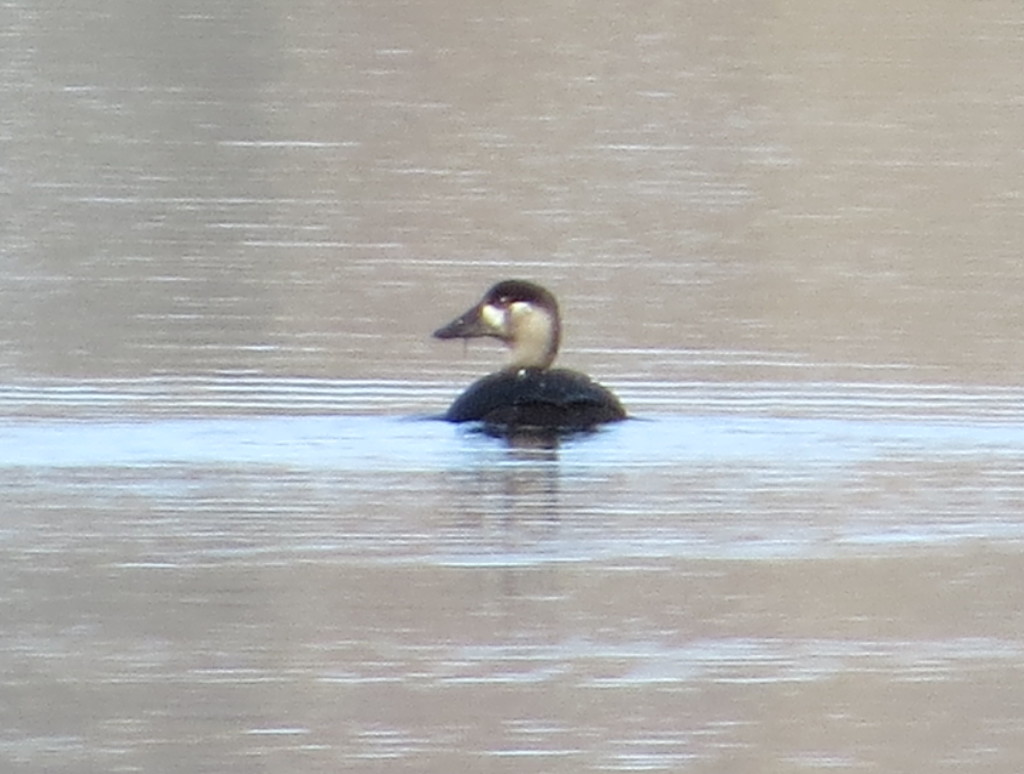
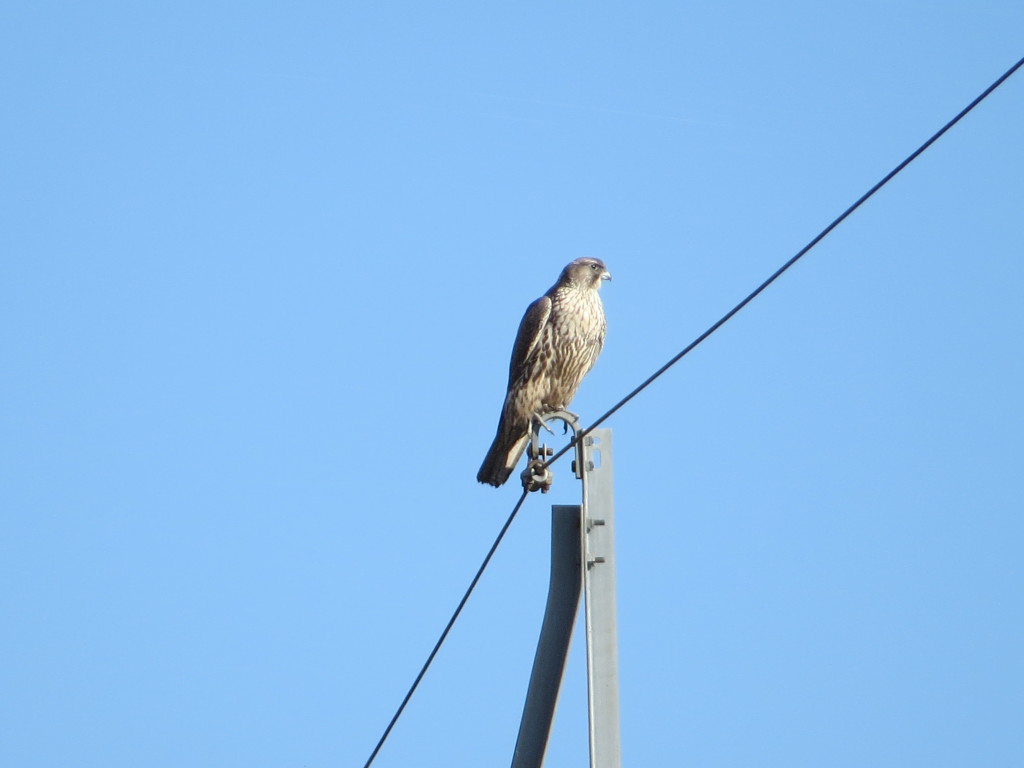
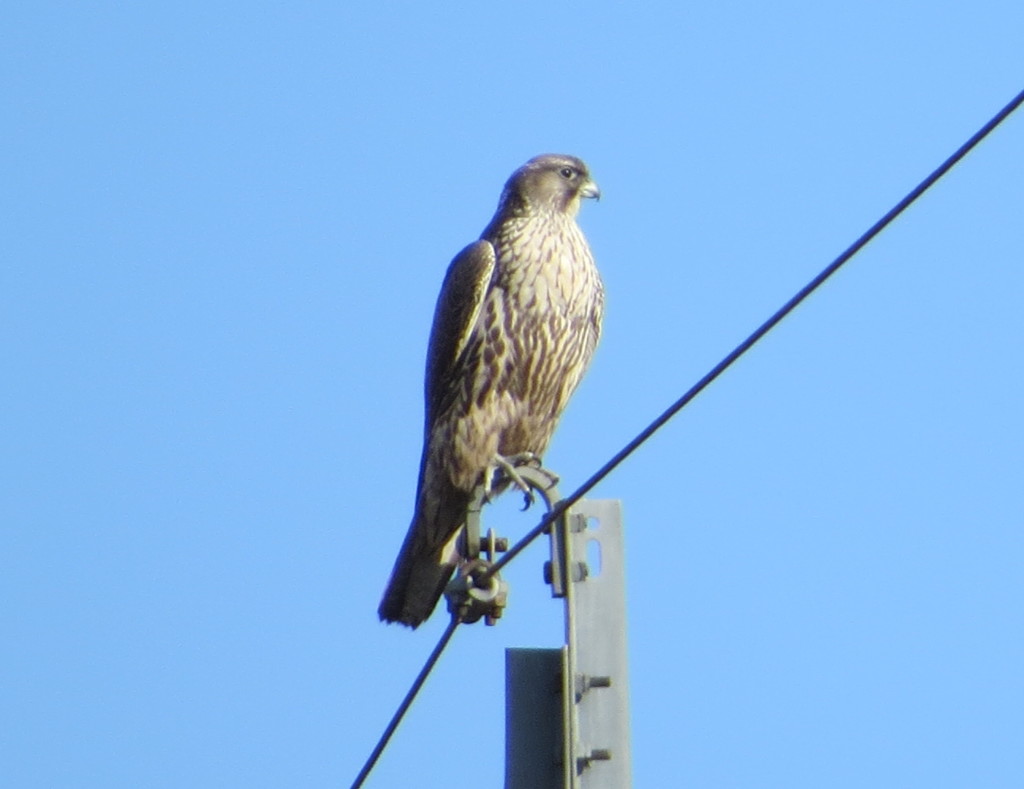
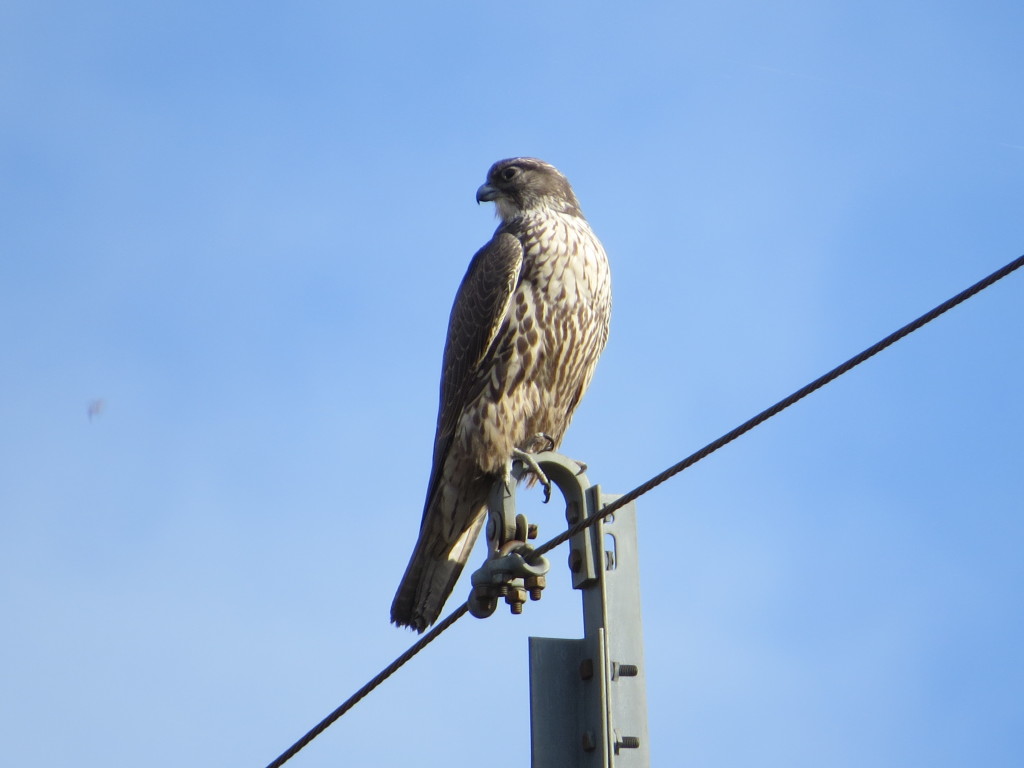
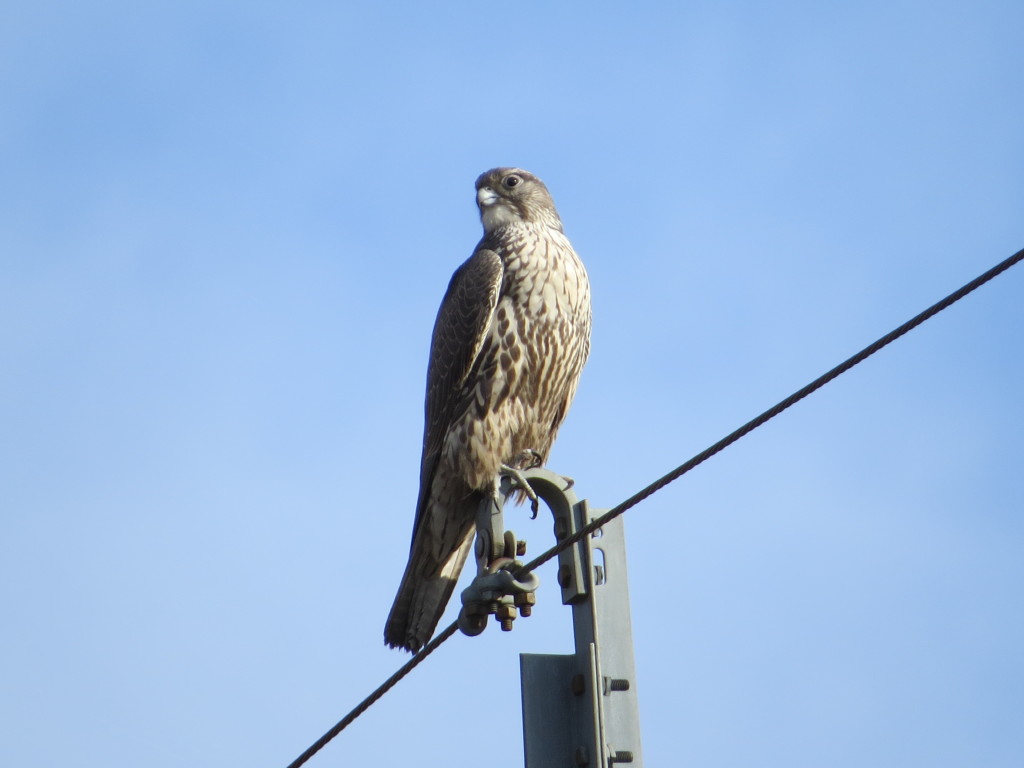
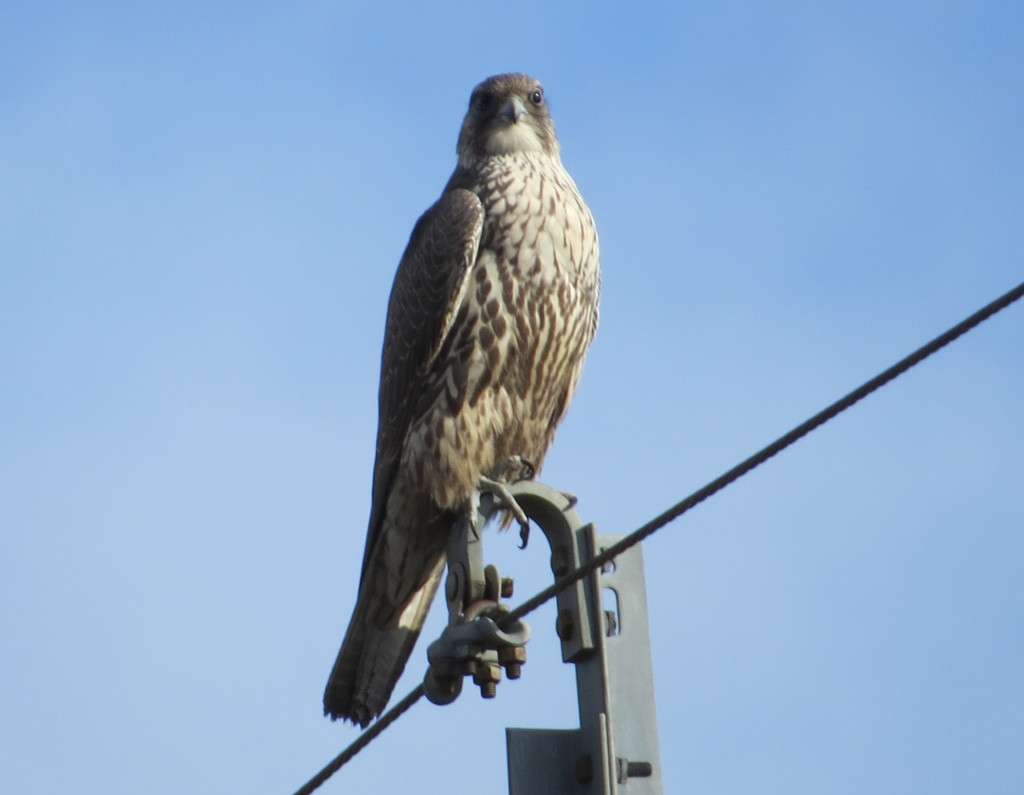 I still can’t believe I saw this bird; the adrenaline is still pumping. I thought it would be another 10 years at least before I’d get this arctic visitor on my Minnesota list (I got my lifer in WI last winter). Then I see a Gyrfalcon in my own county…and I never even knew it. I was caught off guard and completely unprepared for encountering such a rarity. It just goes to show that one can never study enough in this hobby and that even the most boring, familiar back roads can hold the monumental. So thanks, Bob, for chasing me down and pounding on my trunk.
I still can’t believe I saw this bird; the adrenaline is still pumping. I thought it would be another 10 years at least before I’d get this arctic visitor on my Minnesota list (I got my lifer in WI last winter). Then I see a Gyrfalcon in my own county…and I never even knew it. I was caught off guard and completely unprepared for encountering such a rarity. It just goes to show that one can never study enough in this hobby and that even the most boring, familiar back roads can hold the monumental. So thanks, Bob, for chasing me down and pounding on my trunk.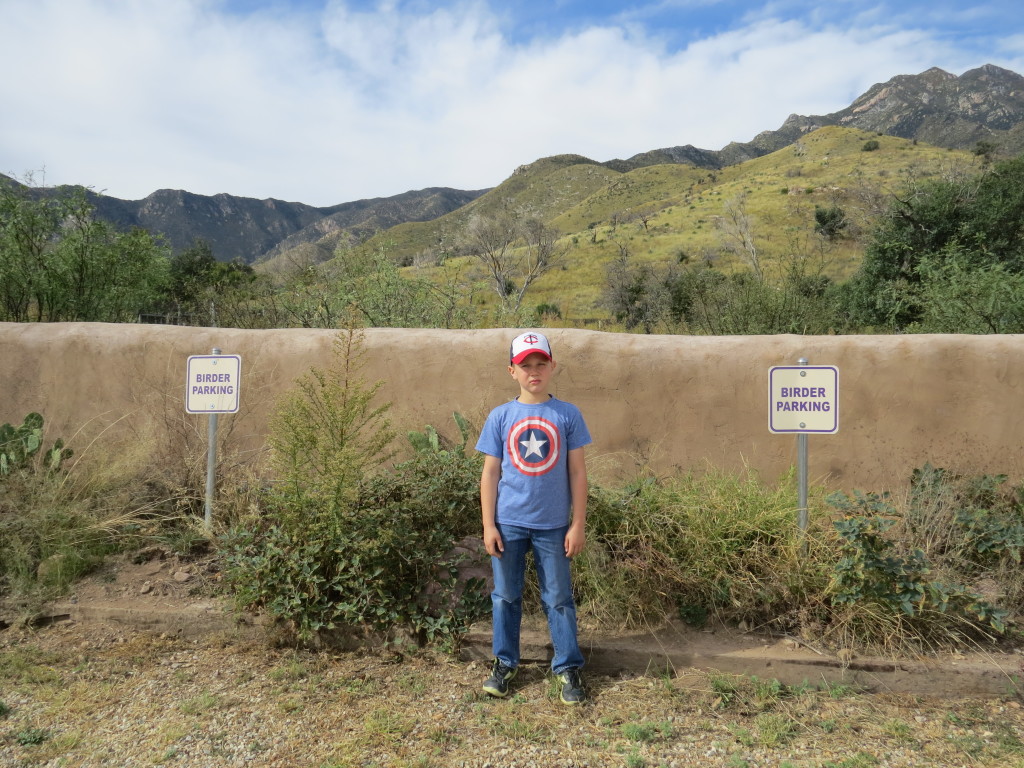
 We got some great views of some fun birds while we rested from our recent hike in Hunter Canyon. It was nice to finally see a much nicer Canyon Towee than the haggard one I saw in Florida Canyon last spring. This bird was a lifer for Evan.
We got some great views of some fun birds while we rested from our recent hike in Hunter Canyon. It was nice to finally see a much nicer Canyon Towee than the haggard one I saw in Florida Canyon last spring. This bird was a lifer for Evan.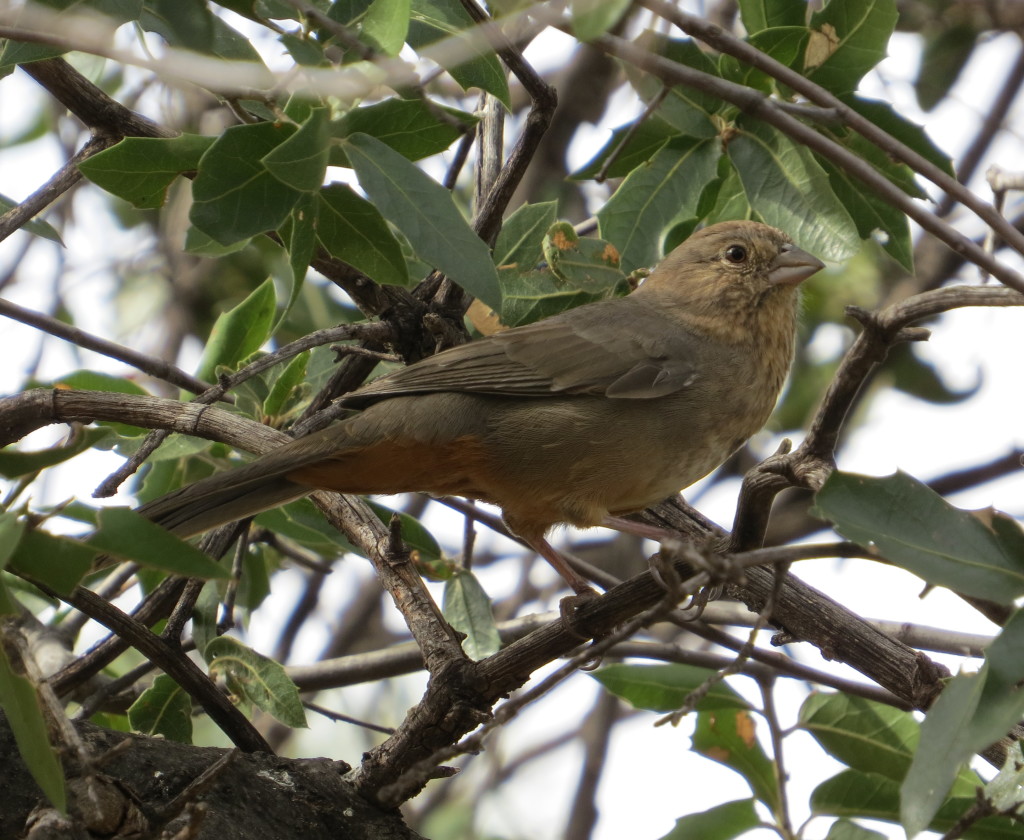 We also got to see another Scott’s Oriole (female), but this one did not show itself well either.
We also got to see another Scott’s Oriole (female), but this one did not show itself well either.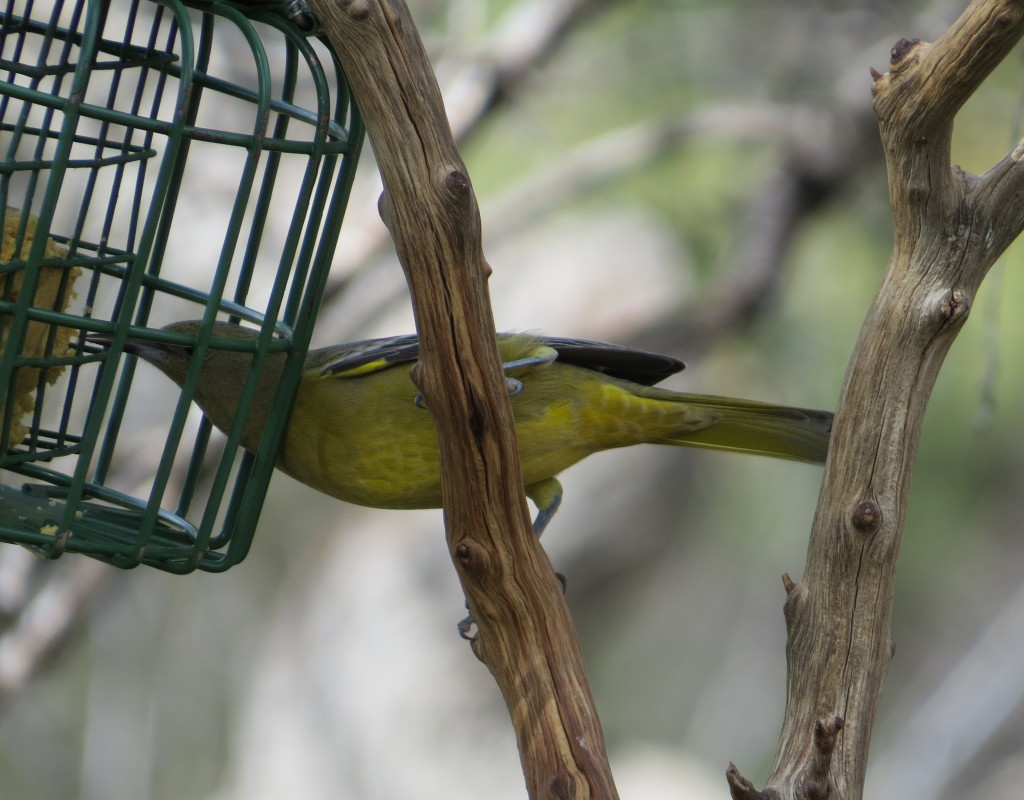 Seeing a lifer Dark-eyed Junco sub-species, like this Gray-headed variety, is always fun.
Seeing a lifer Dark-eyed Junco sub-species, like this Gray-headed variety, is always fun.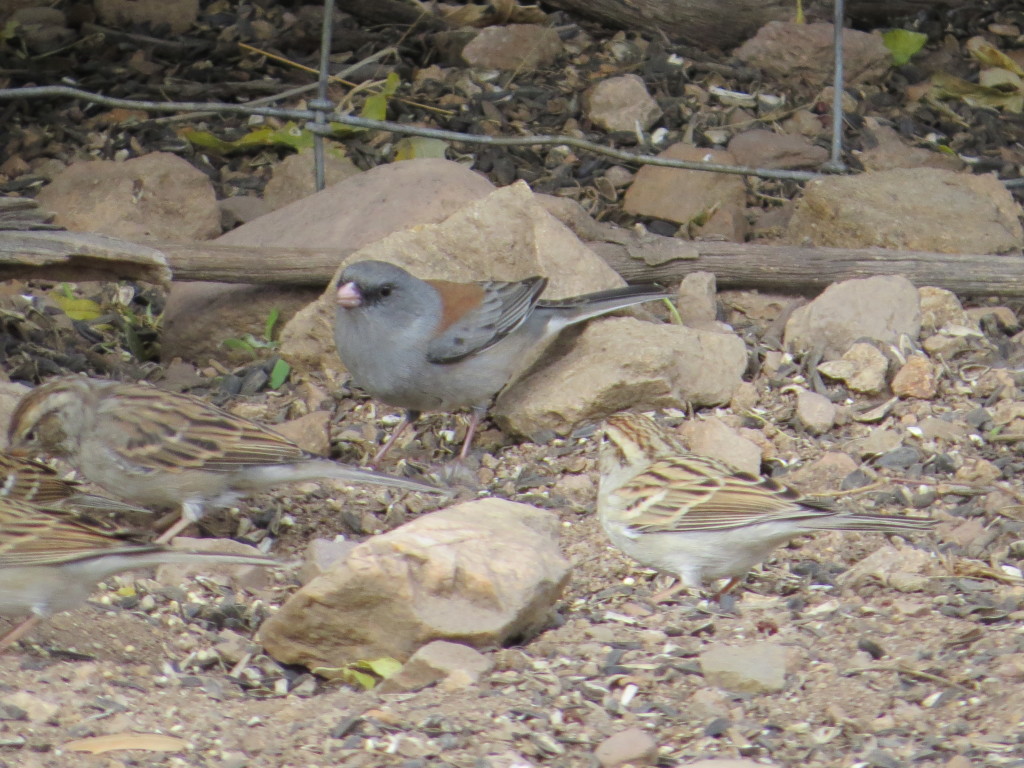 Acorn Woodpeckers were a common sight at all our stops in the Huachucas. At least at Mary Jo’s feeders, you can get a good photo while sitting down–a great combo.
Acorn Woodpeckers were a common sight at all our stops in the Huachucas. At least at Mary Jo’s feeders, you can get a good photo while sitting down–a great combo.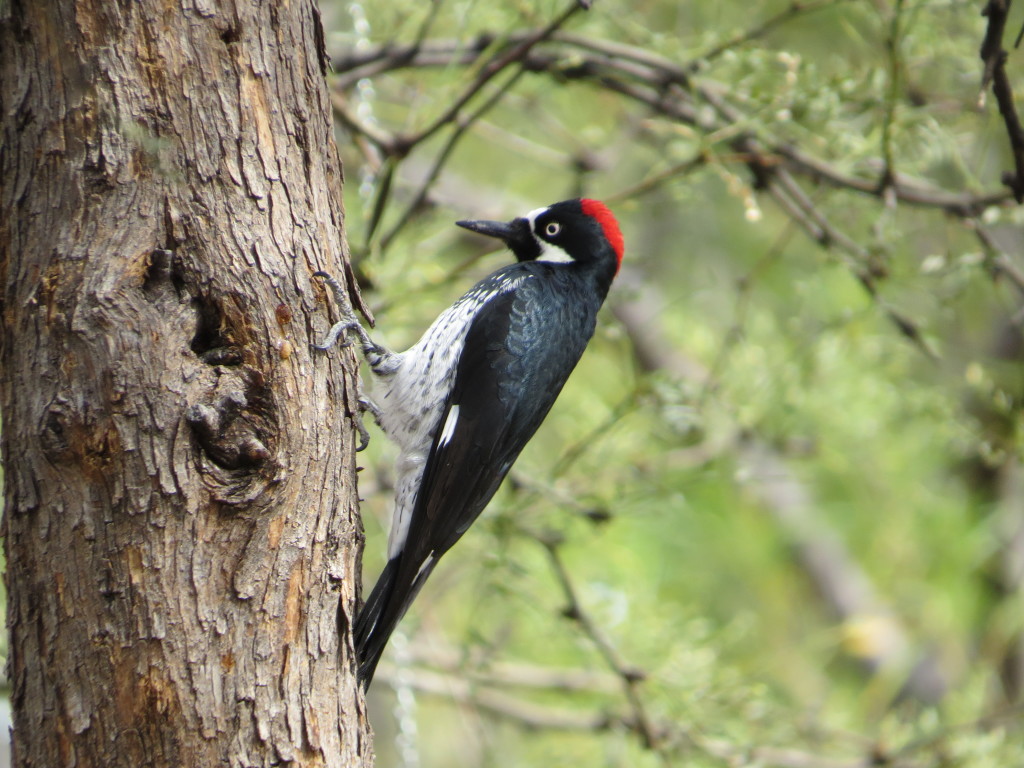
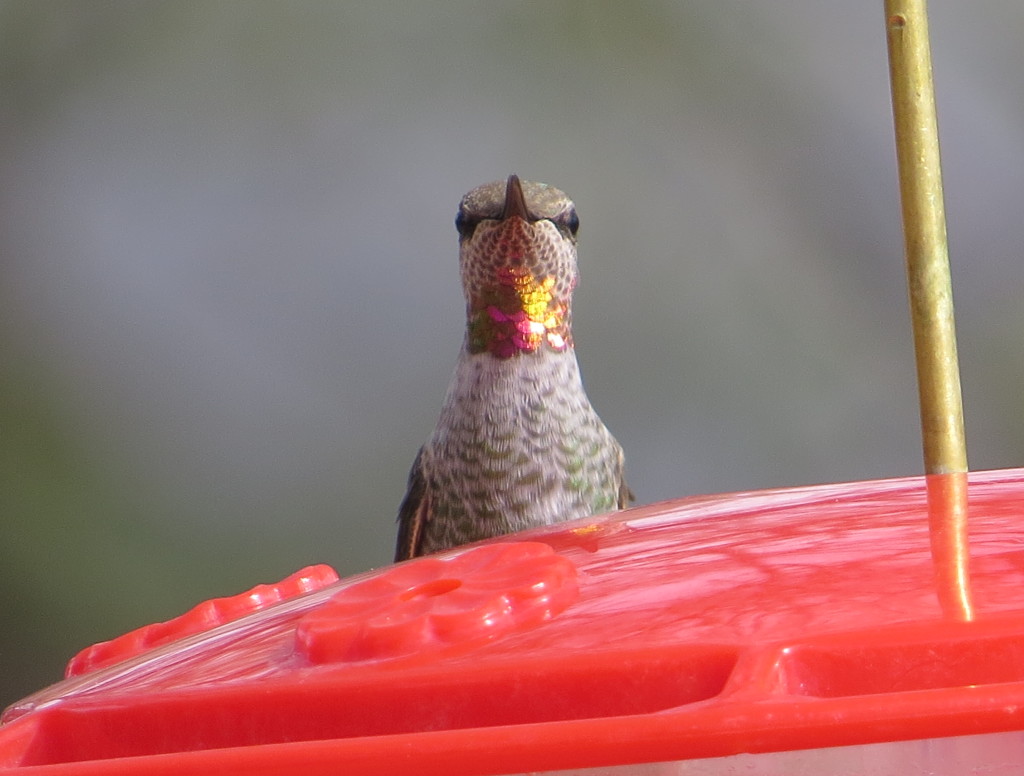 Evan also got his Magnificent Hummingbird lifer with the help of owner Mary Jo who seems to constantly monitor the bird activity in her yard. Tommy and Gordon were watching a different set of Hummingbird feeders and had seen one of the reported Lucifer Hummingbirds. So Evan and I joined them and watched those feeders for a short time to see if we could get this rare Hummer too. That said, Miller Canyon was beckoning, both for what it held and for the short amount of time we had left to bird. Thankfully the Lucifer was understanding and showed up in short order. Note the thick, decurved bill.
Evan also got his Magnificent Hummingbird lifer with the help of owner Mary Jo who seems to constantly monitor the bird activity in her yard. Tommy and Gordon were watching a different set of Hummingbird feeders and had seen one of the reported Lucifer Hummingbirds. So Evan and I joined them and watched those feeders for a short time to see if we could get this rare Hummer too. That said, Miller Canyon was beckoning, both for what it held and for the short amount of time we had left to bird. Thankfully the Lucifer was understanding and showed up in short order. Note the thick, decurved bill.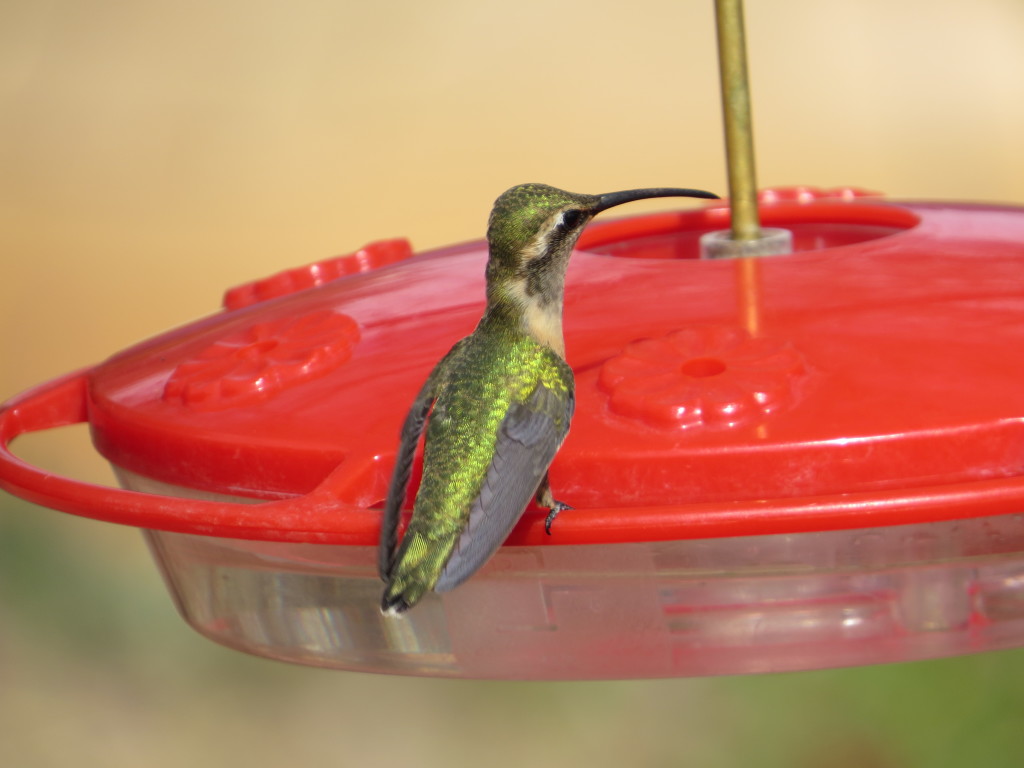
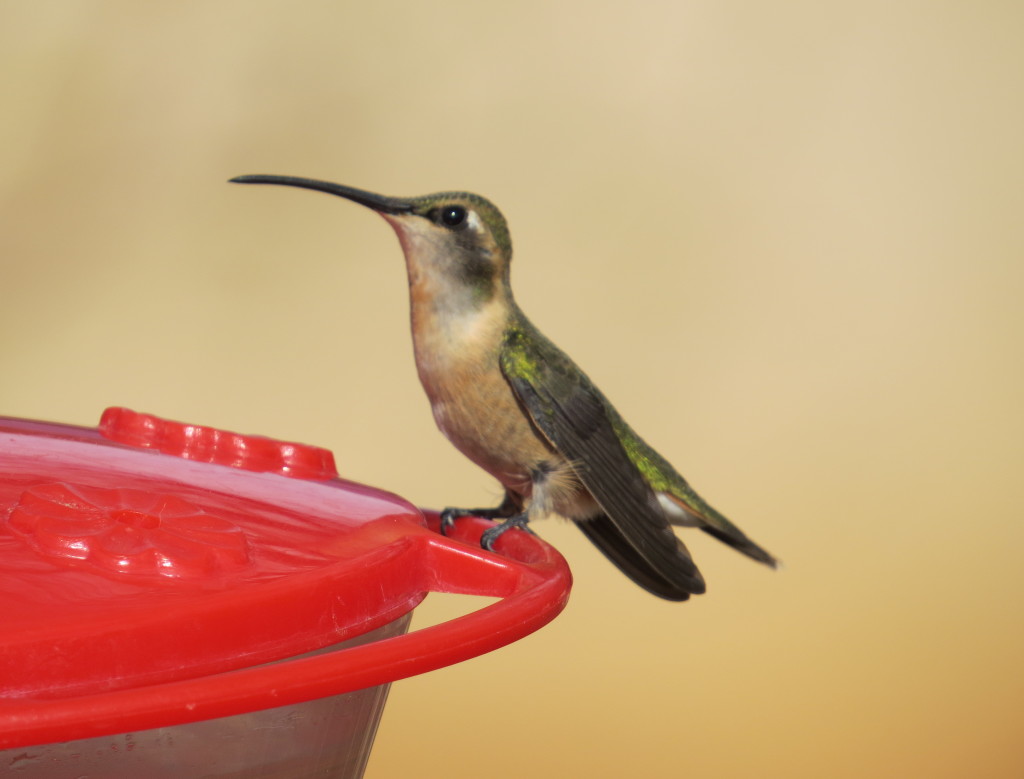 The rarity of this bird was really cool even if the plain looks of this juvenile bird were not impressive. I regretfully later found out that an adult male Lucifer had been visiting these feeders on the very day we were there. Doh!
The rarity of this bird was really cool even if the plain looks of this juvenile bird were not impressive. I regretfully later found out that an adult male Lucifer had been visiting these feeders on the very day we were there. Doh!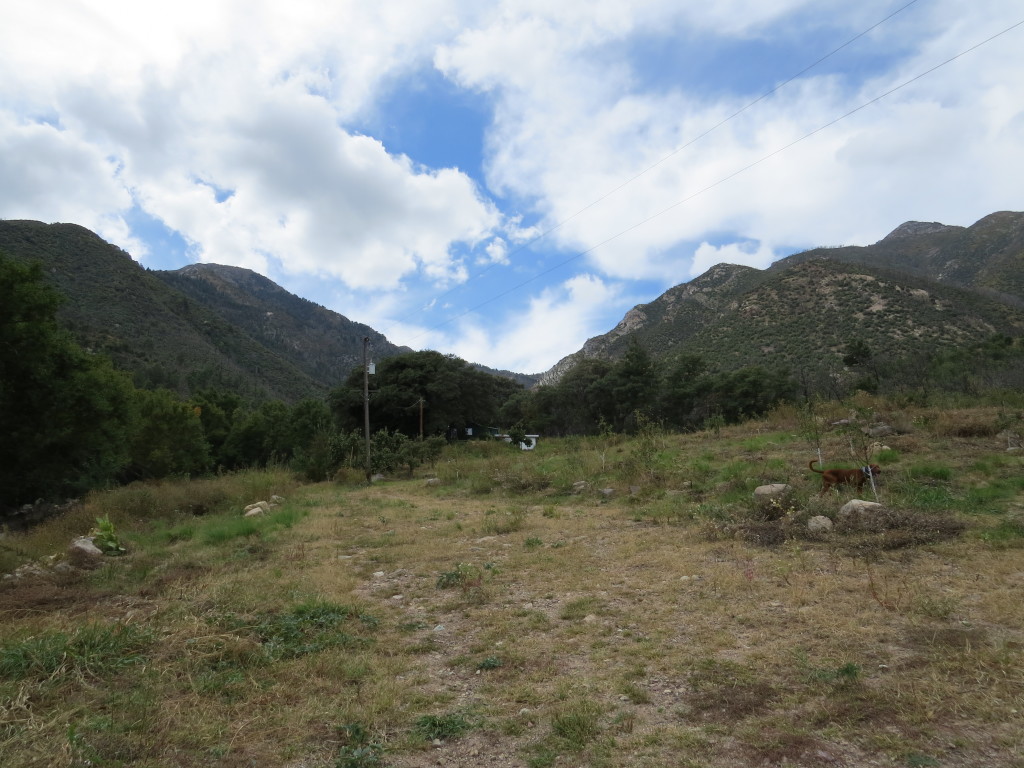
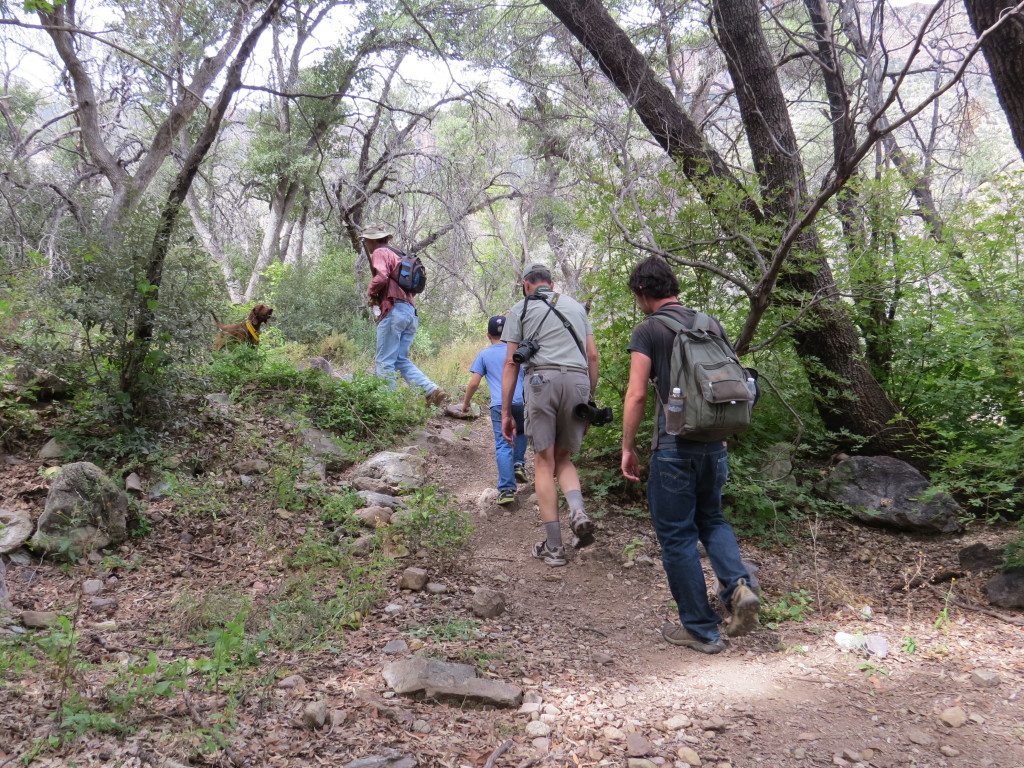
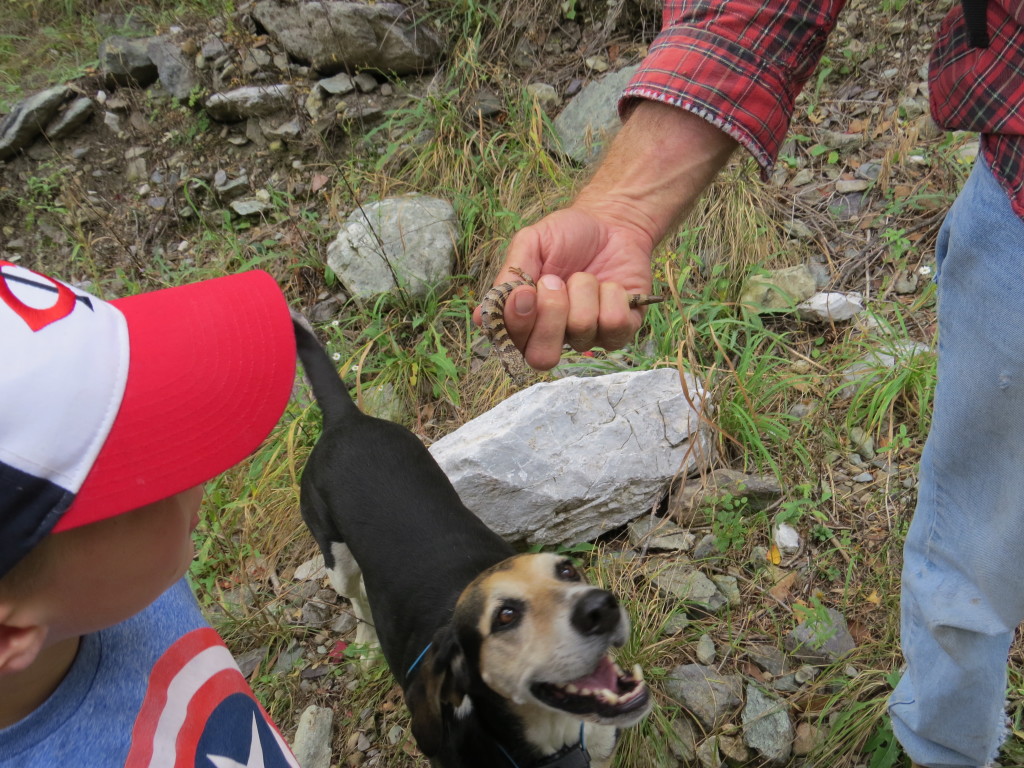 After hiking nearly a mile uphill, we finally reached Split Rock. Here there were two elderly women had been brought to this location earlier to look for the Spotted Owls. Our guide checked out the usual perches for the Owls, a family group of four birds, but none of them held anything. Then, real casually, he points to a different tree and says, “Oh, here’s one.” Sweet!
After hiking nearly a mile uphill, we finally reached Split Rock. Here there were two elderly women had been brought to this location earlier to look for the Spotted Owls. Our guide checked out the usual perches for the Owls, a family group of four birds, but none of them held anything. Then, real casually, he points to a different tree and says, “Oh, here’s one.” Sweet!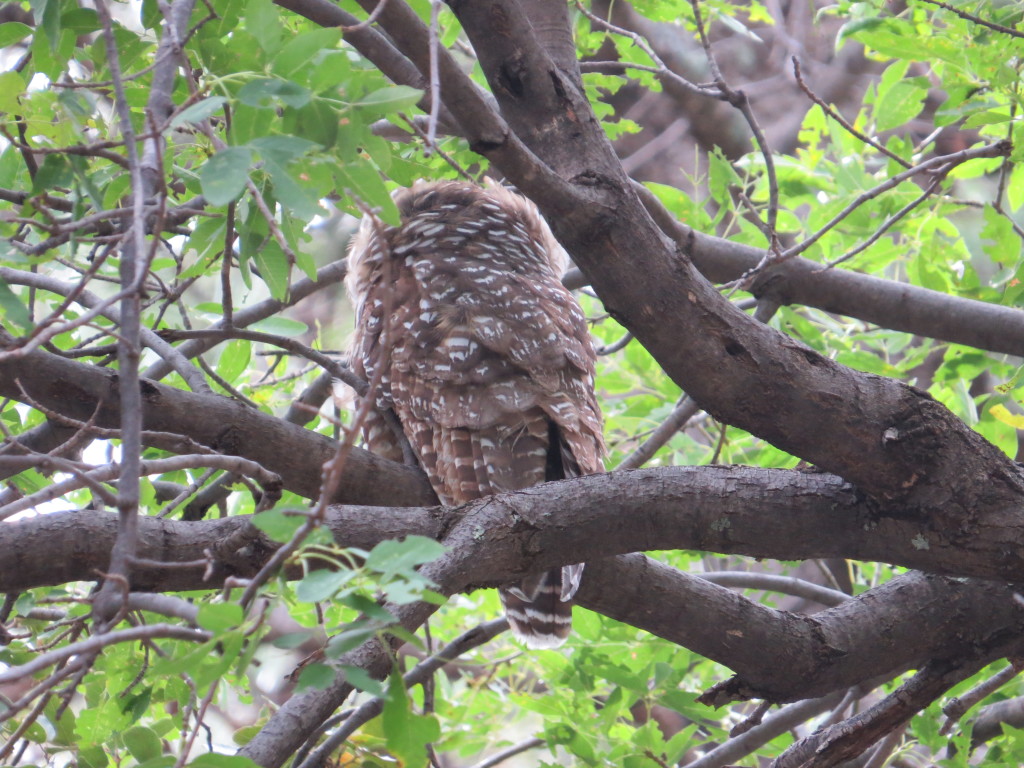
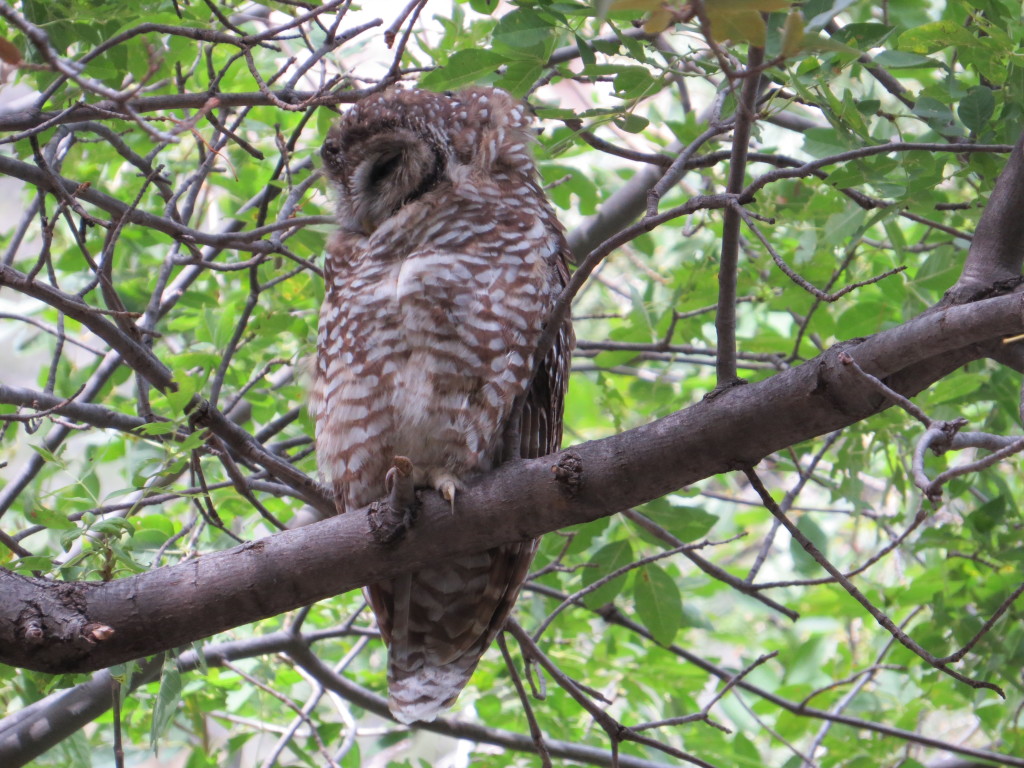 This Owl was a pretty mellow fellow, which I understand is typical for this species. It could not have cared less that we were ooing and awwing over it.
This Owl was a pretty mellow fellow, which I understand is typical for this species. It could not have cared less that we were ooing and awwing over it.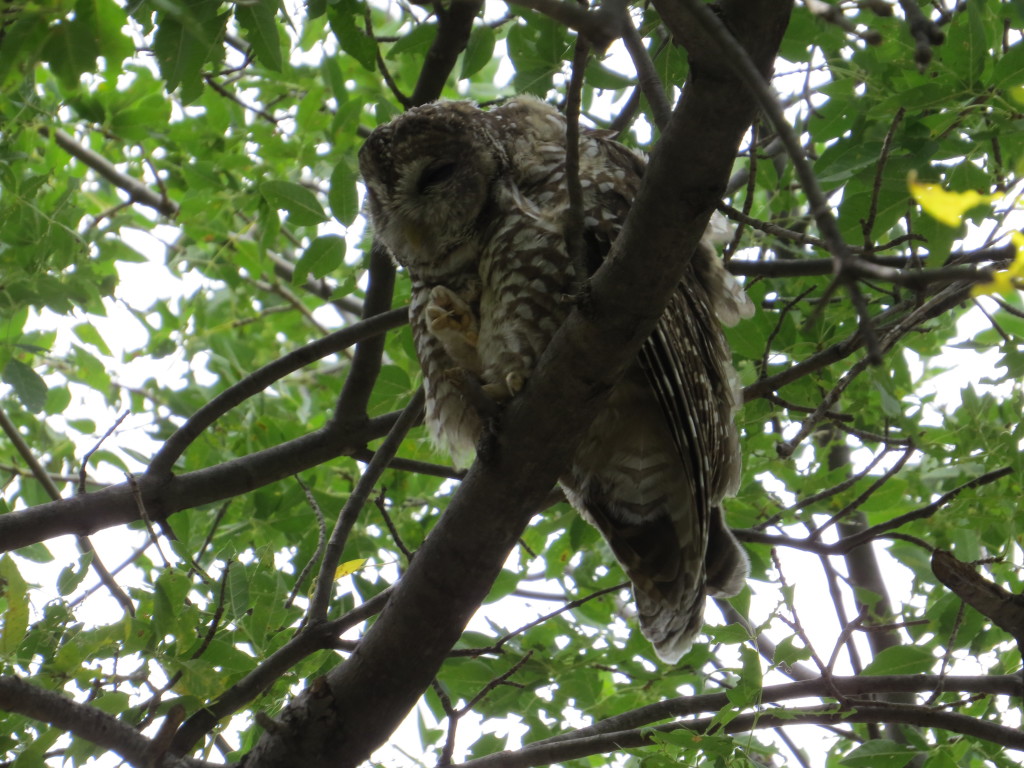
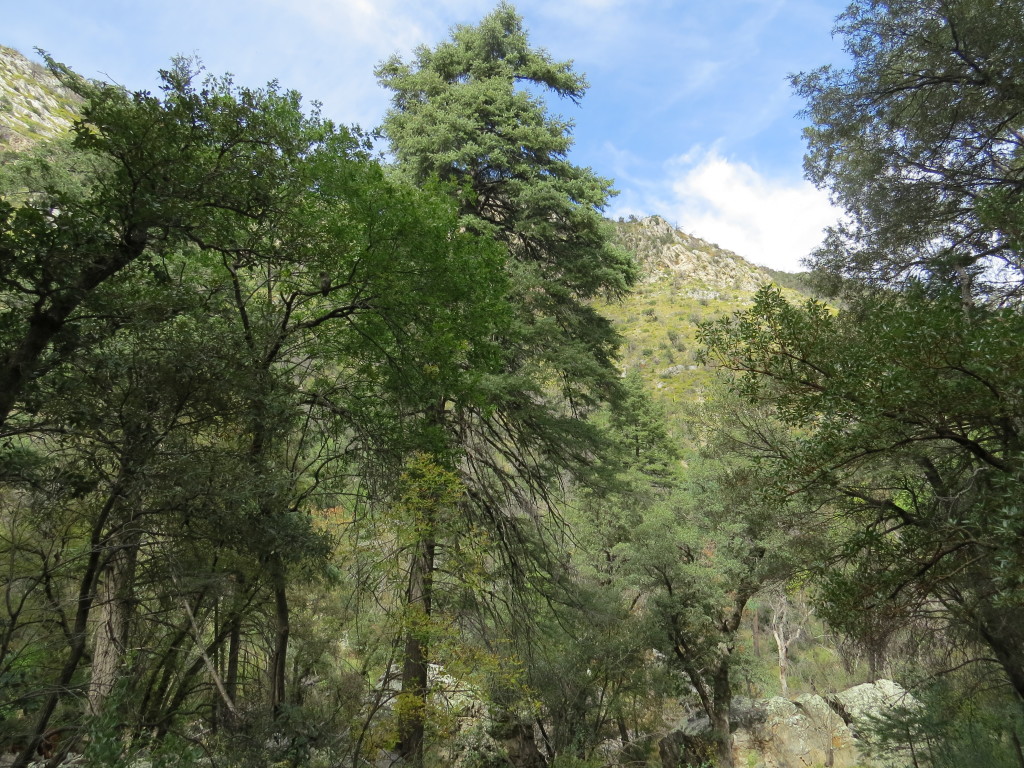 Tommy and I went a little further up the canyon hoping to spot one of the other Spotted Owls on our own which is half the fun of owling. But without any more luck, it was finally time to head back down the canyon. What a thrill it was, though, to get this prized lifer:
Tommy and I went a little further up the canyon hoping to spot one of the other Spotted Owls on our own which is half the fun of owling. But without any more luck, it was finally time to head back down the canyon. What a thrill it was, though, to get this prized lifer: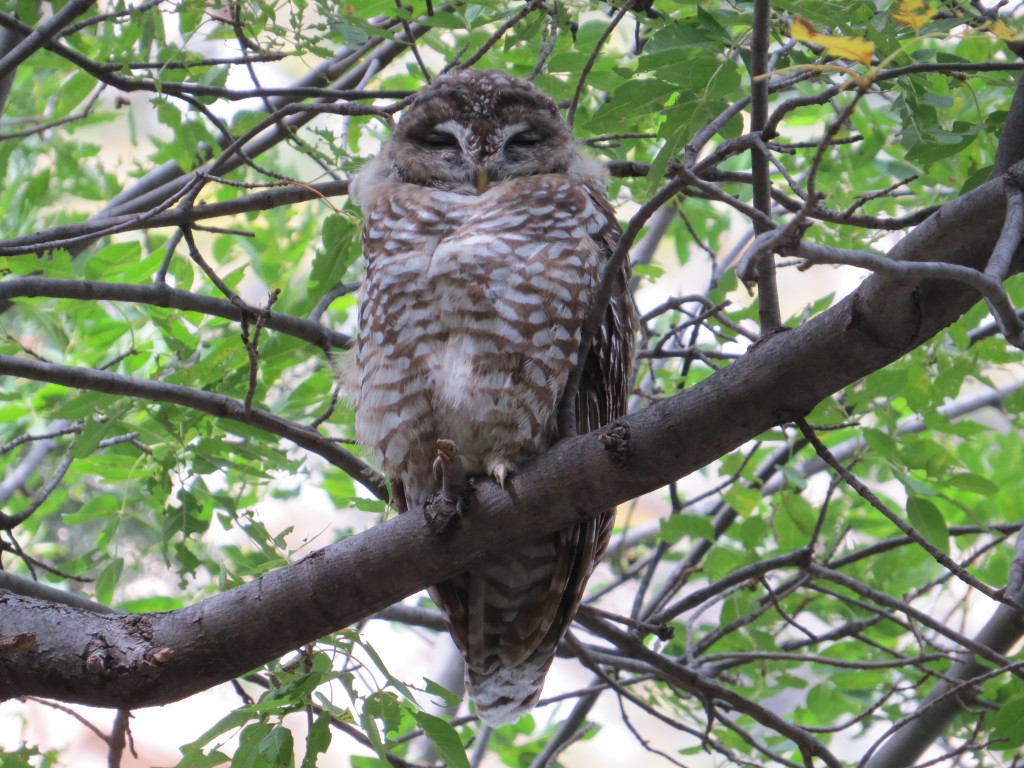
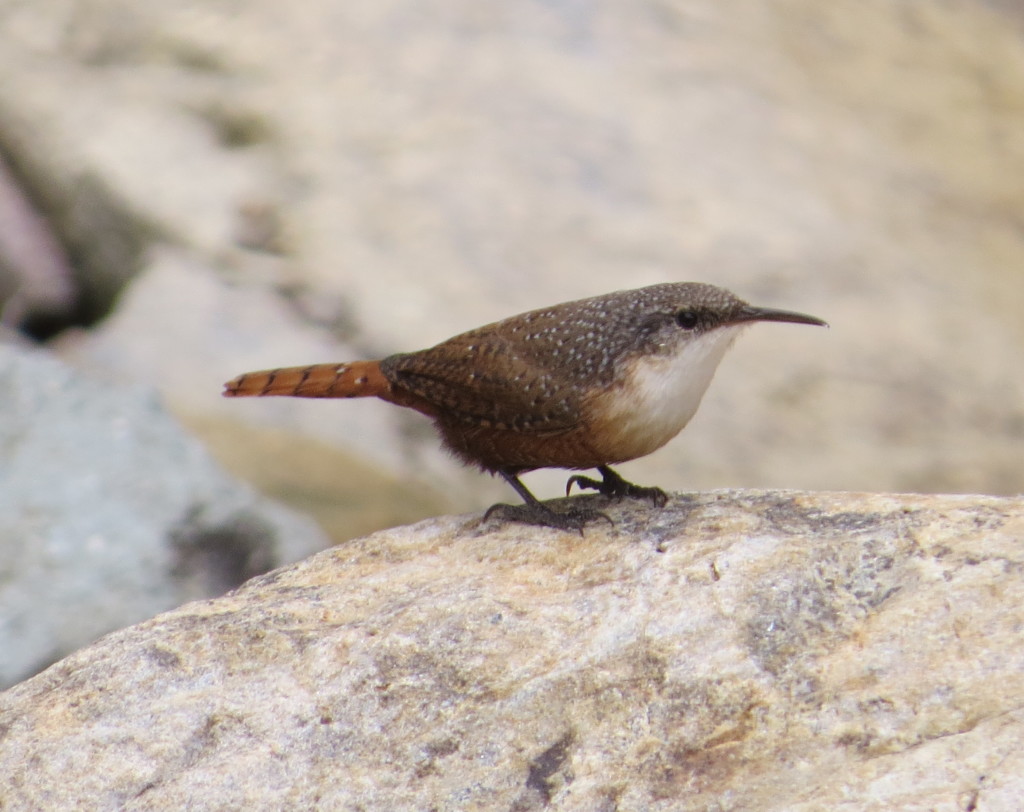
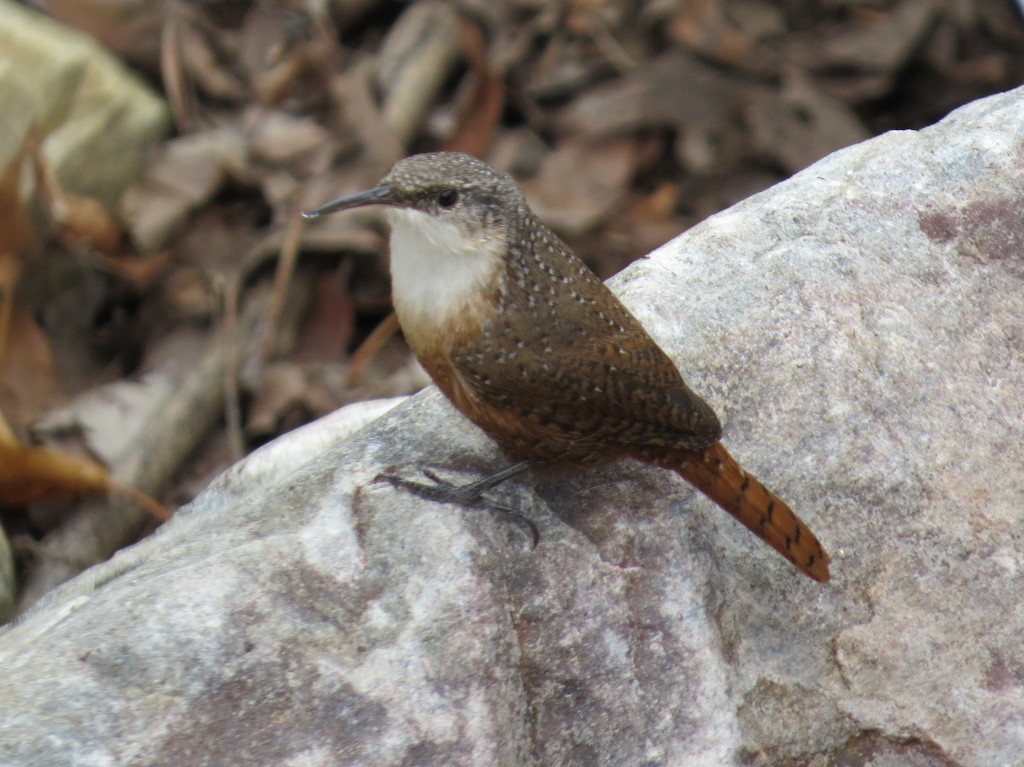 Then there was one last big gift for our big day in the Huachucas. We were nearly to the car when Tommy thought he heard a Black-throated Gray Warbler. I saw one last spring, but only briefly. I was hoping for a better photo. However, I’m just going to have to wait for that because the bird turned out to be a lifer Townsend’s Warbler instead! Now I need a redemptive photo of two western Warblers.
Then there was one last big gift for our big day in the Huachucas. We were nearly to the car when Tommy thought he heard a Black-throated Gray Warbler. I saw one last spring, but only briefly. I was hoping for a better photo. However, I’m just going to have to wait for that because the bird turned out to be a lifer Townsend’s Warbler instead! Now I need a redemptive photo of two western Warblers.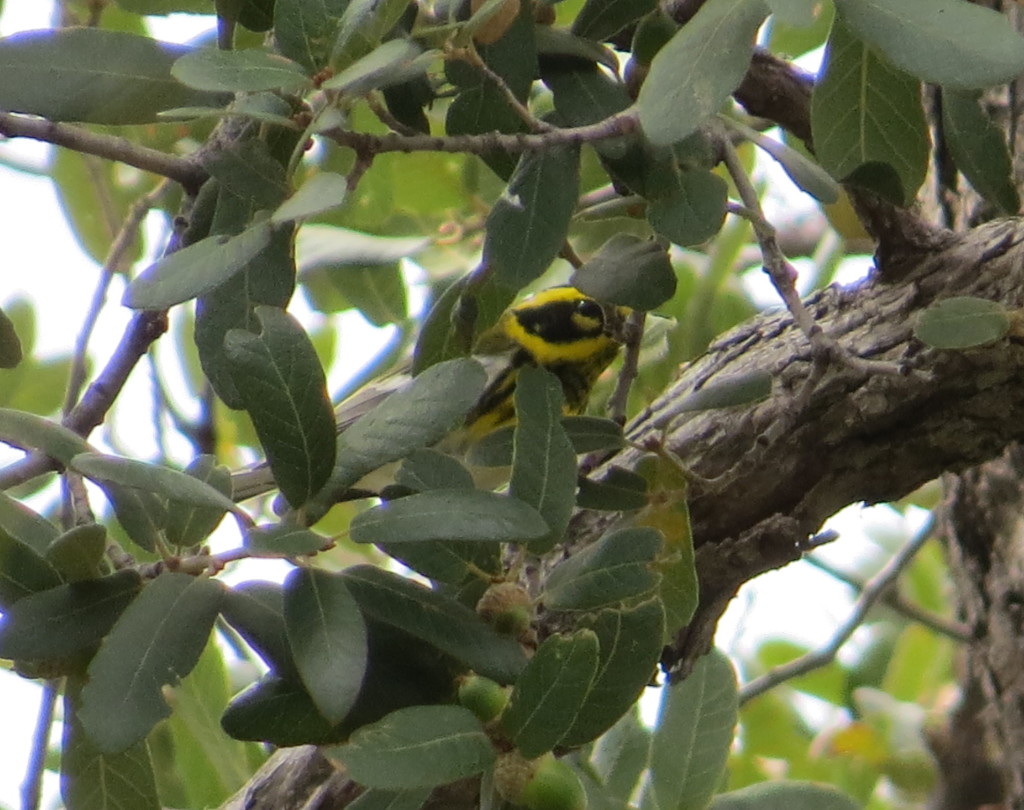 What an incredible day it was at our three stops in the Huachuca Mountains. It was finally time to hit the road to join my family back at Green Valley. Once again, Tommy and Gordon outdid themselves and provided another fun set of SE AZ memories. We said our goodbyes and vowed to meet up again this winter back in Minnesota where it’s not as warm, definitely not as scenic, but with just as cool (if not cooler) Owls. Hopefully Evan and I can repay these guys with some awesome lifers of their own.
What an incredible day it was at our three stops in the Huachuca Mountains. It was finally time to hit the road to join my family back at Green Valley. Once again, Tommy and Gordon outdid themselves and provided another fun set of SE AZ memories. We said our goodbyes and vowed to meet up again this winter back in Minnesota where it’s not as warm, definitely not as scenic, but with just as cool (if not cooler) Owls. Hopefully Evan and I can repay these guys with some awesome lifers of their own.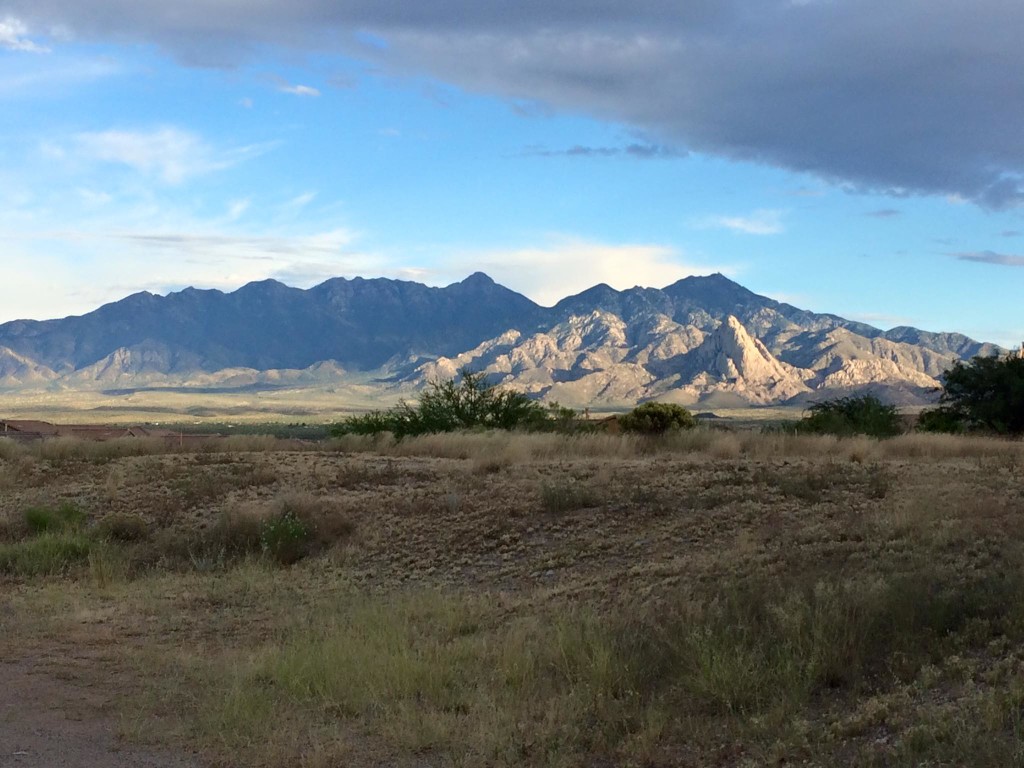
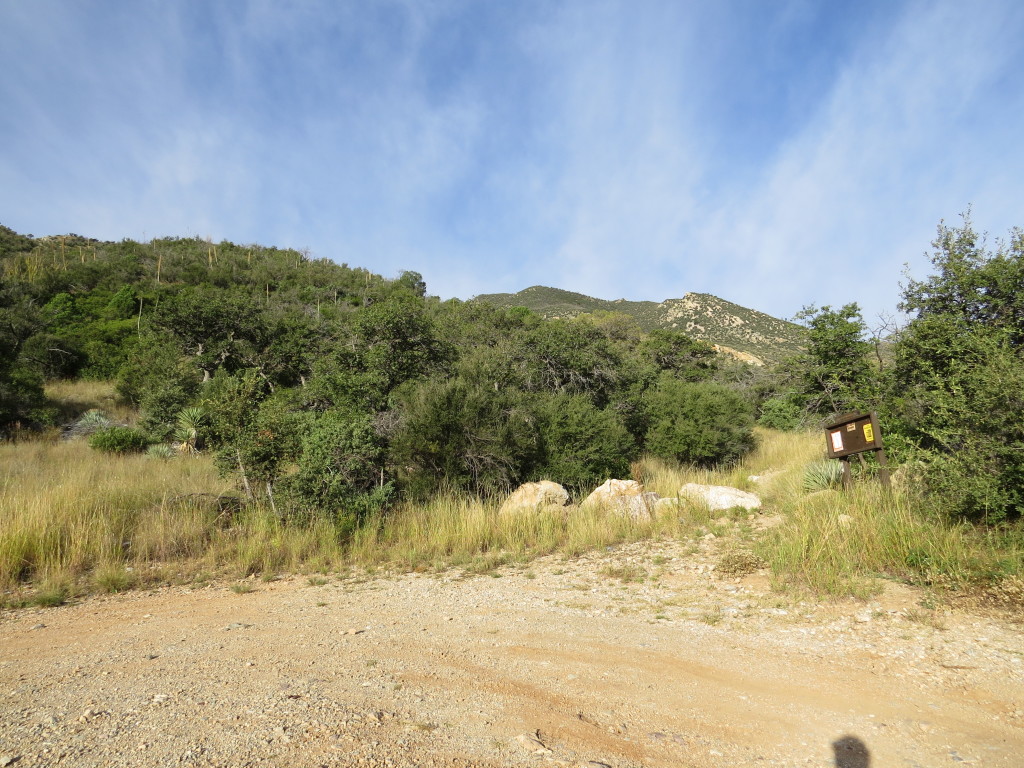
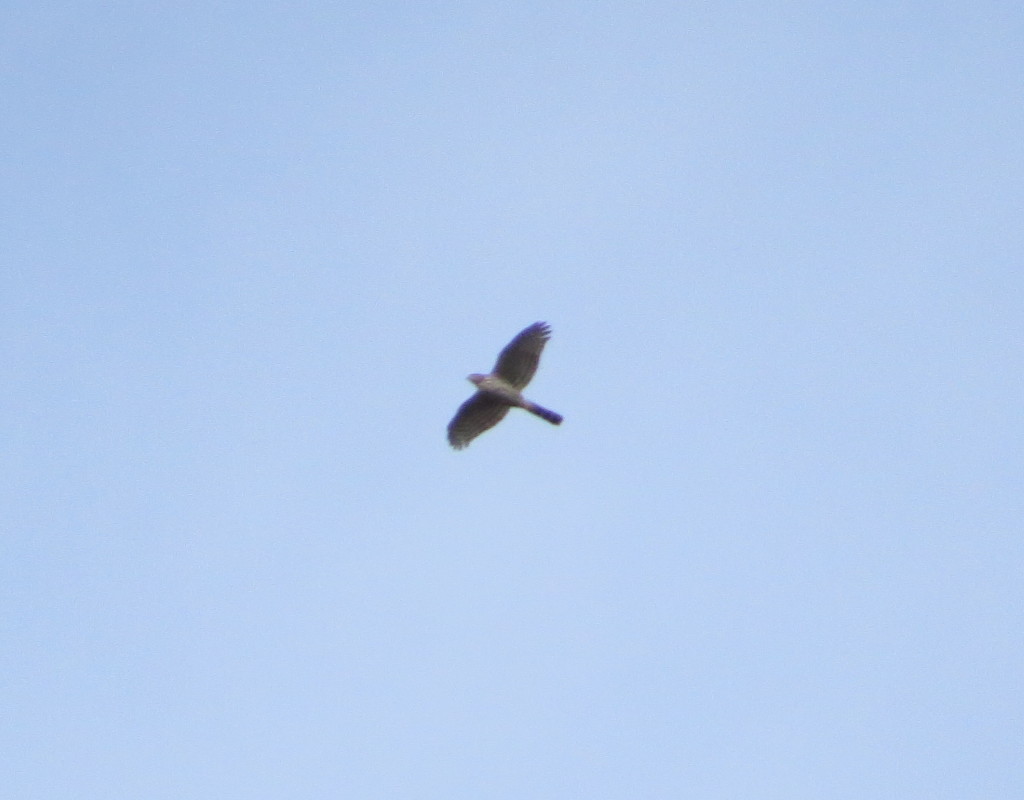
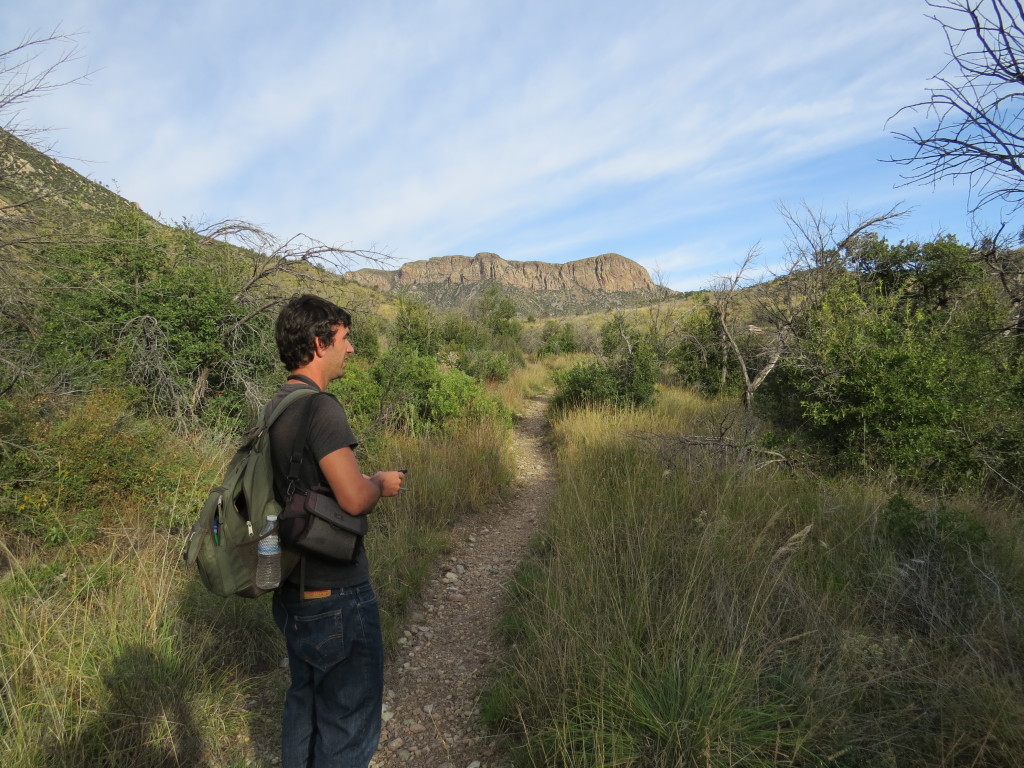 Tommy’s ear for bird sounds is truly impressive–hardly a chip note, flight call, or song gets by him. In fact, he doesn’t even announce all that he’s hearing unless it’s important, like this lifer Bewick’s Wren.
Tommy’s ear for bird sounds is truly impressive–hardly a chip note, flight call, or song gets by him. In fact, he doesn’t even announce all that he’s hearing unless it’s important, like this lifer Bewick’s Wren.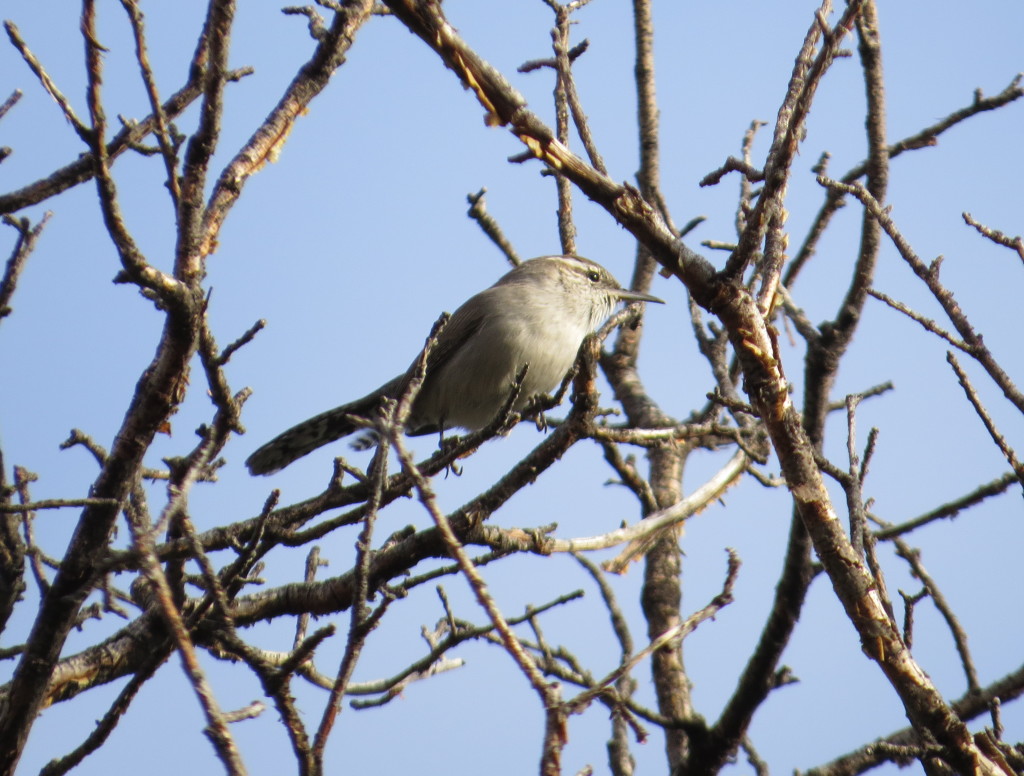
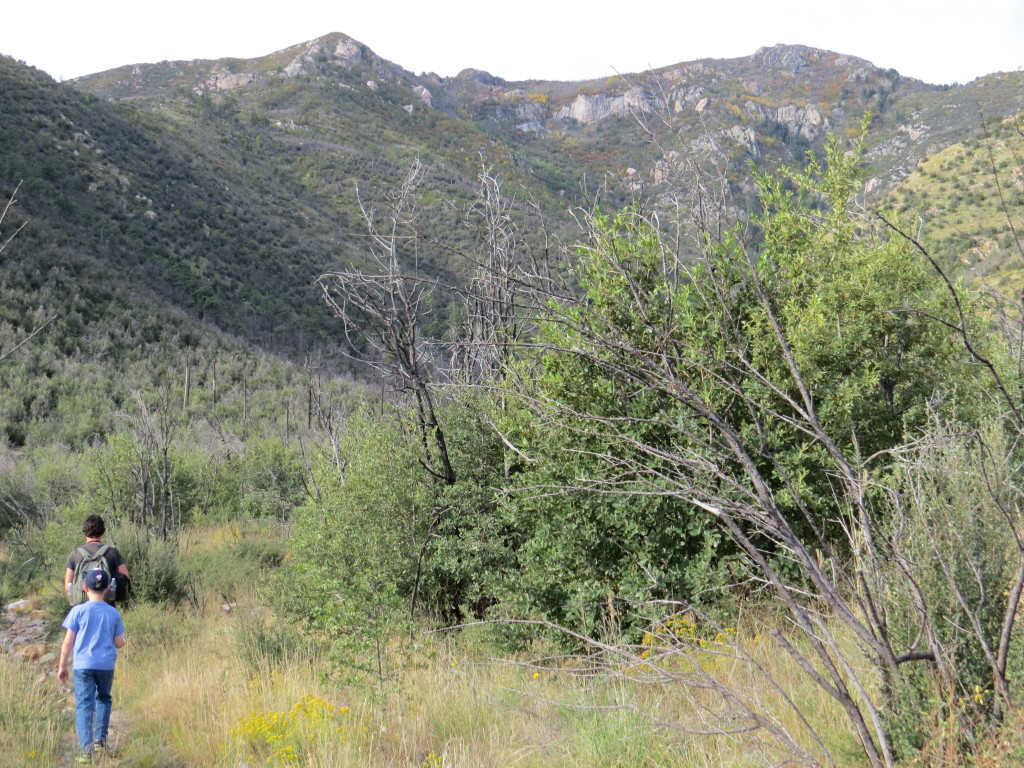 It is where this lowland scrub terminates and the forest of the canyon begins that the Slate-throated Redstart had been seen just a couple days prior. We paused to look and listen, but it seemed well-known at this point that the Redstart was gone. We did, however, start to hear multiple Rufous-capped Warblers all around us! Getting a visual of this brush-loving bird is another story. The sound seemed to come from everywhere and then stopped all of the sudden. Weird. So onward and upward we kept going. At least the view back down the mountain was nice.
It is where this lowland scrub terminates and the forest of the canyon begins that the Slate-throated Redstart had been seen just a couple days prior. We paused to look and listen, but it seemed well-known at this point that the Redstart was gone. We did, however, start to hear multiple Rufous-capped Warblers all around us! Getting a visual of this brush-loving bird is another story. The sound seemed to come from everywhere and then stopped all of the sudden. Weird. So onward and upward we kept going. At least the view back down the mountain was nice.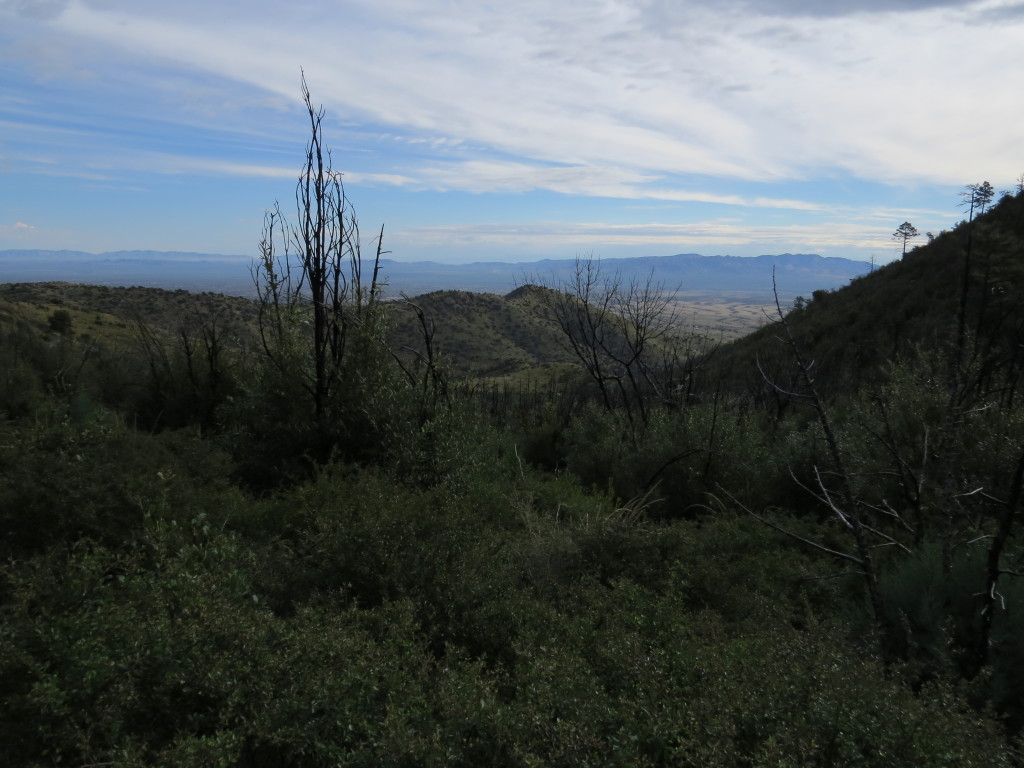
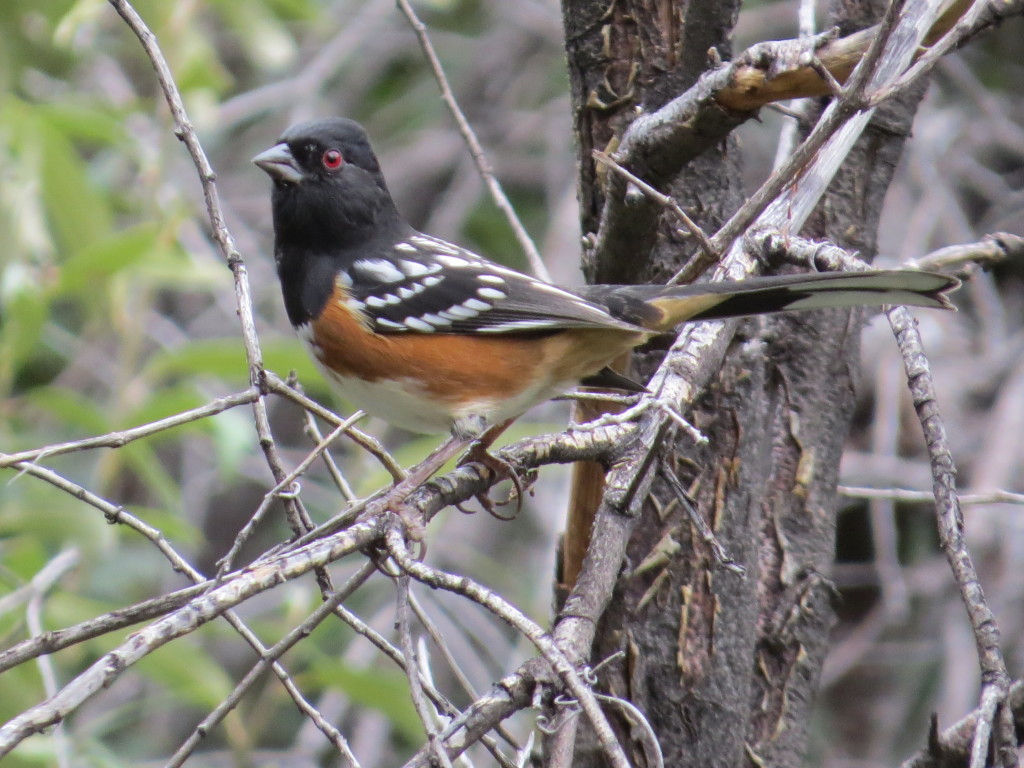 In hindsight, this was the calm before the storm because things took off in a hurry. It all started when Tommy spotted a male Hepatic Tanager which was a lifer for Evan and me. I didn’t see it, but I spotted my own Hepatic lifer (female).
In hindsight, this was the calm before the storm because things took off in a hurry. It all started when Tommy spotted a male Hepatic Tanager which was a lifer for Evan and me. I didn’t see it, but I spotted my own Hepatic lifer (female).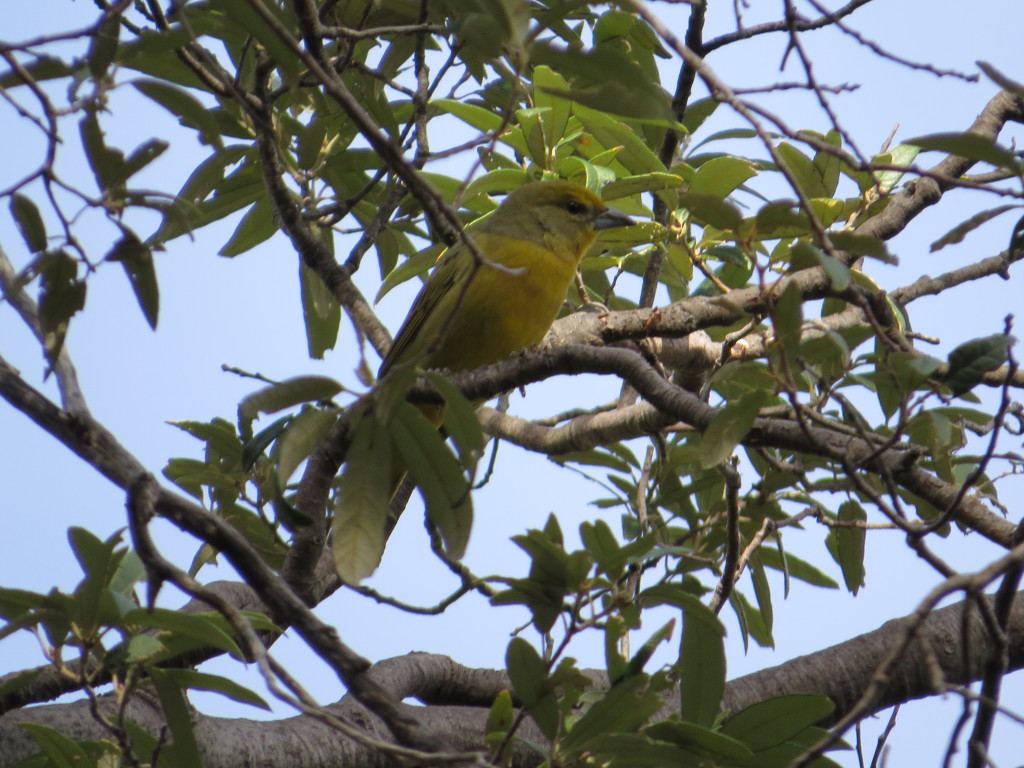 I really wanted to see the male Tommy found. Eventually I saw it, but it was not being cooperative at all.
I really wanted to see the male Tommy found. Eventually I saw it, but it was not being cooperative at all.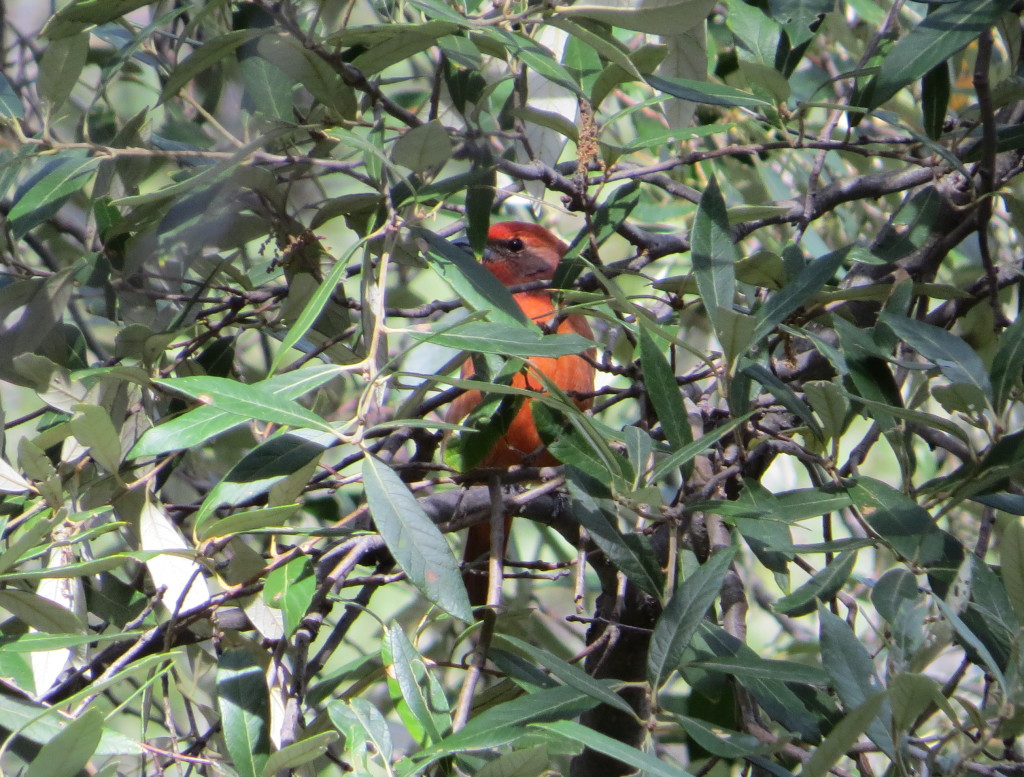
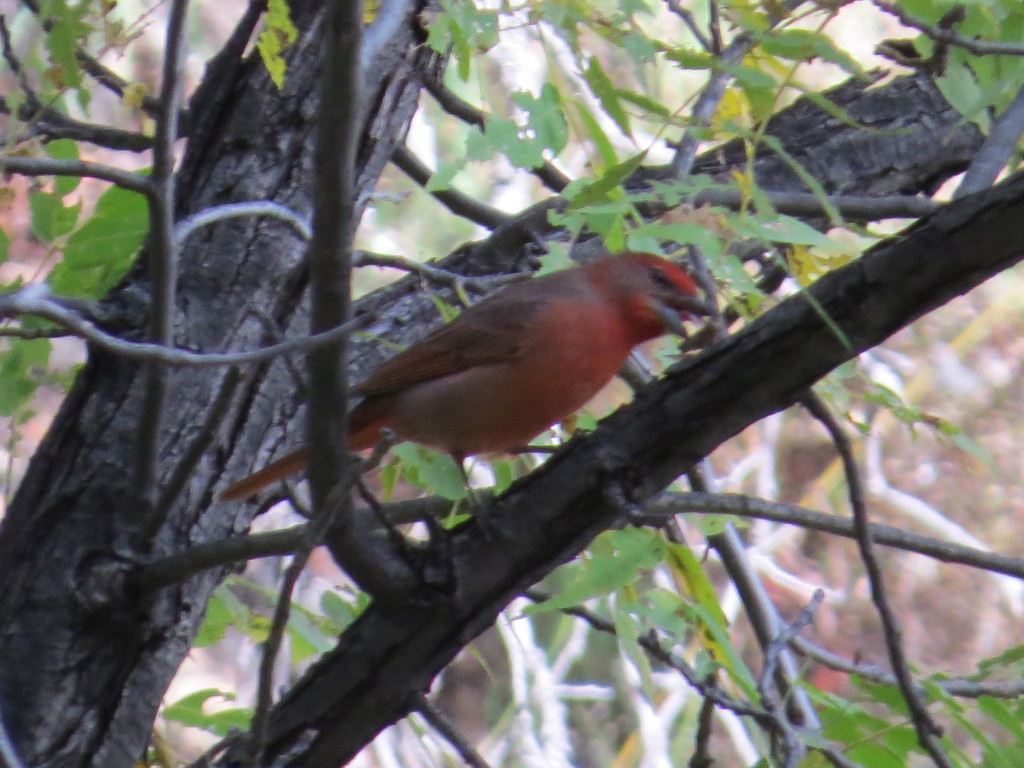 Tommy said that sometimes Tanagers will respond to a Northern Pygmy-Owl call. When he played it, a live Pygmy-Owl tooted back! Tommy took off up the canyon trail to see if he could locate it. I started soon after but then saw bright flash of yellow and black come across the blue sky–Scott’s Oriole! What a looker it was! It landed at the very top of a tree offering me nothing but butt views. It’s a pretty nice-looking butt, anyhow.
Tommy said that sometimes Tanagers will respond to a Northern Pygmy-Owl call. When he played it, a live Pygmy-Owl tooted back! Tommy took off up the canyon trail to see if he could locate it. I started soon after but then saw bright flash of yellow and black come across the blue sky–Scott’s Oriole! What a looker it was! It landed at the very top of a tree offering me nothing but butt views. It’s a pretty nice-looking butt, anyhow.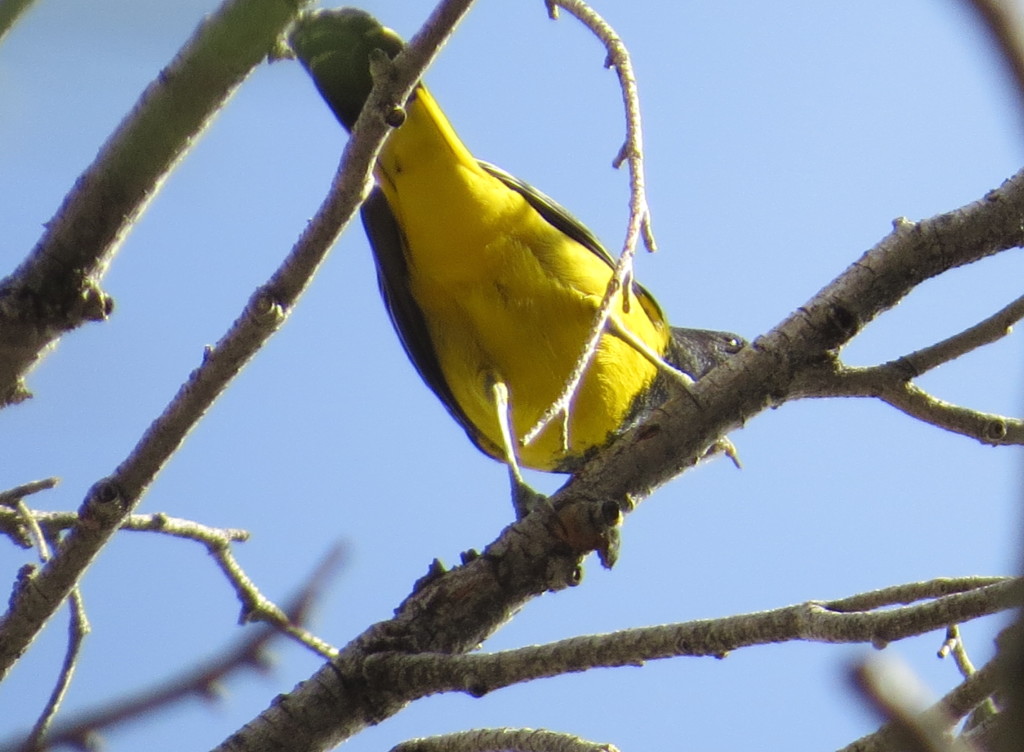 As I was jockeying for a position from which I could see the Oriole better, Tommy called out calmly, “Guys, Pygmy-Owl.” For some reason I thought this meant he was hearing it, and so I continued to keep working on the Oriole. A few seconds later, Tommy’s voice carried a little more urgency. An Owl lifer trumps an Oriole photo. Evan, Gordon, and I hustled up to where Tommy was. Sure enough, he had eyes on it. Wow, just wow.
As I was jockeying for a position from which I could see the Oriole better, Tommy called out calmly, “Guys, Pygmy-Owl.” For some reason I thought this meant he was hearing it, and so I continued to keep working on the Oriole. A few seconds later, Tommy’s voice carried a little more urgency. An Owl lifer trumps an Oriole photo. Evan, Gordon, and I hustled up to where Tommy was. Sure enough, he had eyes on it. Wow, just wow.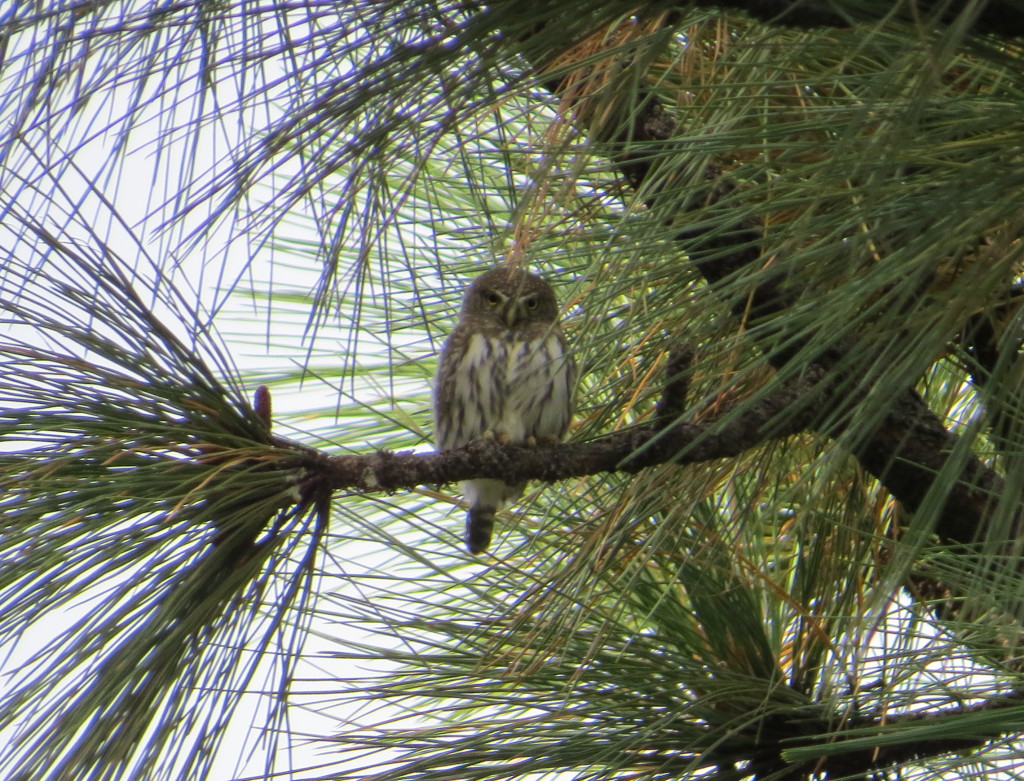
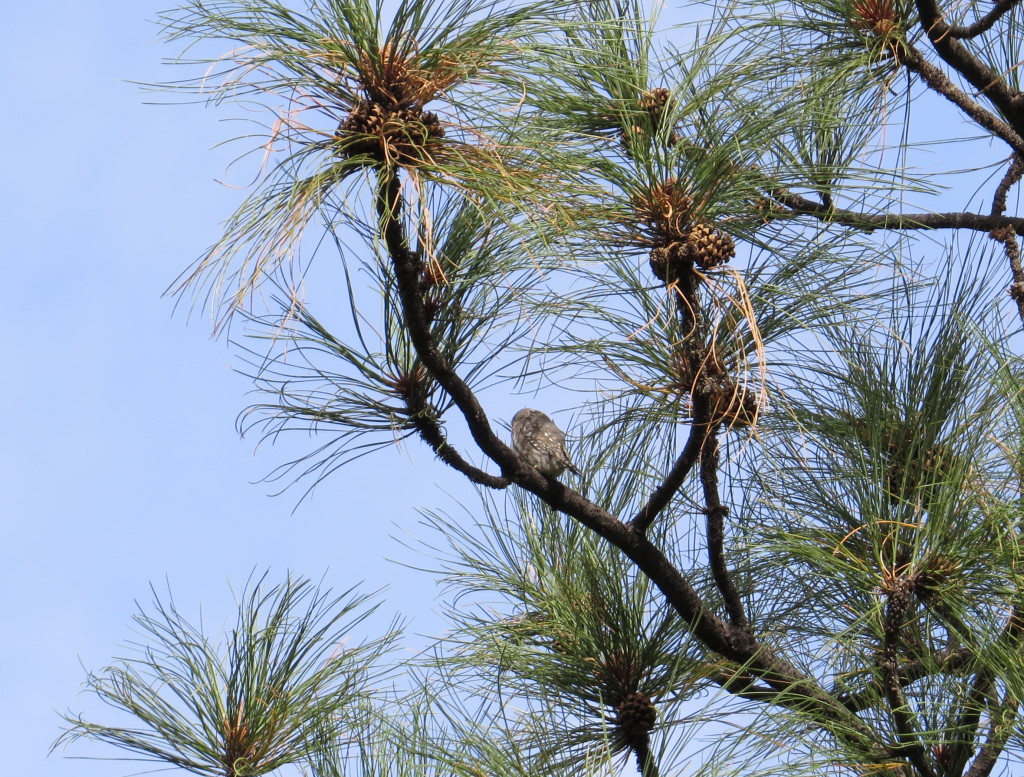 This was such a fun life bird. I was not expecting this one on this trip. Excuse the numerous photos–I was, and still am, very excited about this sighting.
This was such a fun life bird. I was not expecting this one on this trip. Excuse the numerous photos–I was, and still am, very excited about this sighting.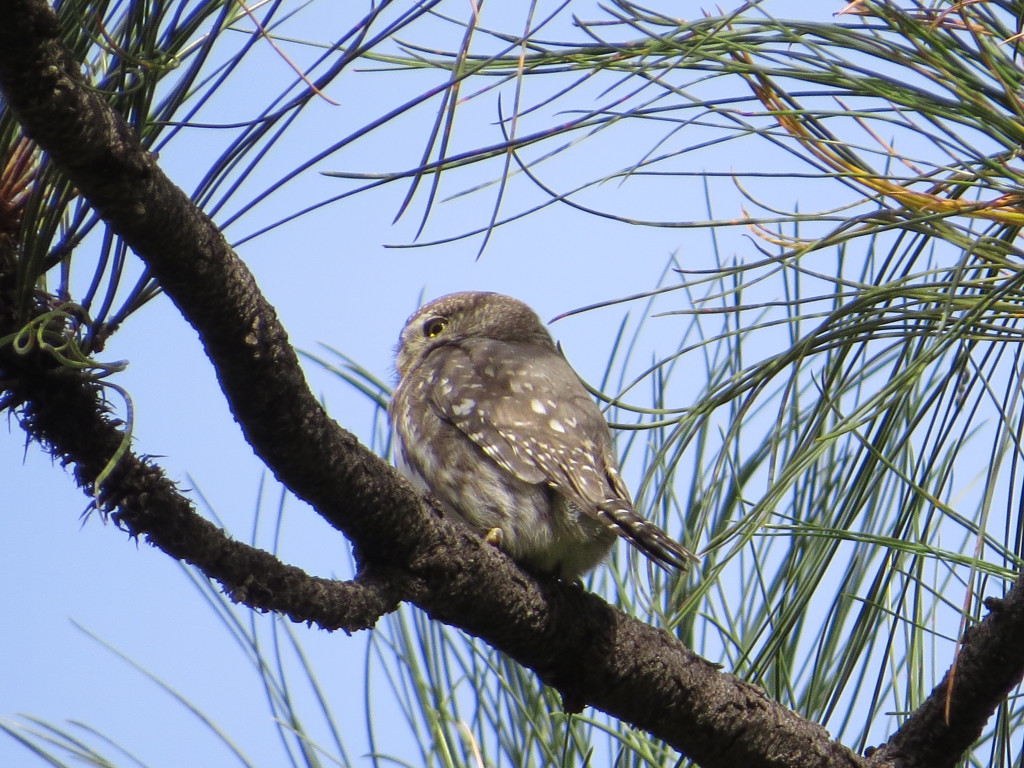
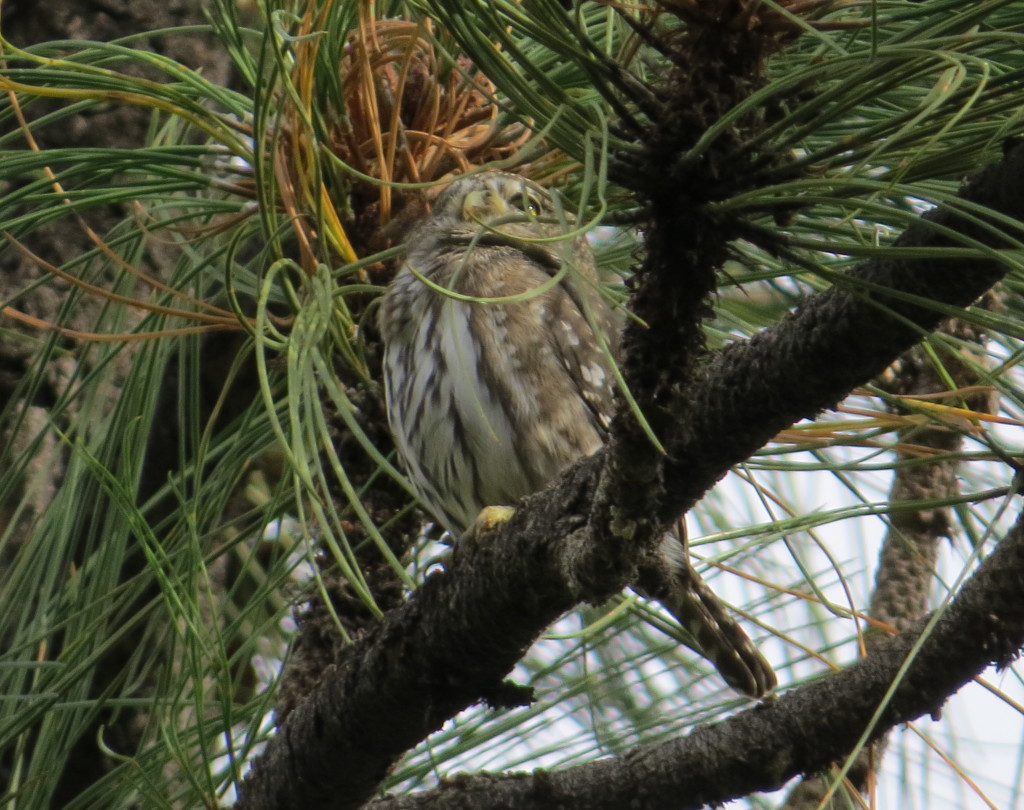
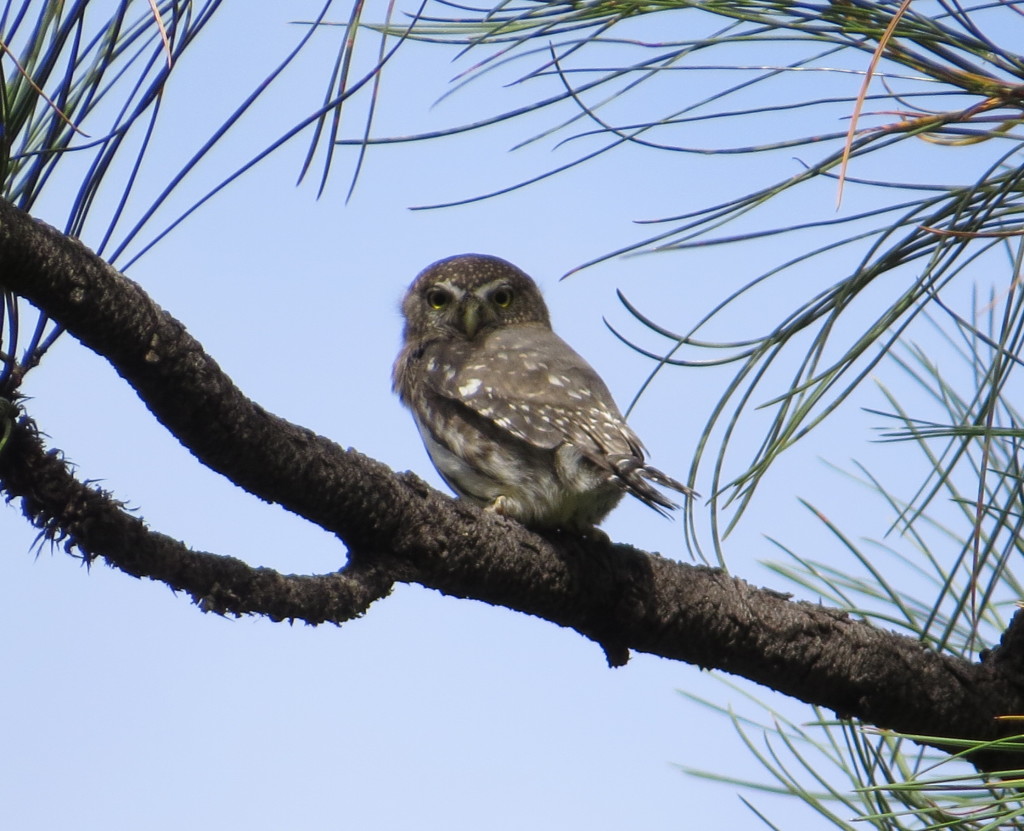 Time waits for no man, though, and neither do Rufous-capped Warblers. As I was photographing this cool Owl and trying for better angles, a Rufous-capped Warbler started singing nearby and Tommy was off again! In seconds Tommy got a visual on the bird and called me over. I’ve learned from Tommy and Gordon to first get a good look at a lifer with binoculars and then worry about a photo second. So that’s what I did. In no time at all, I also saw the Rufous-capped Warbler pop up for a second and got to see that amazingly yellow throat.
Time waits for no man, though, and neither do Rufous-capped Warblers. As I was photographing this cool Owl and trying for better angles, a Rufous-capped Warbler started singing nearby and Tommy was off again! In seconds Tommy got a visual on the bird and called me over. I’ve learned from Tommy and Gordon to first get a good look at a lifer with binoculars and then worry about a photo second. So that’s what I did. In no time at all, I also saw the Rufous-capped Warbler pop up for a second and got to see that amazingly yellow throat.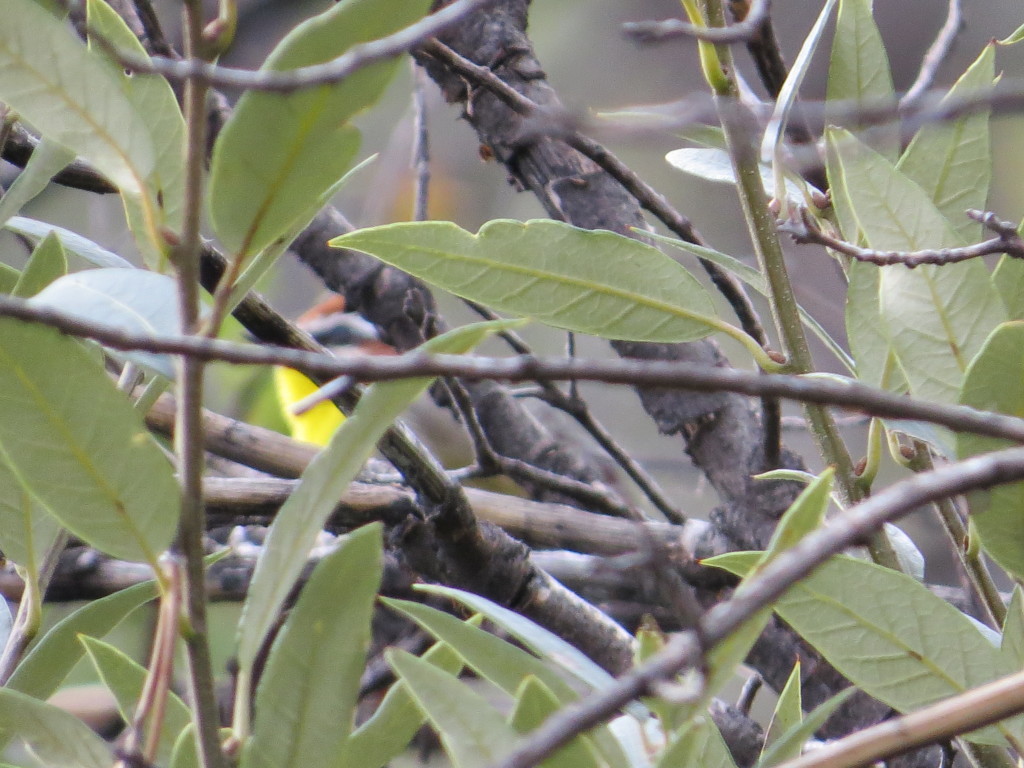
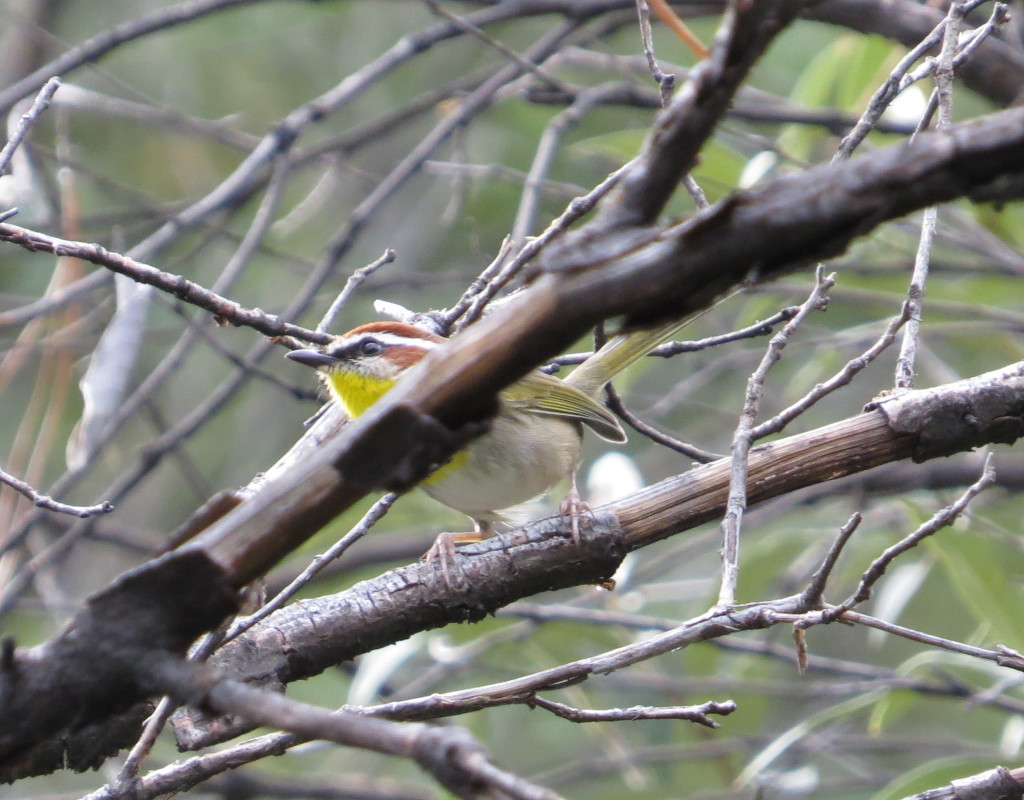
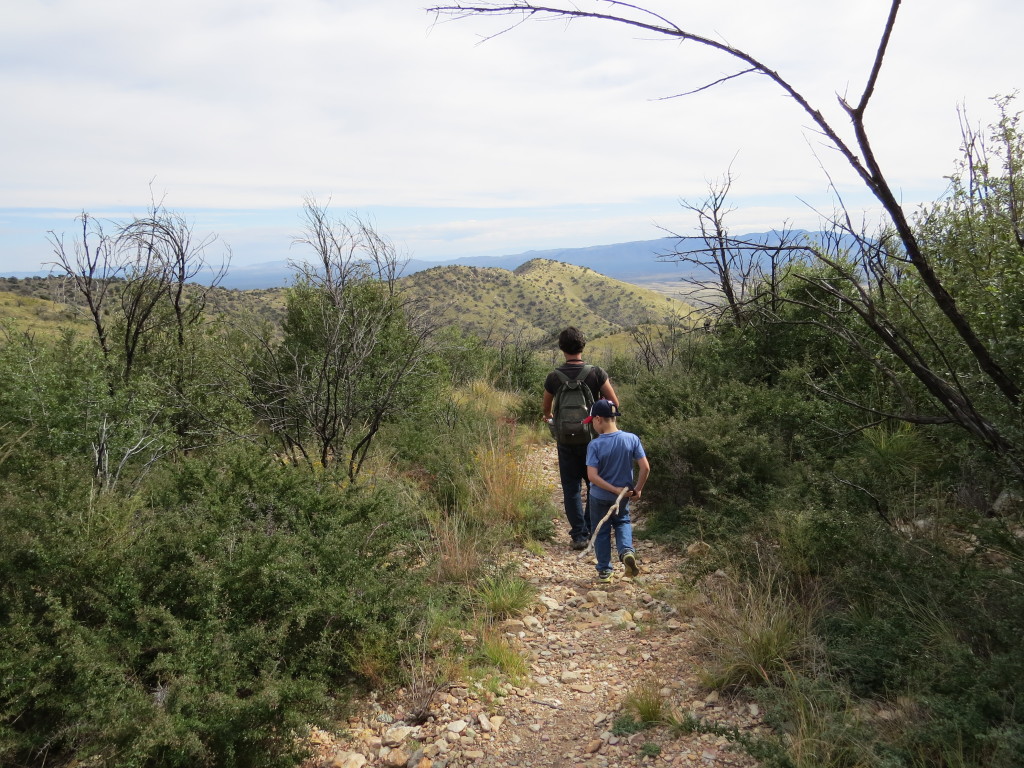 …and then go to next-door Miller Canyon and Ash Canyon for even more adventure! You don’t want to miss it–there will be coon dogs, guns, and yes, more cool lifers.
…and then go to next-door Miller Canyon and Ash Canyon for even more adventure! You don’t want to miss it–there will be coon dogs, guns, and yes, more cool lifers.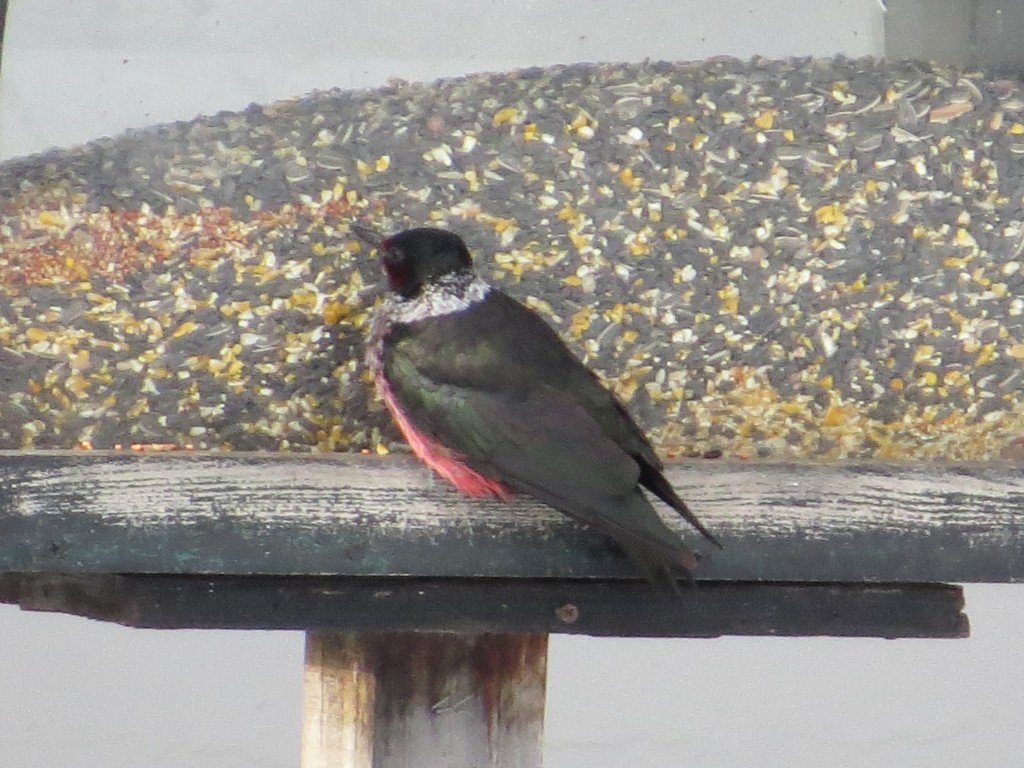 This trip, besides giving us a cool lifer, brought us to the edge of the world, which is somewhere near Baudette. We were within spitting distance of Ontario, an experiment in which the spit would shatter upon impact 11 months out of the year. Yes, that Woodpecker got us to explore a corner of the state we probably never, ever would have dreamed of going…ever. And then we would have missed seeing Willie, Minnesota’s largest walleye.
This trip, besides giving us a cool lifer, brought us to the edge of the world, which is somewhere near Baudette. We were within spitting distance of Ontario, an experiment in which the spit would shatter upon impact 11 months out of the year. Yes, that Woodpecker got us to explore a corner of the state we probably never, ever would have dreamed of going…ever. And then we would have missed seeing Willie, Minnesota’s largest walleye.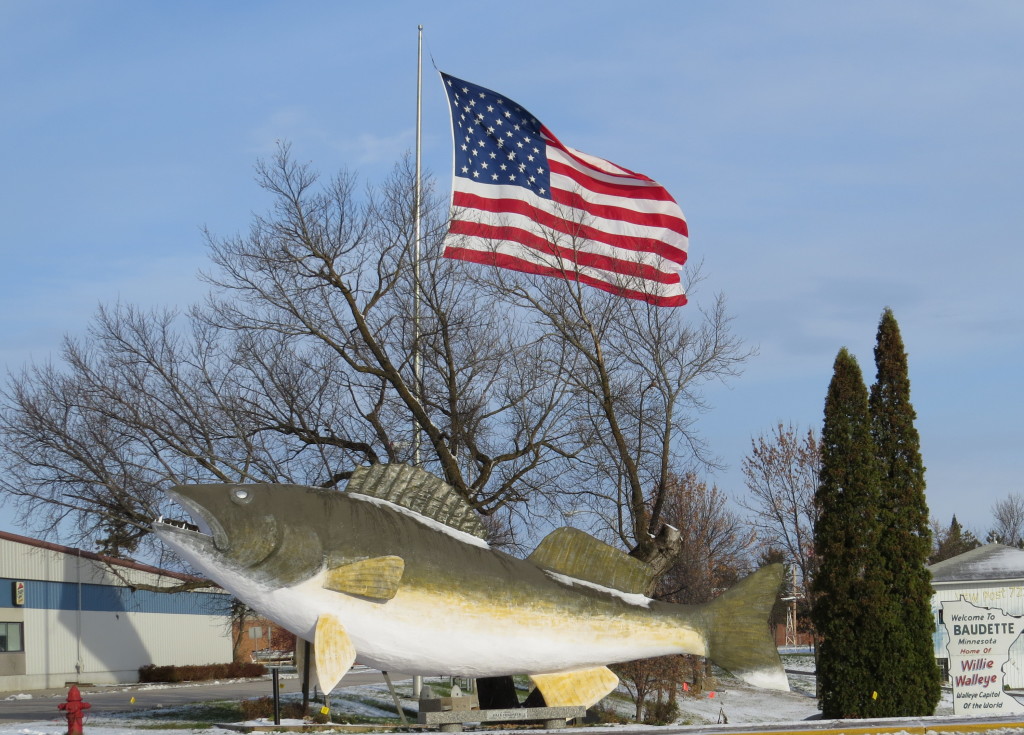
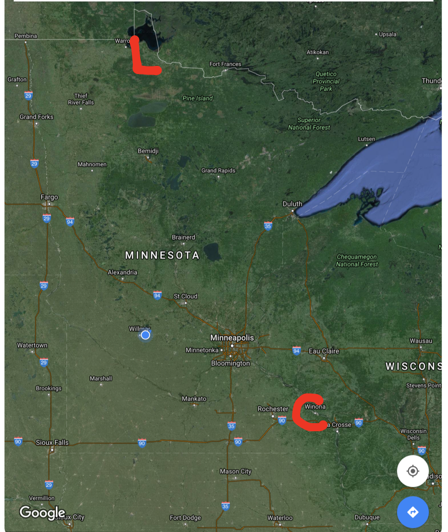
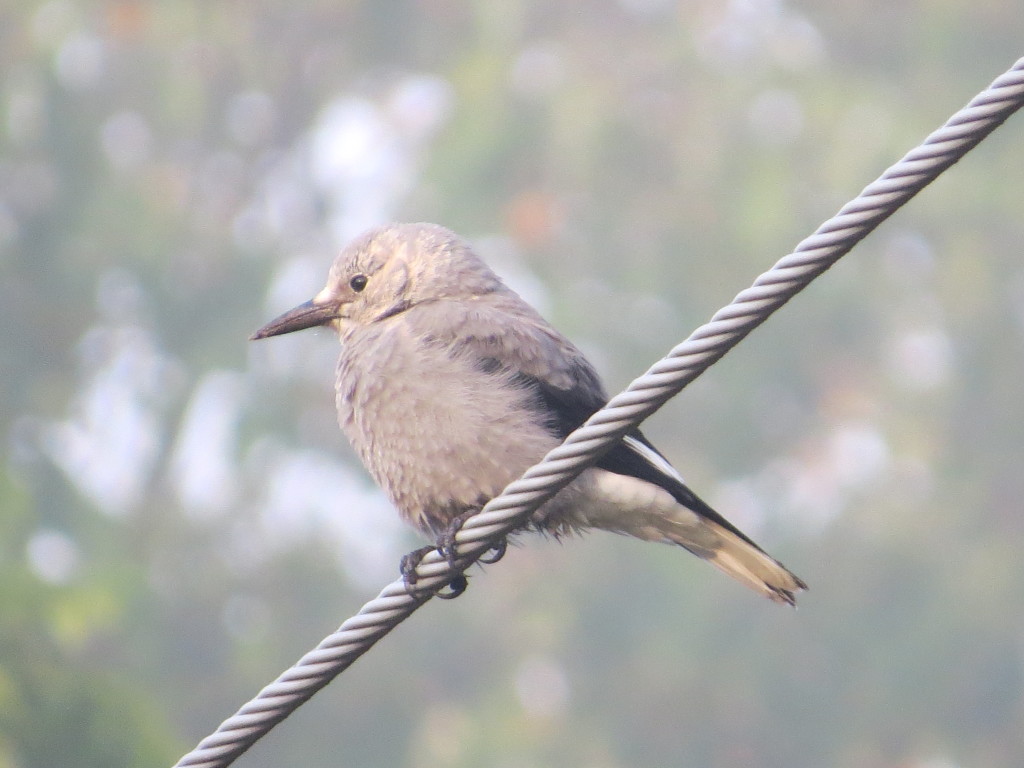
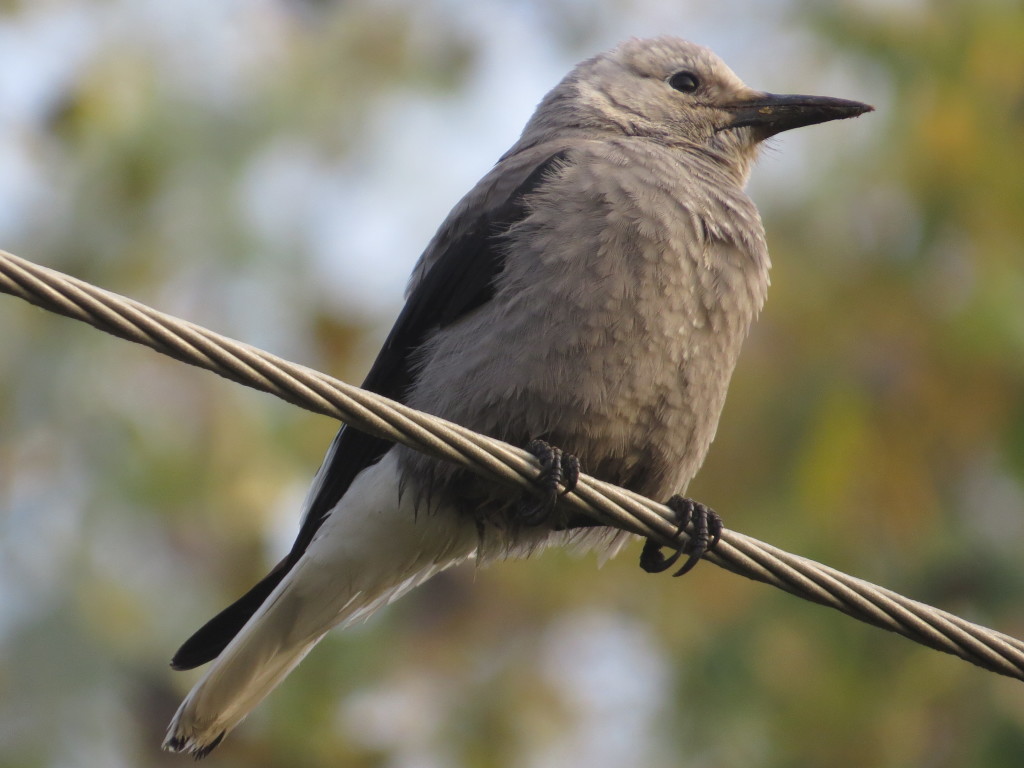
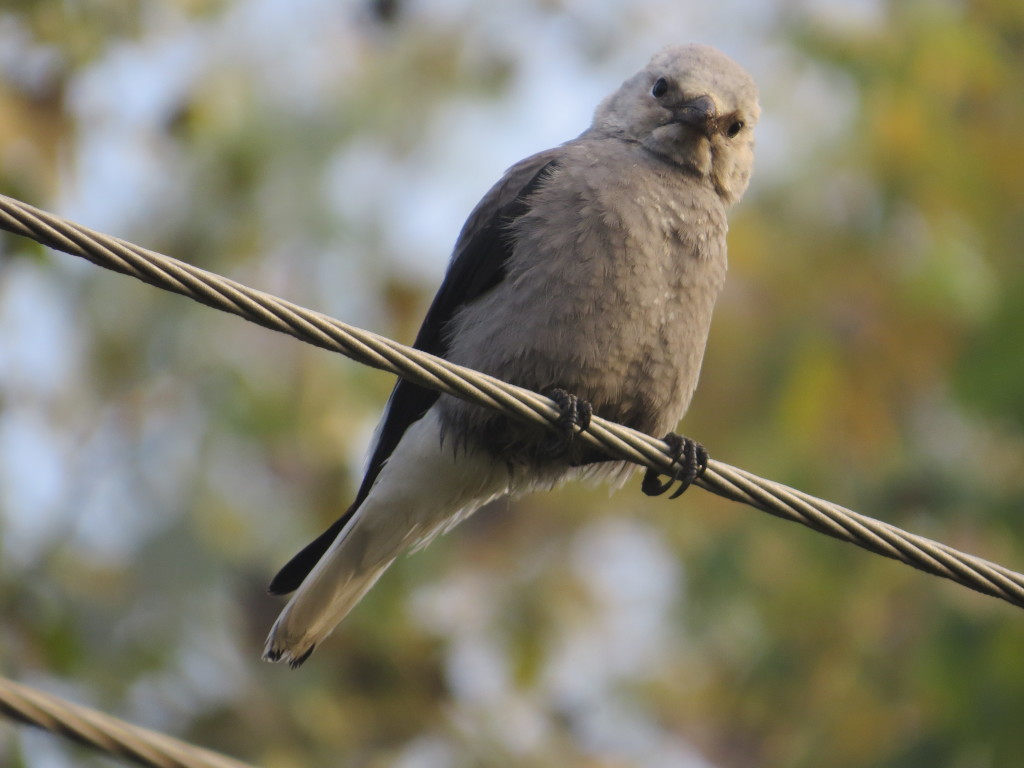
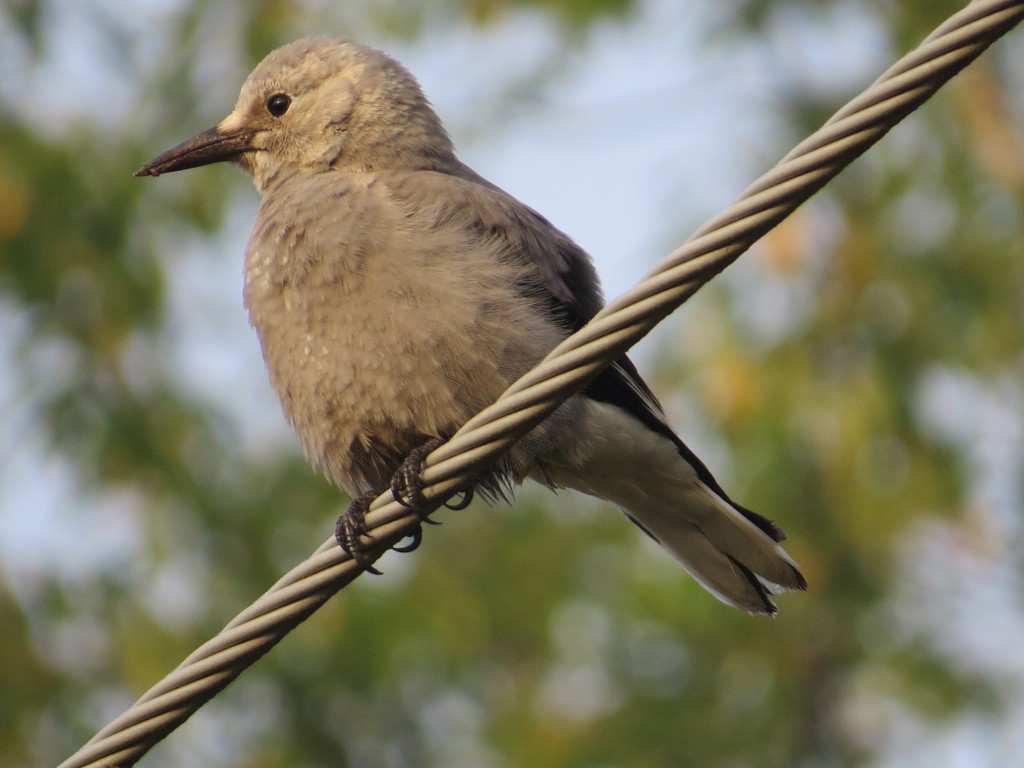 This bird did do more than sit on a wire, not much more, but we saw it fly down to the road to forage. It’s tail pattern in flight is quite a sight. The homeowner who discovered this bird told us to watch for that pattern when it flew.
This bird did do more than sit on a wire, not much more, but we saw it fly down to the road to forage. It’s tail pattern in flight is quite a sight. The homeowner who discovered this bird told us to watch for that pattern when it flew.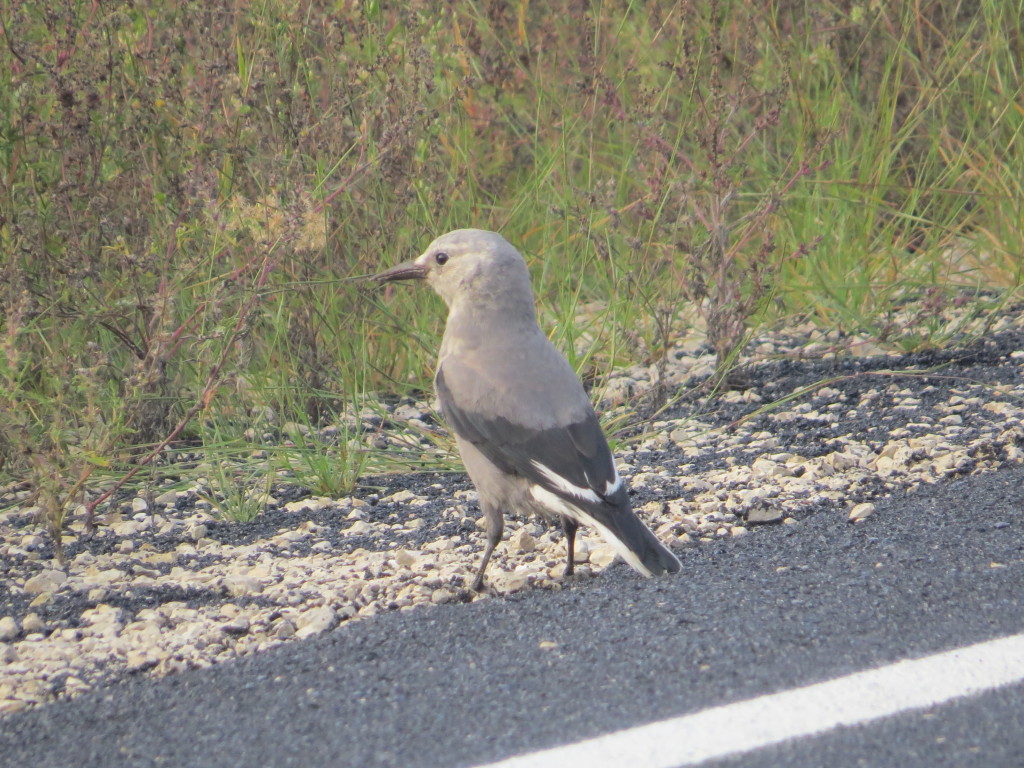 One can only imagine the thoughts running through this grasshopper’s head in this moment. Is it just me, or is it on its knees pleading for mercy?
One can only imagine the thoughts running through this grasshopper’s head in this moment. Is it just me, or is it on its knees pleading for mercy?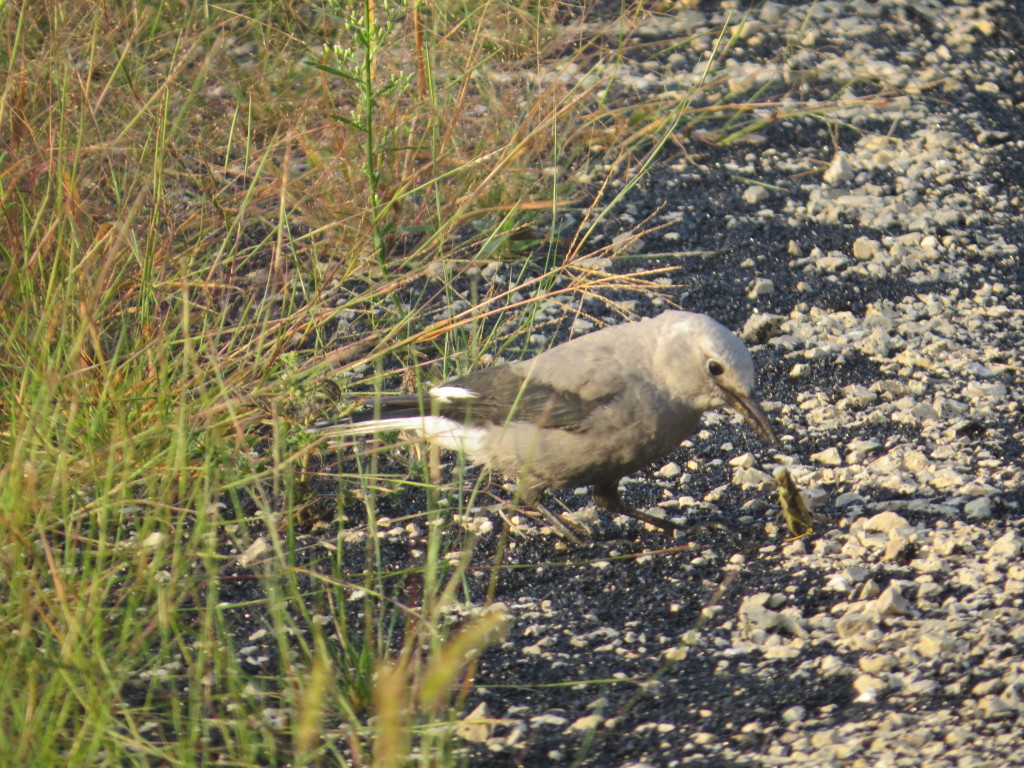 Hunger trumps mercy apparently.
Hunger trumps mercy apparently.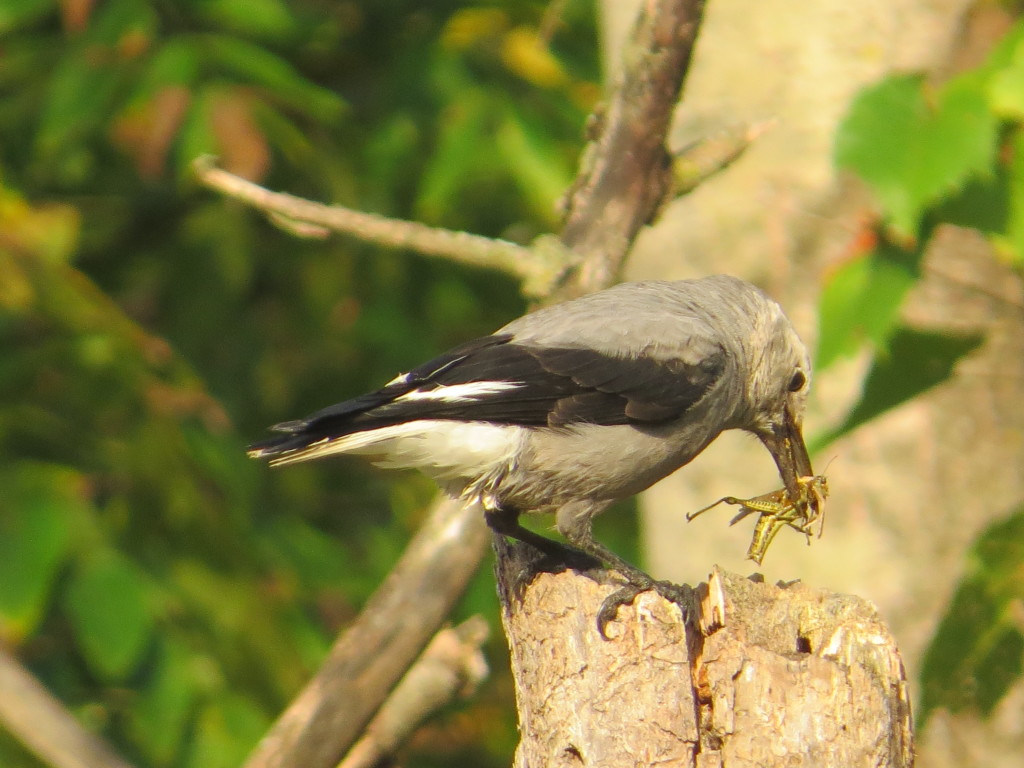
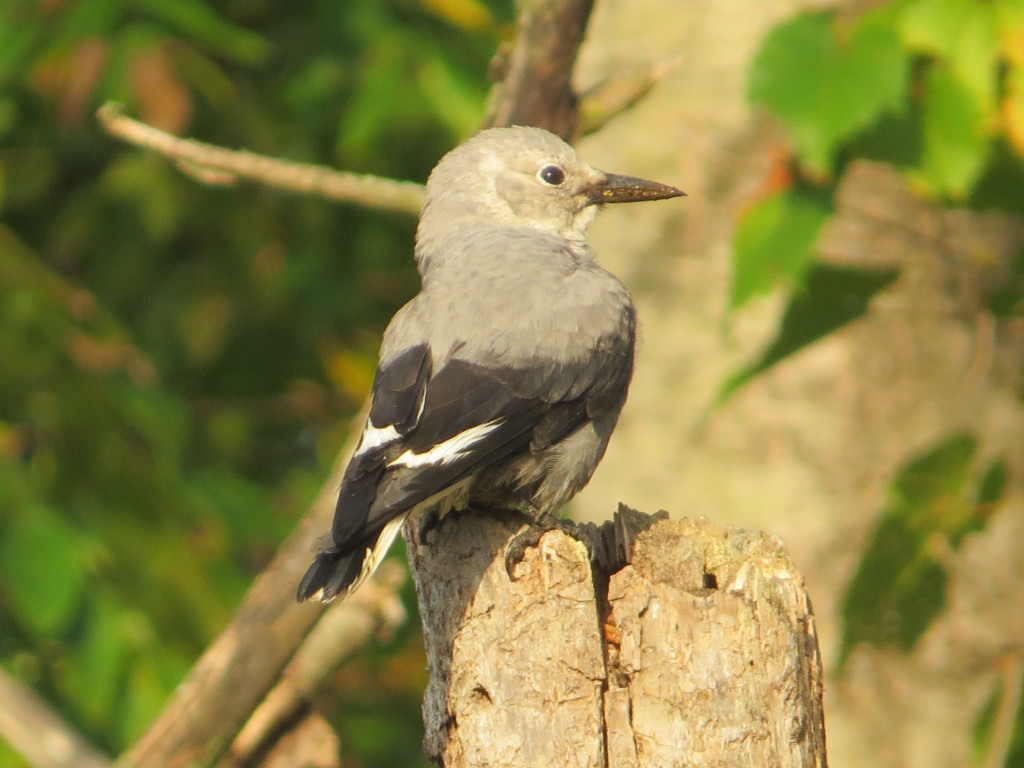
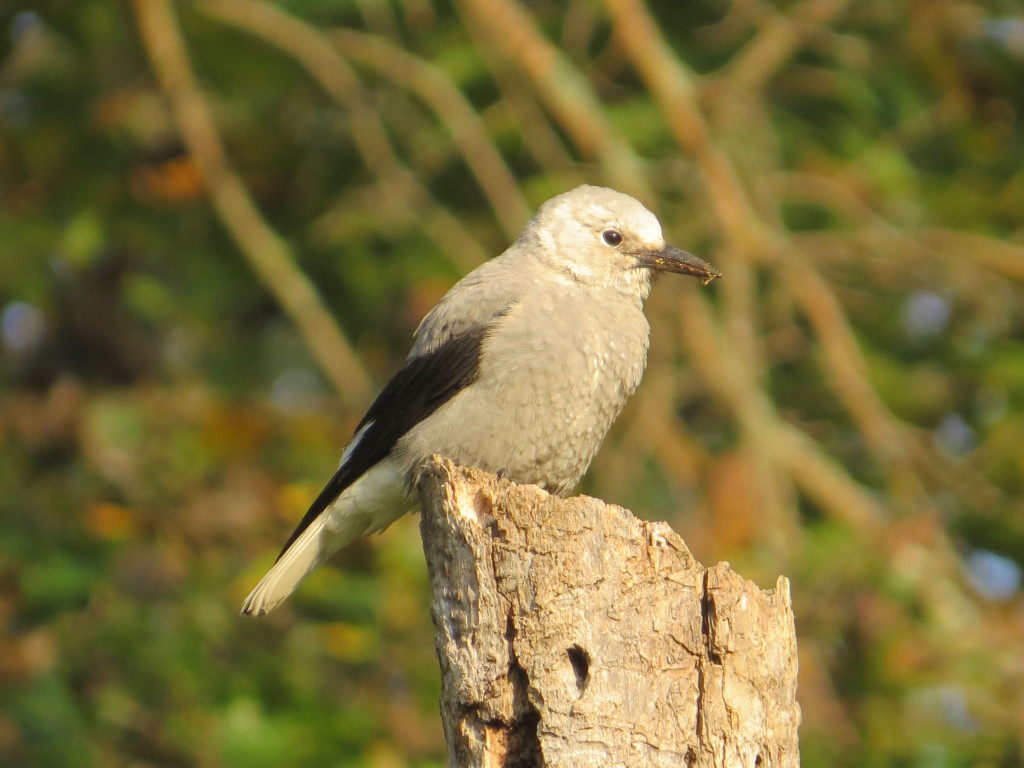
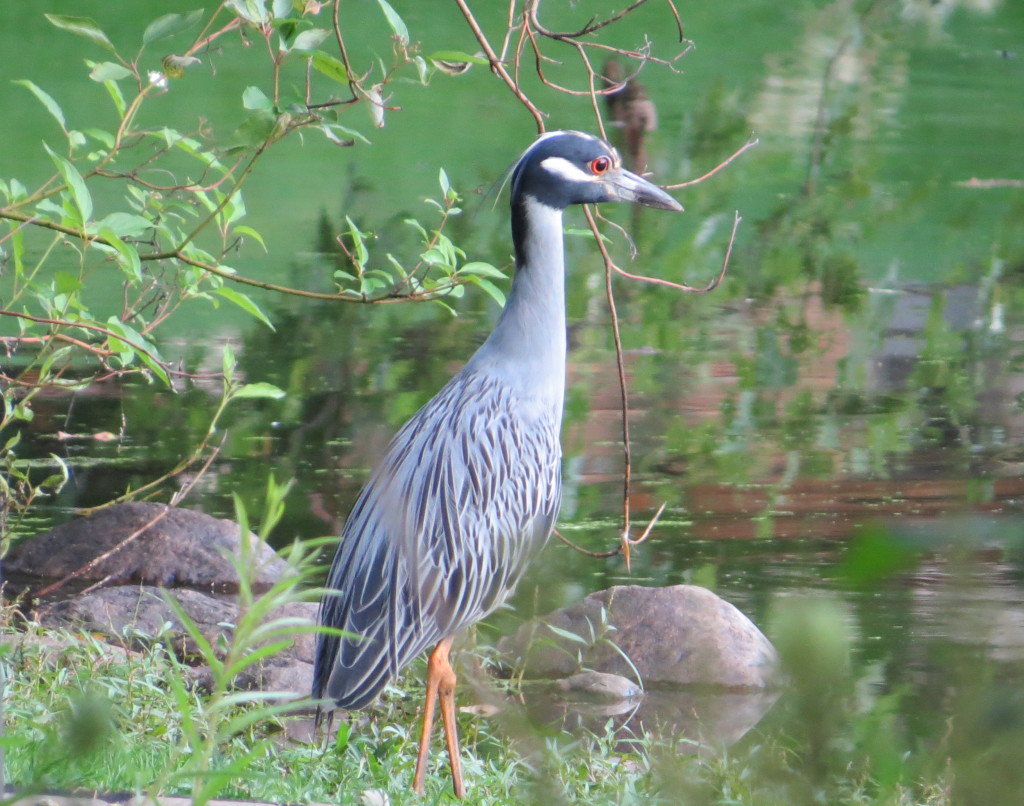
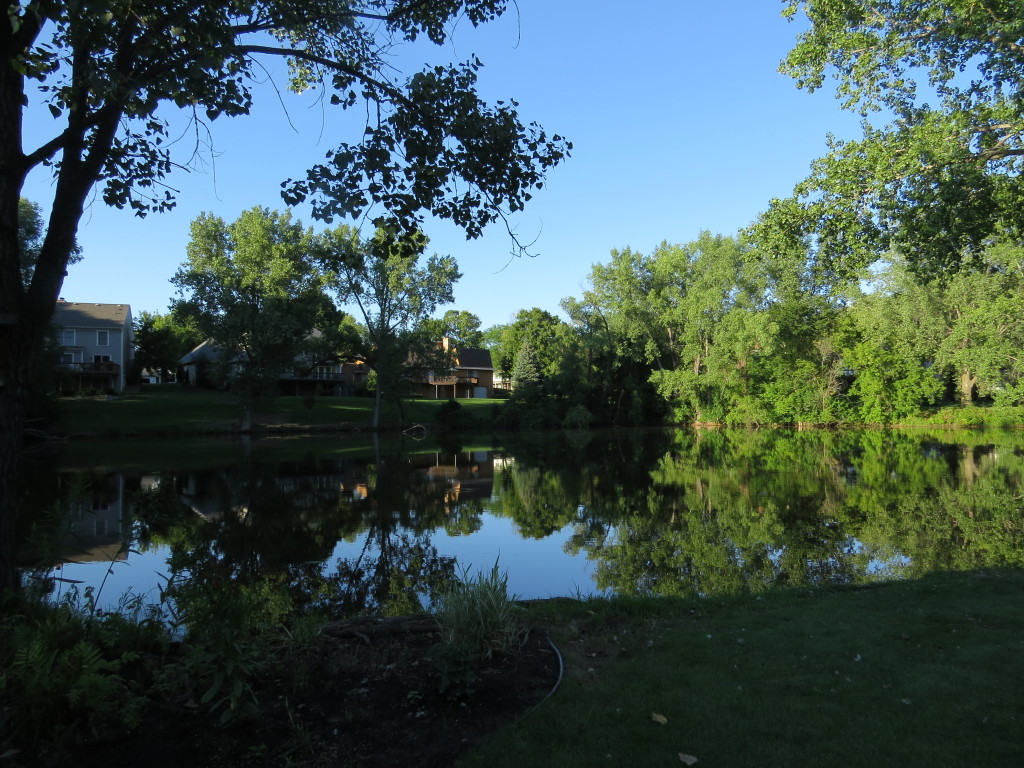 The two large backyard ponds and connecting channel had many shady, reclusive haunts and corners from the overgrown vegetation along the banks. And there were enough large snails and crayfish around for Herons to have a “Chubby Bunny” contest too.
The two large backyard ponds and connecting channel had many shady, reclusive haunts and corners from the overgrown vegetation along the banks. And there were enough large snails and crayfish around for Herons to have a “Chubby Bunny” contest too.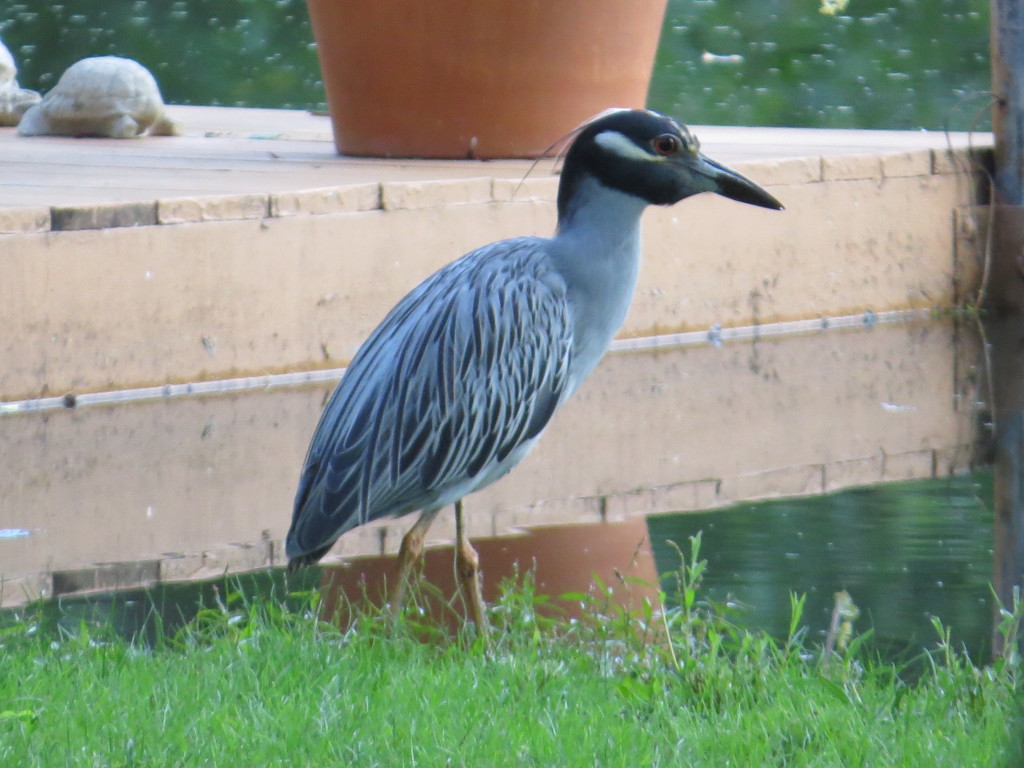 The announcement came in early enough in the evening that those lucky Twin Cities birders could swarm it immediately. My trip was too far to get there before dark. I was there the next day, though. Conveniently I had to go to the Cities that day anyway. Inconveniently, the time of day was wrong and the bird did not come out. So I made the 1.5 hour trek again the following day, only this time in the evening when the bird had been showing. It took nearly two hours of waiting, but just as I was about to call it quits, the bird flew in from its treetop roost to begin its foraging.
The announcement came in early enough in the evening that those lucky Twin Cities birders could swarm it immediately. My trip was too far to get there before dark. I was there the next day, though. Conveniently I had to go to the Cities that day anyway. Inconveniently, the time of day was wrong and the bird did not come out. So I made the 1.5 hour trek again the following day, only this time in the evening when the bird had been showing. It took nearly two hours of waiting, but just as I was about to call it quits, the bird flew in from its treetop roost to begin its foraging.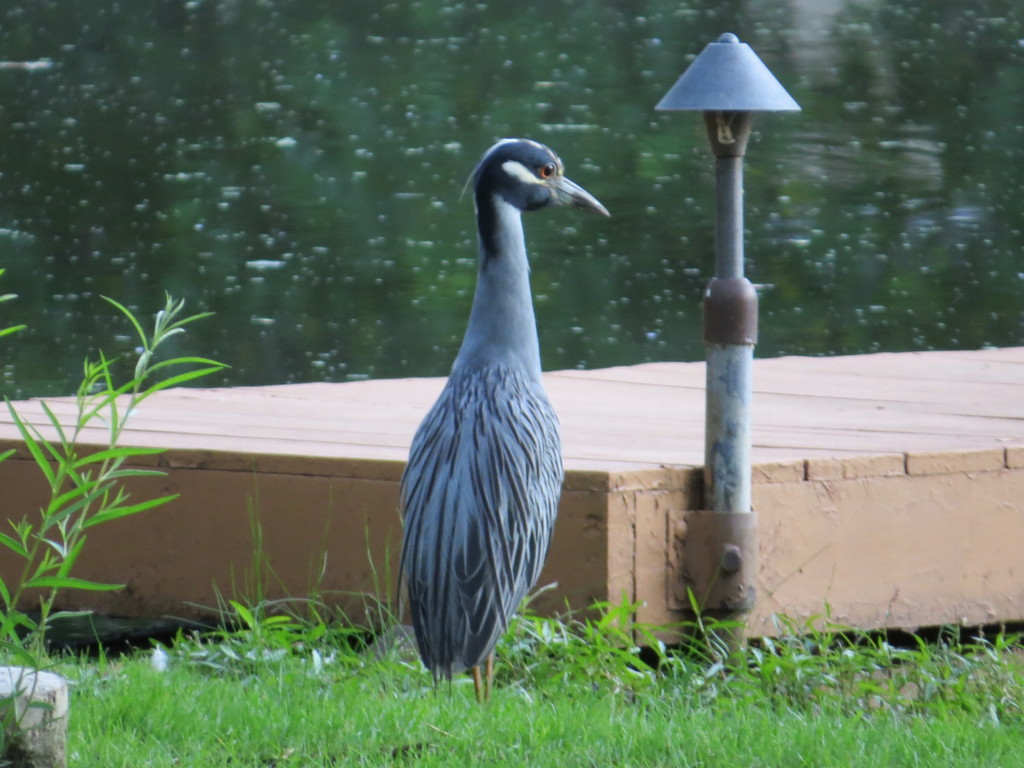
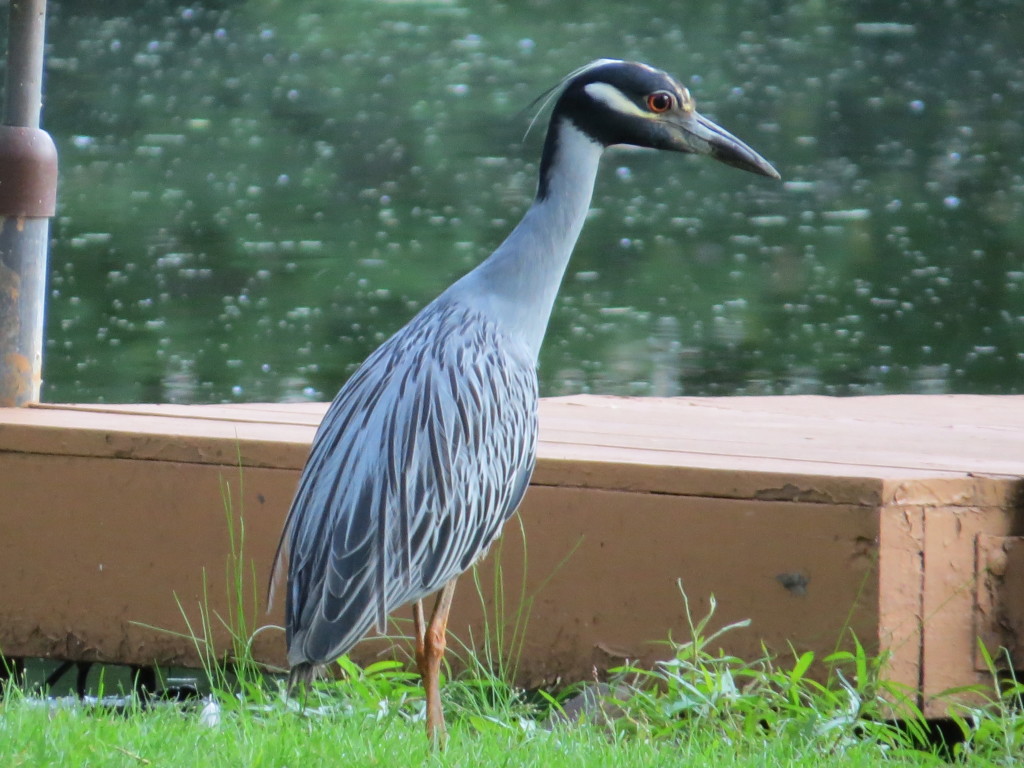
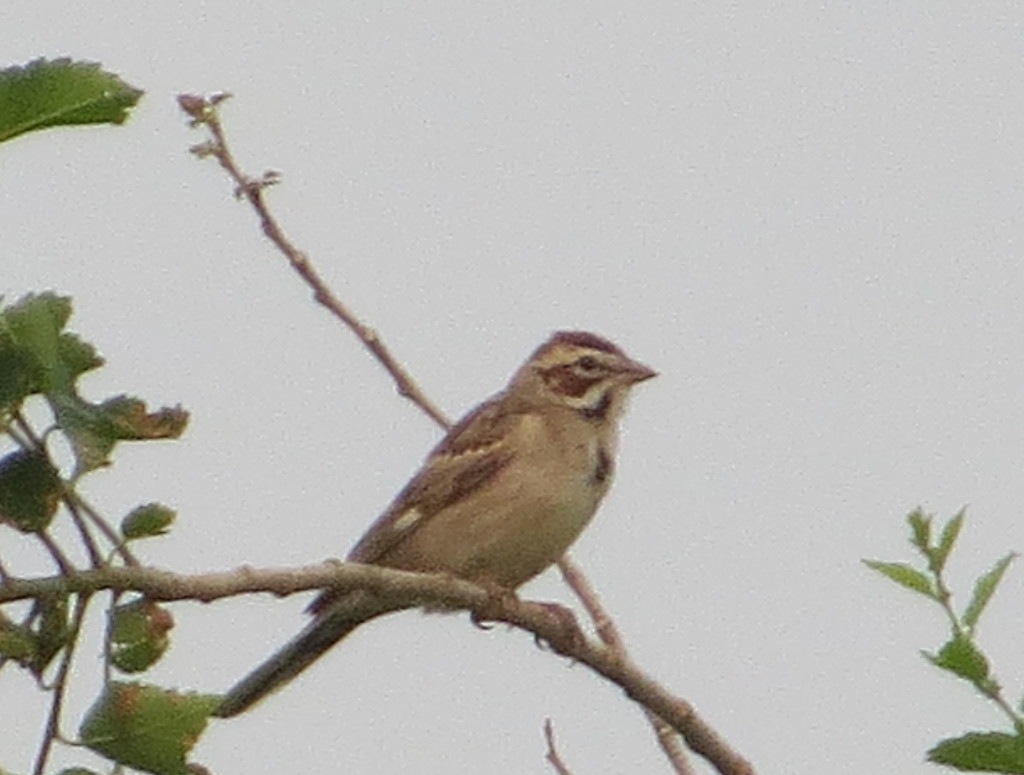
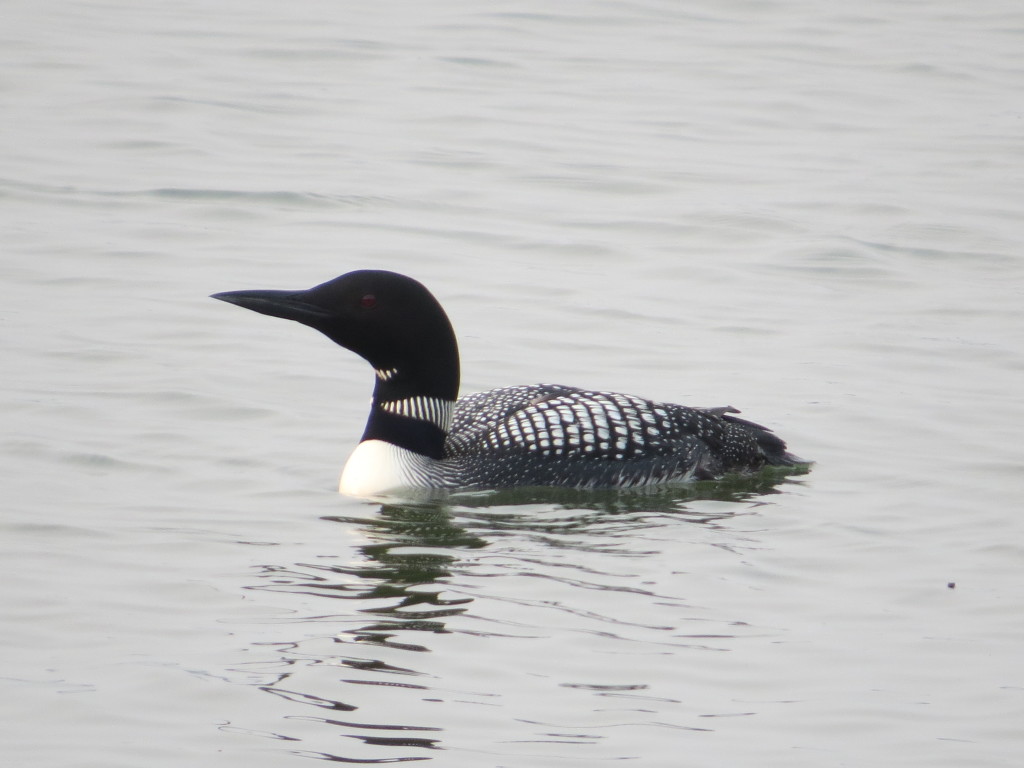 Hmmm…I wonder why they didn’t have a chick with them. It’s best not to think about that.
Hmmm…I wonder why they didn’t have a chick with them. It’s best not to think about that.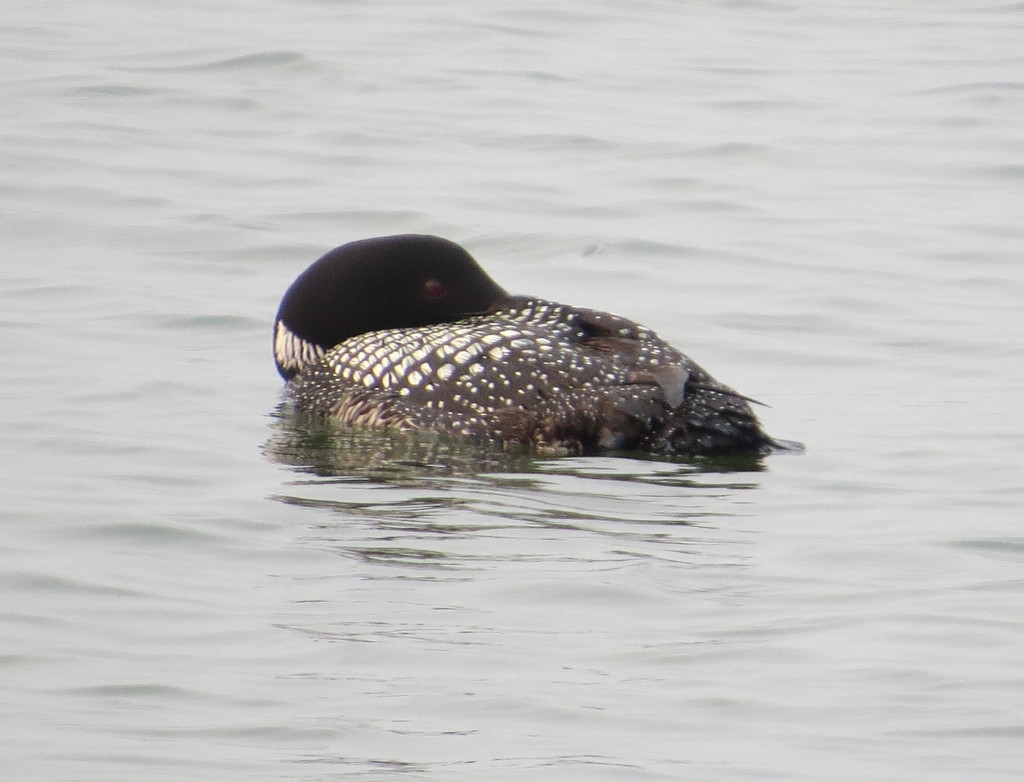 I got back to the house, happy with my morning, and was busy documenting my LASP sighting. Then an email came in that changed the course of my day. After nearly 15 hours of observing the mystery Kingbird over the course of a week, Bruce Fall clinched the ID after hearing the Kingbird vocalize when a Brown-headed Cowbird got too close for comfort. Tropical Kingbird. Holy smokes. This is a scarce bird in even the tiny corners of Arizona and Texas that it calls home. I told Melissa I would have to try to squeeze in a fast trip to the Cities to try for this one. This was a Minnesota first state record of a Tropical Kingbird after all.
I got back to the house, happy with my morning, and was busy documenting my LASP sighting. Then an email came in that changed the course of my day. After nearly 15 hours of observing the mystery Kingbird over the course of a week, Bruce Fall clinched the ID after hearing the Kingbird vocalize when a Brown-headed Cowbird got too close for comfort. Tropical Kingbird. Holy smokes. This is a scarce bird in even the tiny corners of Arizona and Texas that it calls home. I told Melissa I would have to try to squeeze in a fast trip to the Cities to try for this one. This was a Minnesota first state record of a Tropical Kingbird after all.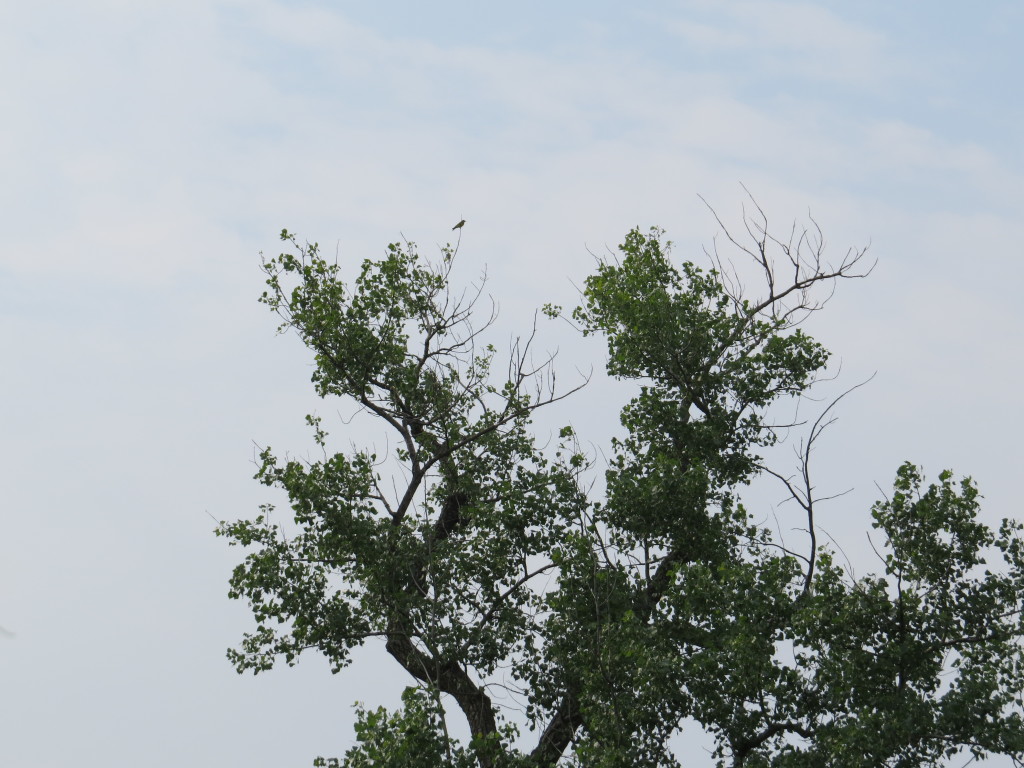
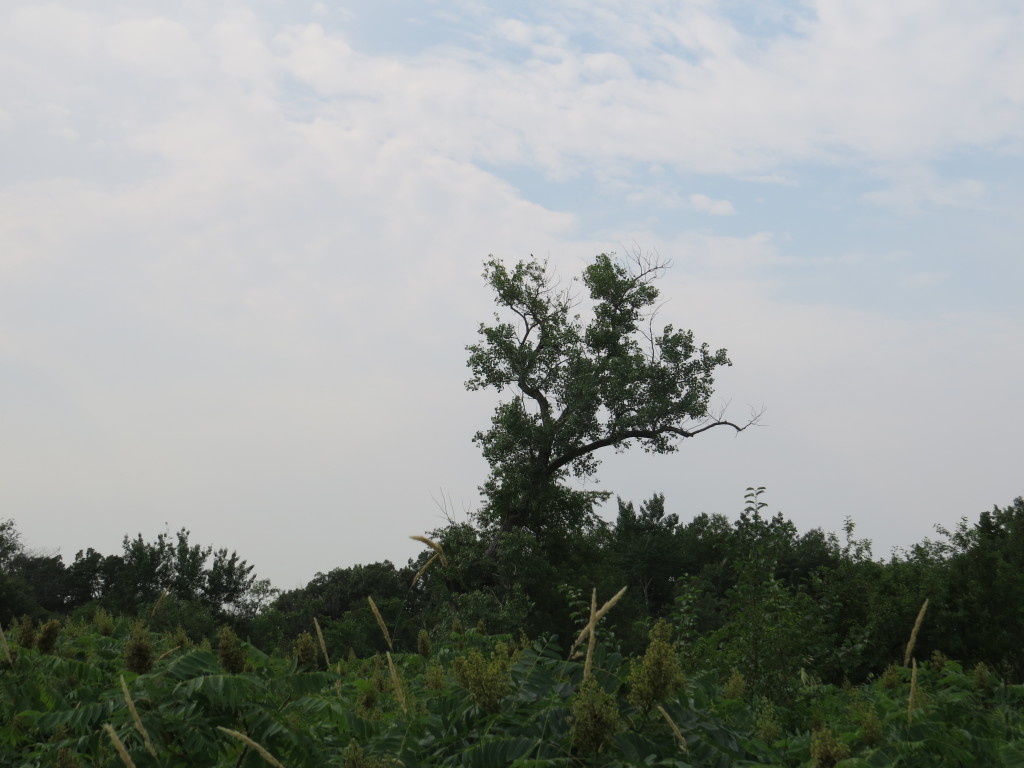
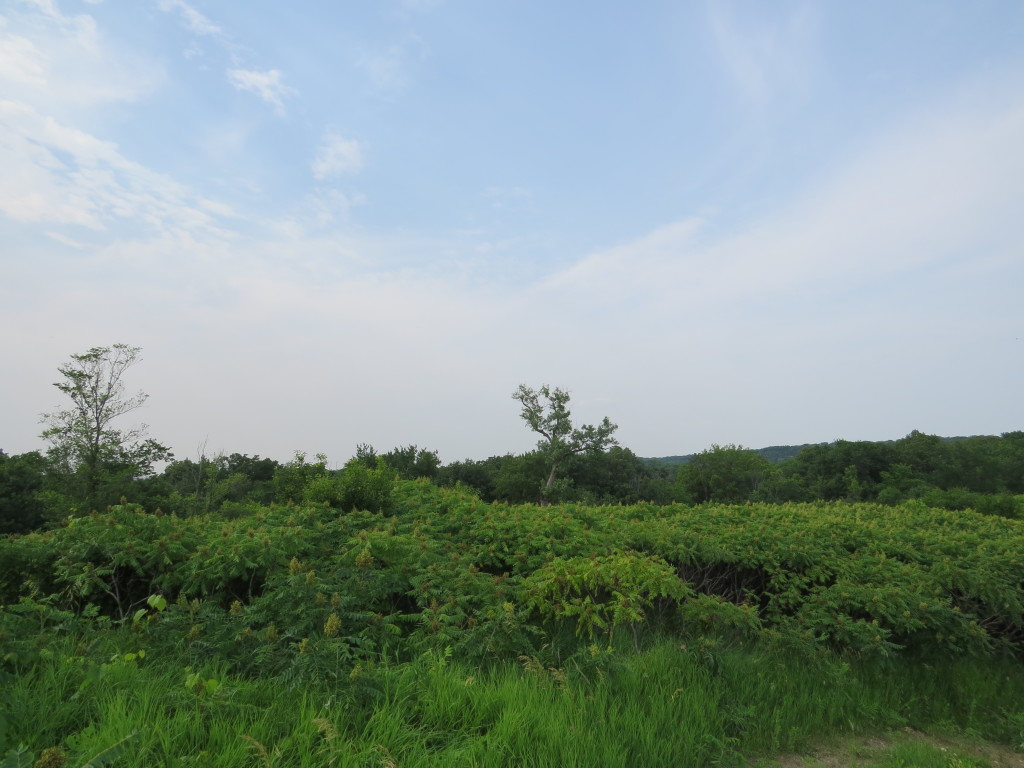 The bird was out there a ways, so I did the best I could for photos.
The bird was out there a ways, so I did the best I could for photos.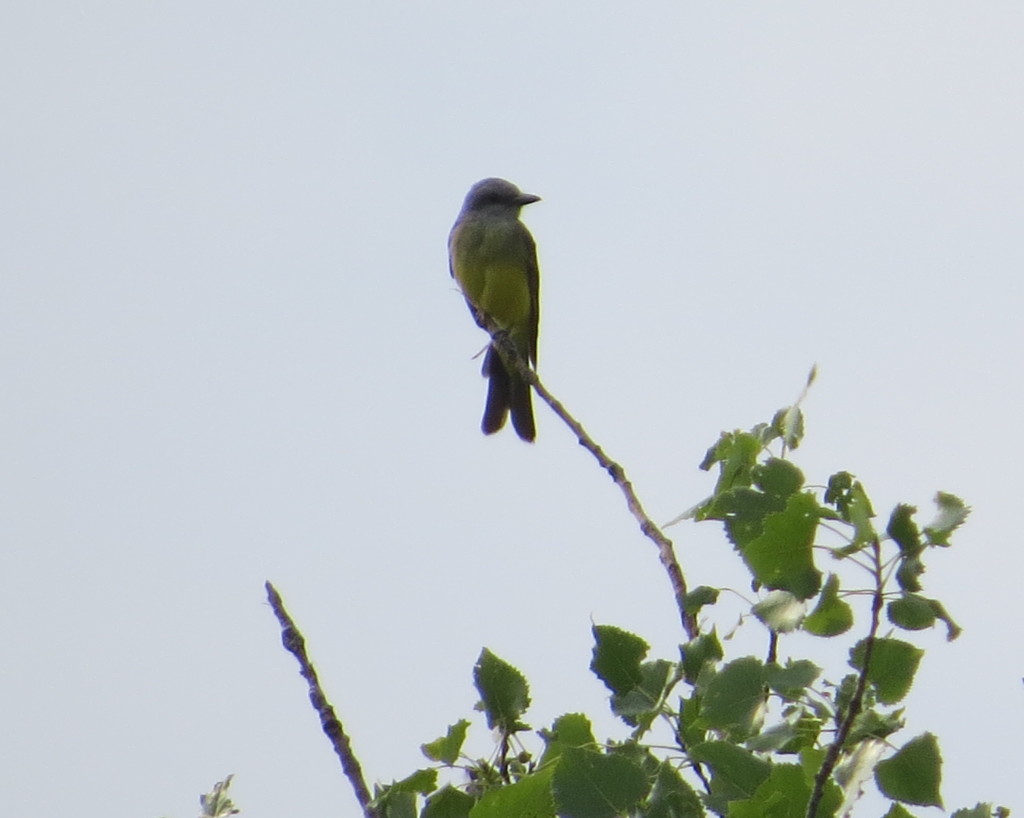
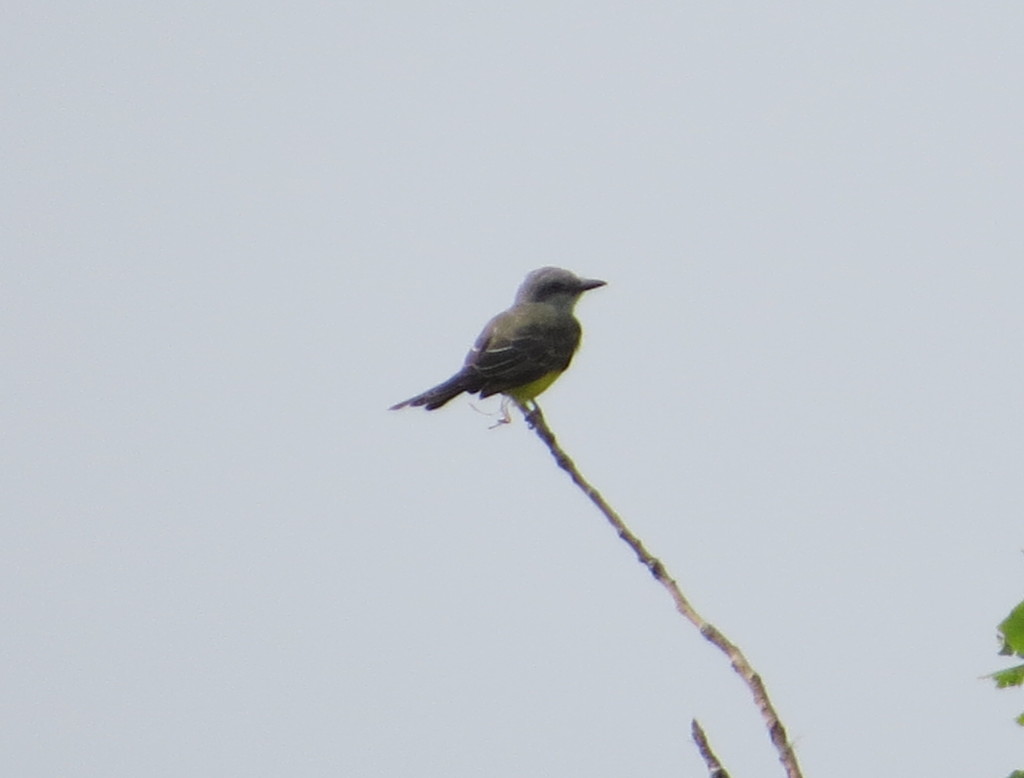 I showed the kids the bird on the camera’s LCD. With another check mark for his list, Evan was out of there (and Melissa and Marin too).
I showed the kids the bird on the camera’s LCD. With another check mark for his list, Evan was out of there (and Melissa and Marin too).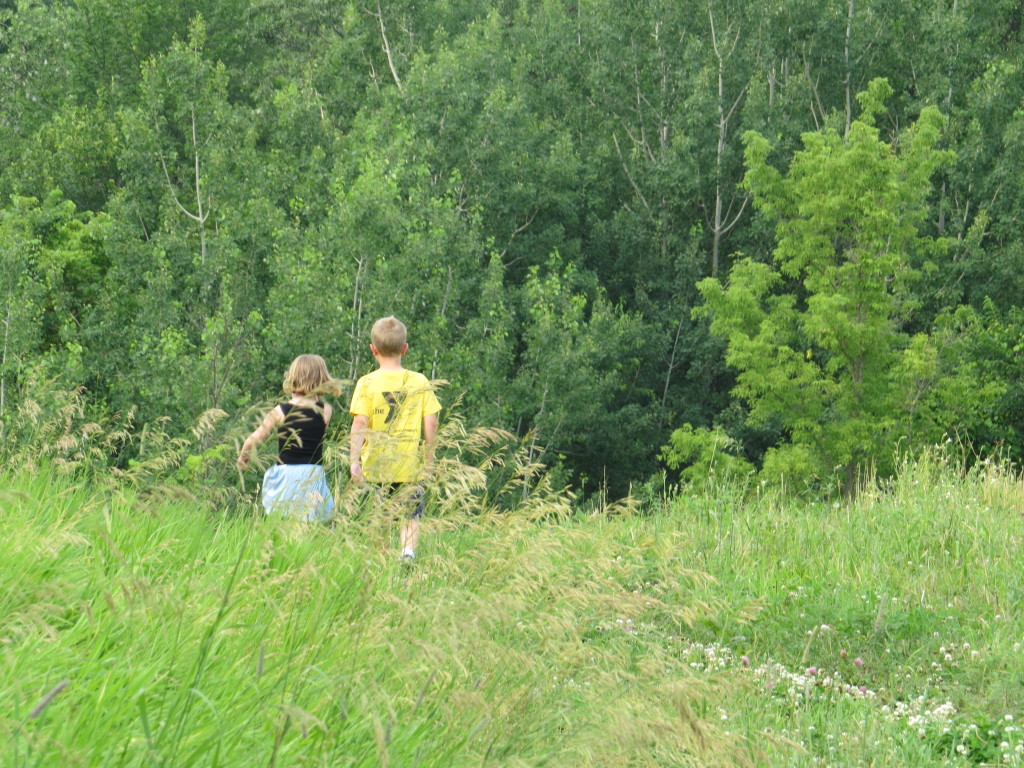 I was hoping for better photos, so I stayed for a little while. After ten minutes of observation, something incredible happened that two other birders present and myself witnessed: the Tropical Kingbird stretched out its neck, pulled its wings behind its back, and vocalized! It was a 1-second higher-pitched trill. I later listened to the sounds of TRKI on the iPod, and it was a match for the first call listed. I felt bad for all the birders that have watched and watched this bird just waiting for such a moment. Luck of the draw I guess. Just like when something even better then happened–the Kingbird flew to a low perch right on the path! Matt Stratmoen, his 600 mm lense, and I hustled down the path to get near it. We’d snap some photos, creep closer, snap, creep, snap, etc. We eventually got within 100 feet or less.
I was hoping for better photos, so I stayed for a little while. After ten minutes of observation, something incredible happened that two other birders present and myself witnessed: the Tropical Kingbird stretched out its neck, pulled its wings behind its back, and vocalized! It was a 1-second higher-pitched trill. I later listened to the sounds of TRKI on the iPod, and it was a match for the first call listed. I felt bad for all the birders that have watched and watched this bird just waiting for such a moment. Luck of the draw I guess. Just like when something even better then happened–the Kingbird flew to a low perch right on the path! Matt Stratmoen, his 600 mm lense, and I hustled down the path to get near it. We’d snap some photos, creep closer, snap, creep, snap, etc. We eventually got within 100 feet or less.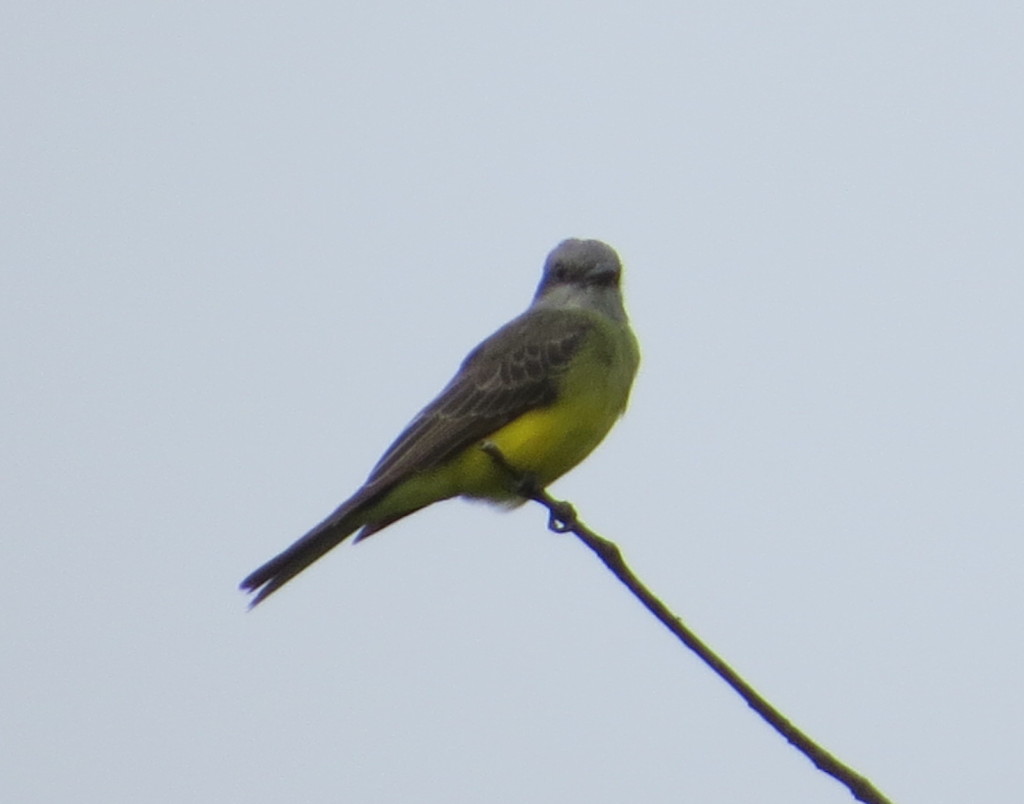 Matt is the one who took that amazing image of the Orr Black-backed Woodpeckers with the mom and dad in profile perched on either side of the nest hole with the baby sticking his head out screaming. Amazing image. It’s on
Matt is the one who took that amazing image of the Orr Black-backed Woodpeckers with the mom and dad in profile perched on either side of the nest hole with the baby sticking his head out screaming. Amazing image. It’s on 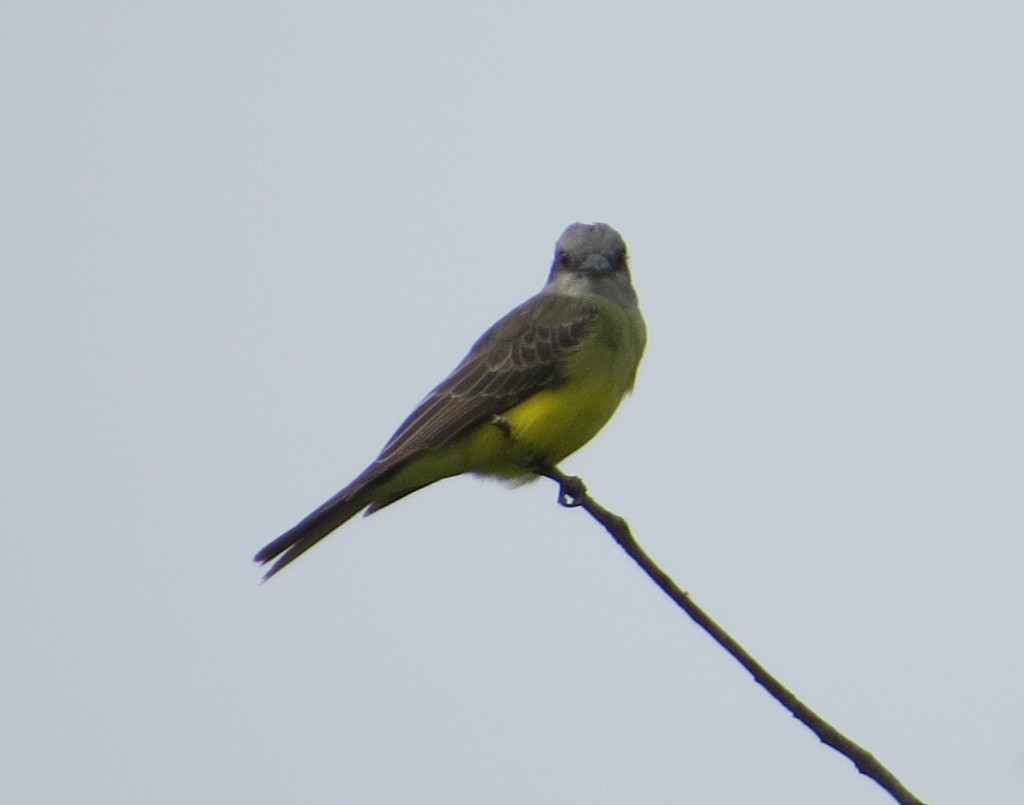 We won’t talk about the quality difference between Matt’s photos and mine of the Tropical Kingbird from the same distance. But I can live with mine. The views were phenomenal and more than I hoped for.
We won’t talk about the quality difference between Matt’s photos and mine of the Tropical Kingbird from the same distance. But I can live with mine. The views were phenomenal and more than I hoped for.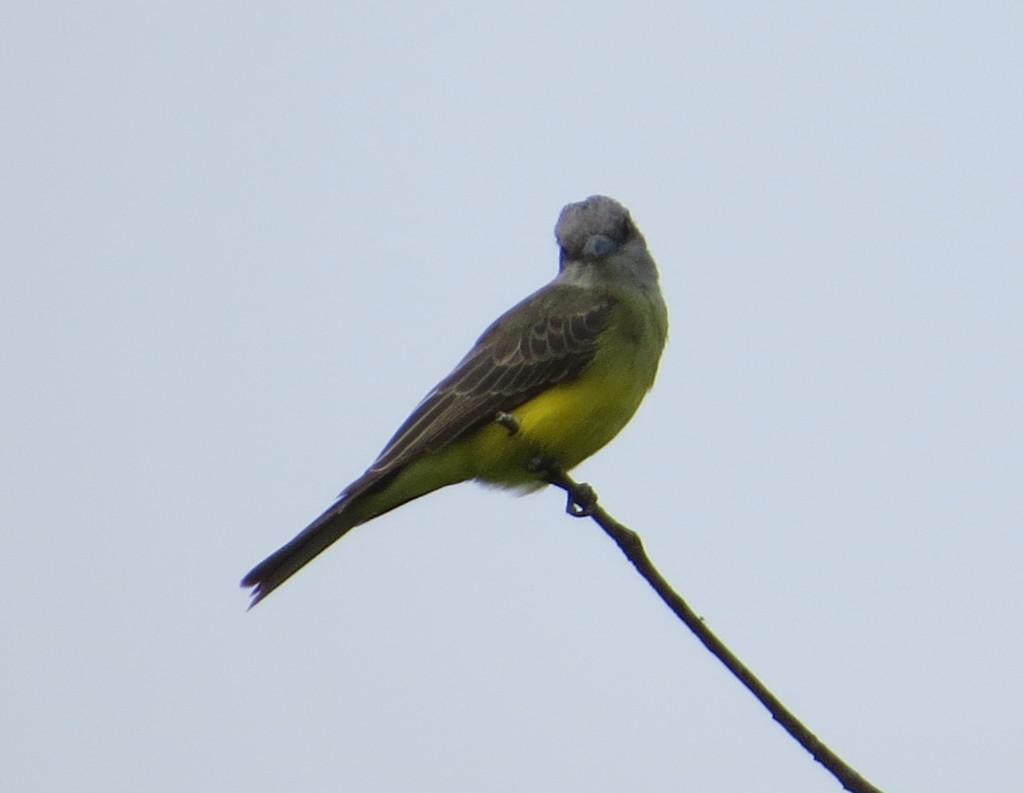
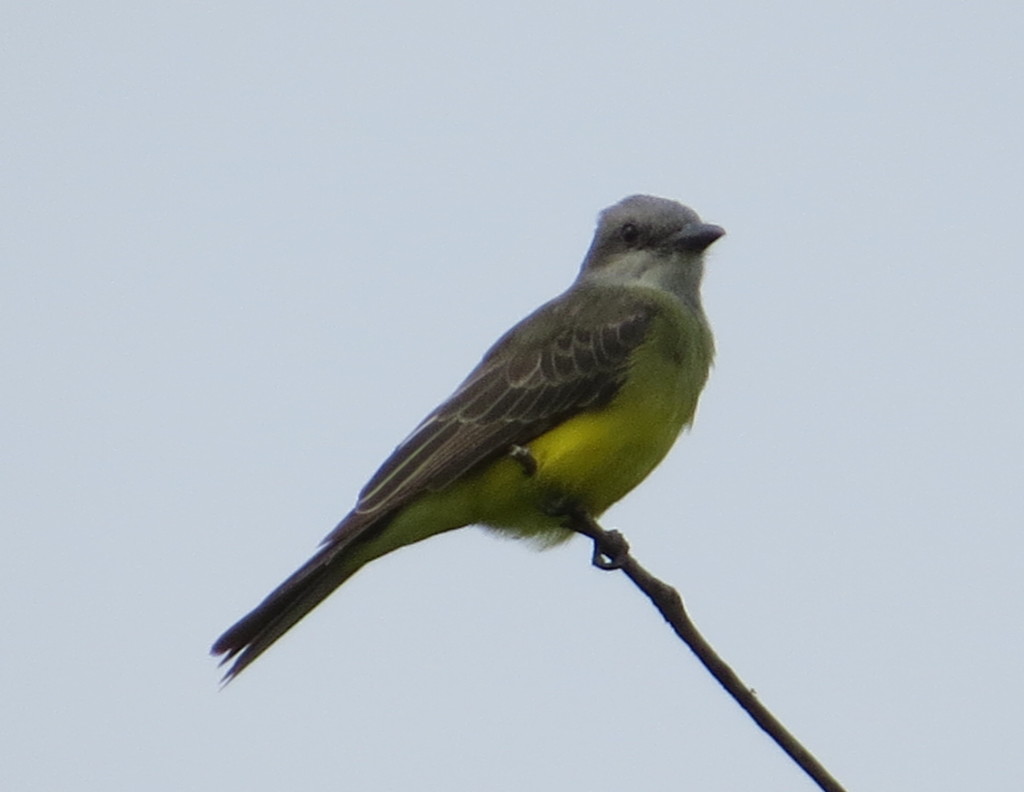 The Kingbird had enough of this low perch and went back to his tall, remote Cottonwood. I got what I came for and then some, so I hustled back to the van after just a half hour of observation. After all, Swedish meatballs and a fight loading Ikea furniture in the van were calling my name.
The Kingbird had enough of this low perch and went back to his tall, remote Cottonwood. I got what I came for and then some, so I hustled back to the van after just a half hour of observation. After all, Swedish meatballs and a fight loading Ikea furniture in the van were calling my name.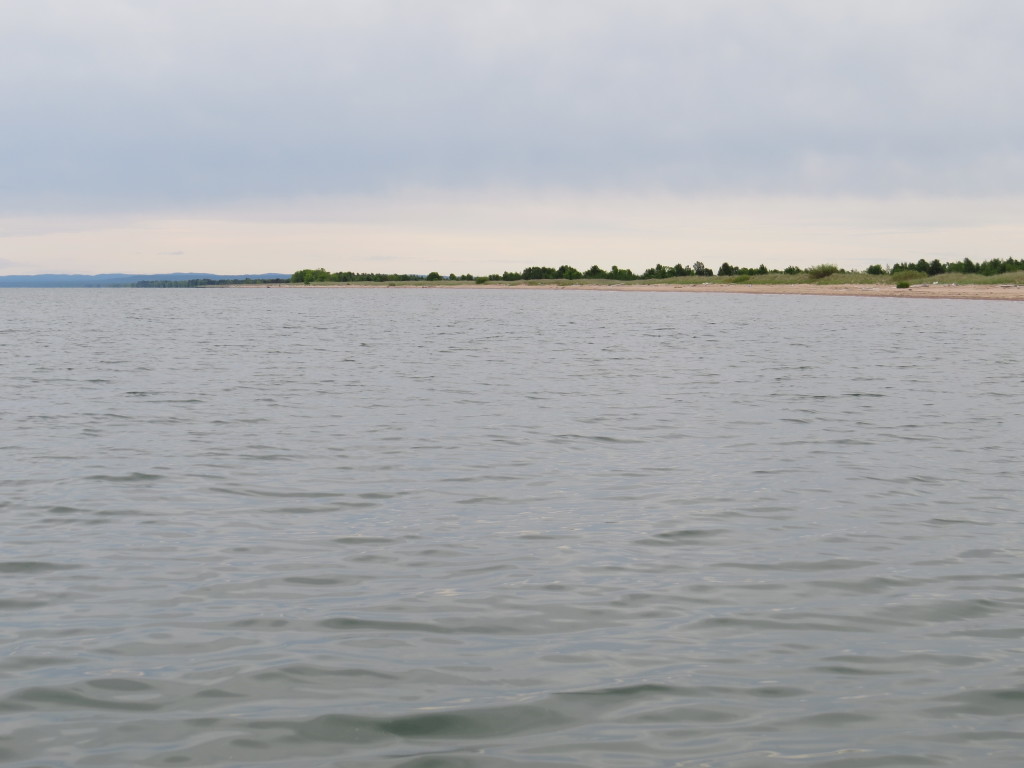
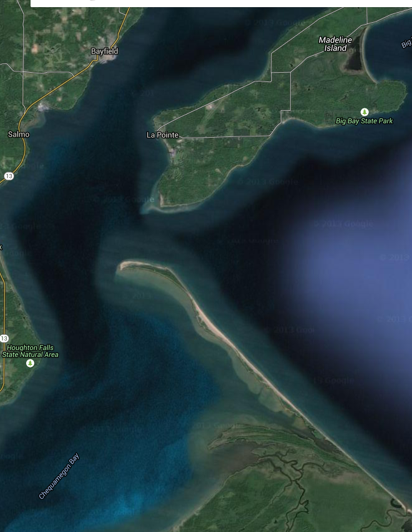
 This was definitely the most I’ve paid for a single life bird. Other trips, like Arizona, are much more expensive, but the huge numbers of lifers down there makes the cost per bird pretty reasonable. In any birding trip, though, you just can’t put a price on the side-benefits, like a family speed-boat ride on Lake Superior.
This was definitely the most I’ve paid for a single life bird. Other trips, like Arizona, are much more expensive, but the huge numbers of lifers down there makes the cost per bird pretty reasonable. In any birding trip, though, you just can’t put a price on the side-benefits, like a family speed-boat ride on Lake Superior.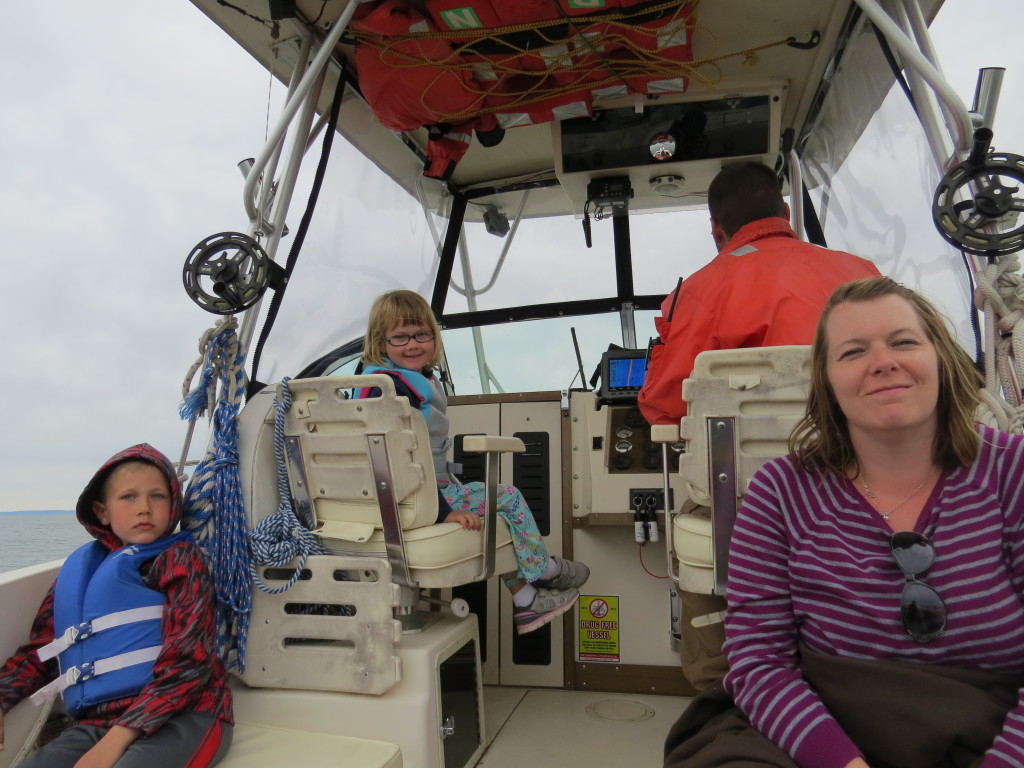
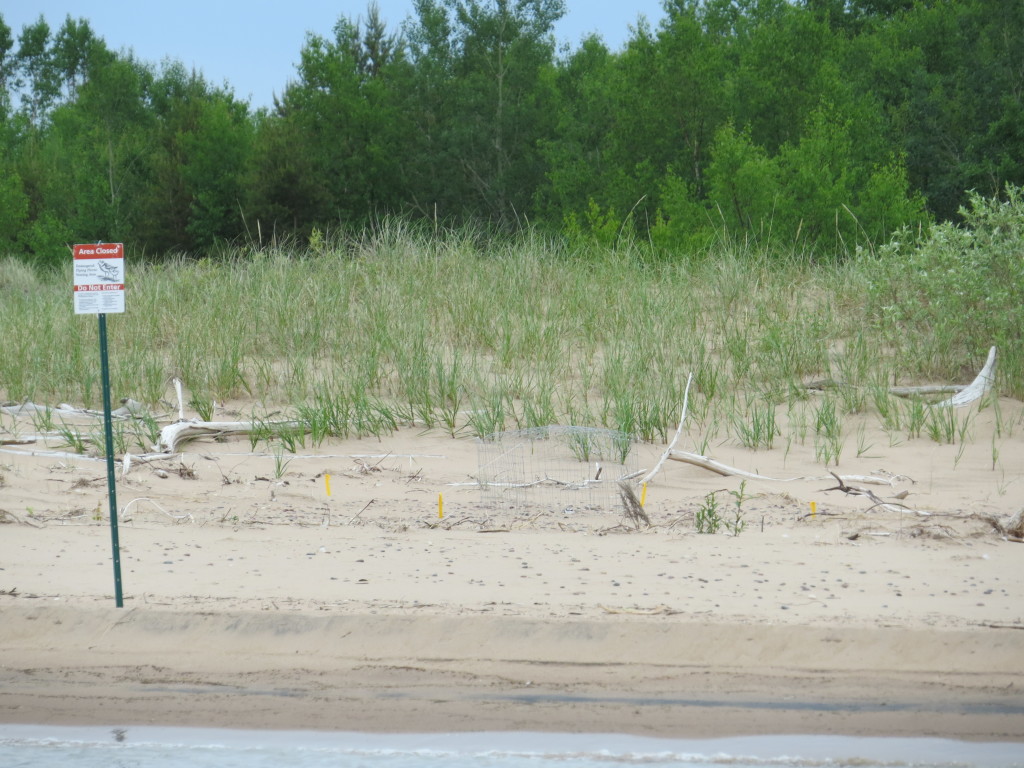 Here’s a cropped view of the above photo showing the male Piping Plover taking his turn on the nest.
Here’s a cropped view of the above photo showing the male Piping Plover taking his turn on the nest. 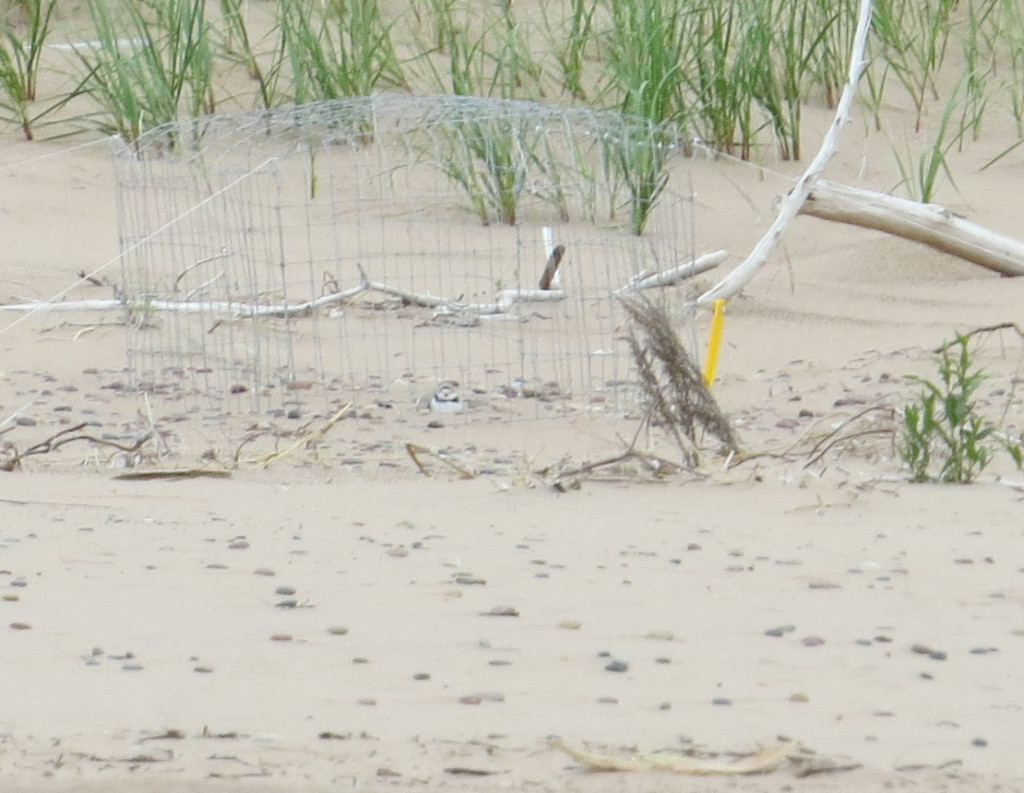 The remoteness of Long Island coupled with miles of perfect beach habitat make this an ideal place for the Piping Plovers to set up shop. Even still, the NPS takes no chances. Since Long Island (a peninsula really) is only accessible by boat, the psychological fencing is placed right at the water’s edge to ward off any beaching watercraft.
The remoteness of Long Island coupled with miles of perfect beach habitat make this an ideal place for the Piping Plovers to set up shop. Even still, the NPS takes no chances. Since Long Island (a peninsula really) is only accessible by boat, the psychological fencing is placed right at the water’s edge to ward off any beaching watercraft.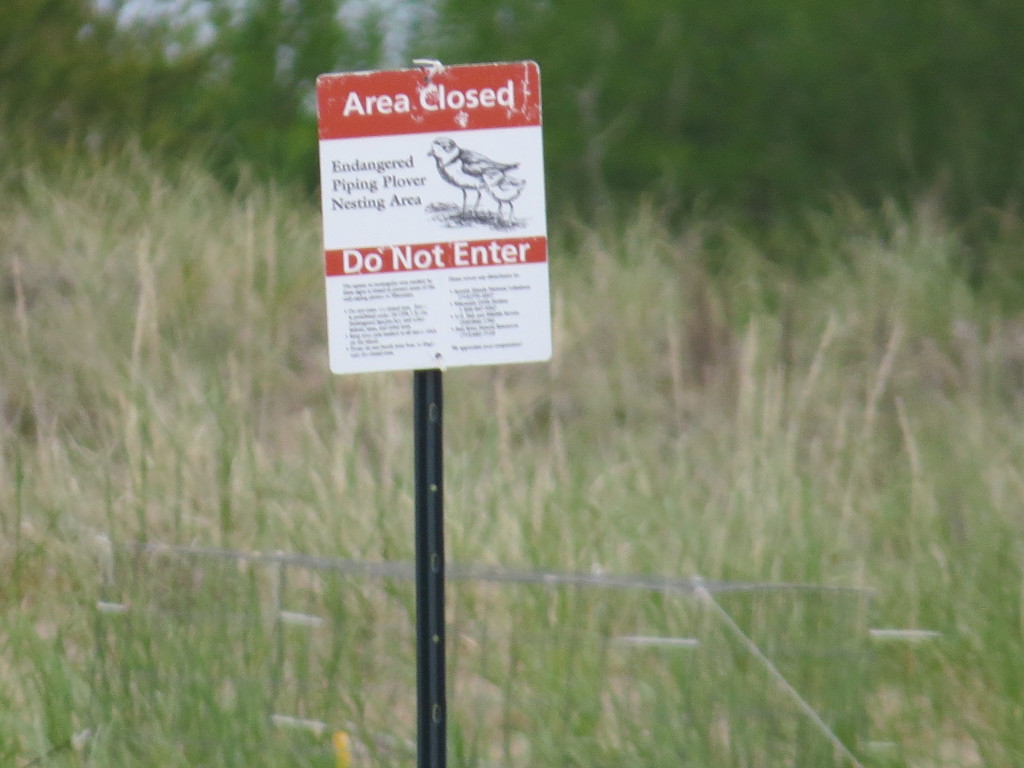
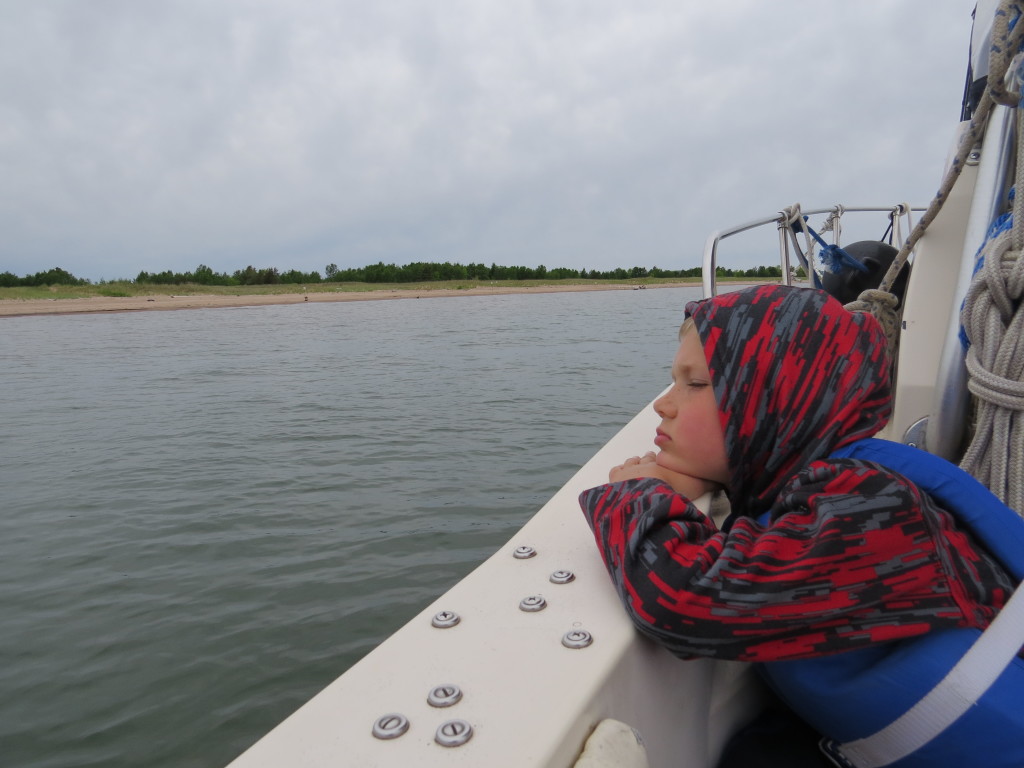
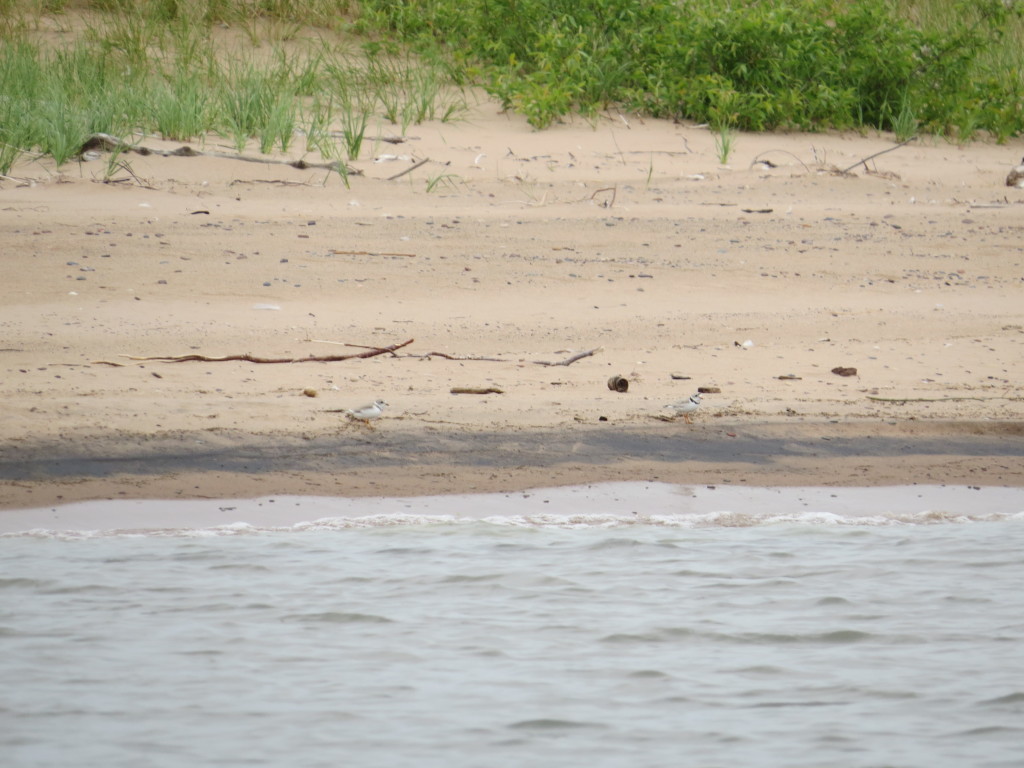
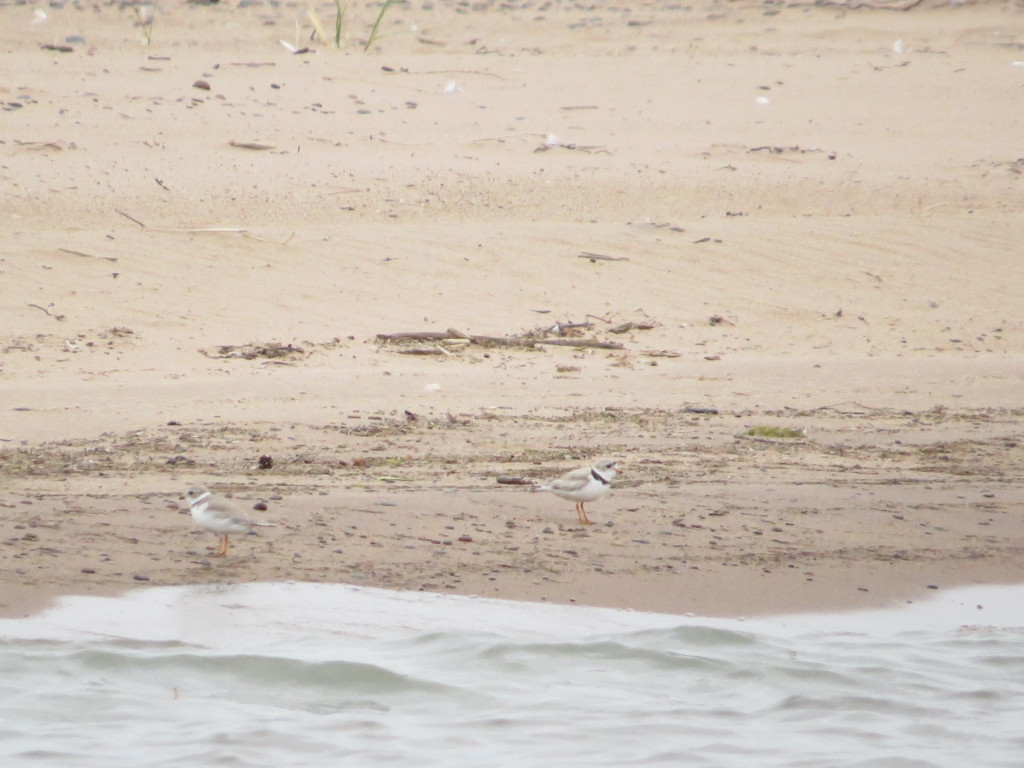 My photos are not the best, but honestly, I’d be an irresponsible birder if I did show you great photos from this outing because it would mean I was close to them. The well-being of these birds–the well-being of a species–comes first. And these guys need a lot of space to do well. Even so, I got some bloggable shots of both sexes. Ladies first.
My photos are not the best, but honestly, I’d be an irresponsible birder if I did show you great photos from this outing because it would mean I was close to them. The well-being of these birds–the well-being of a species–comes first. And these guys need a lot of space to do well. Even so, I got some bloggable shots of both sexes. Ladies first.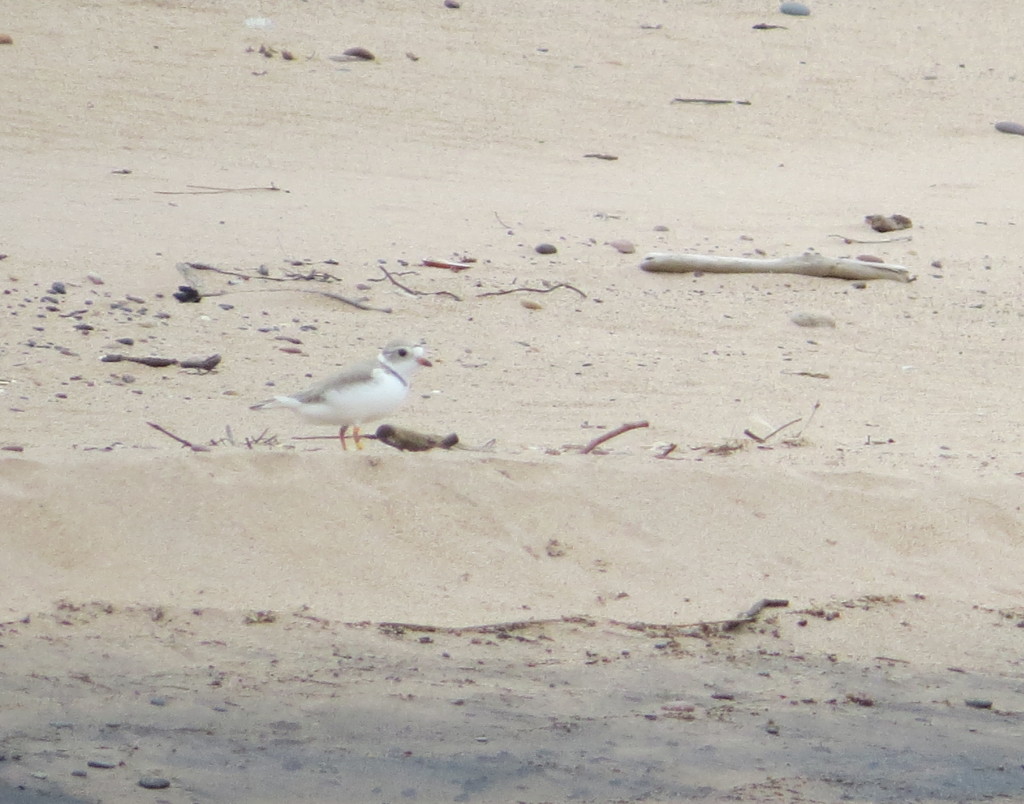
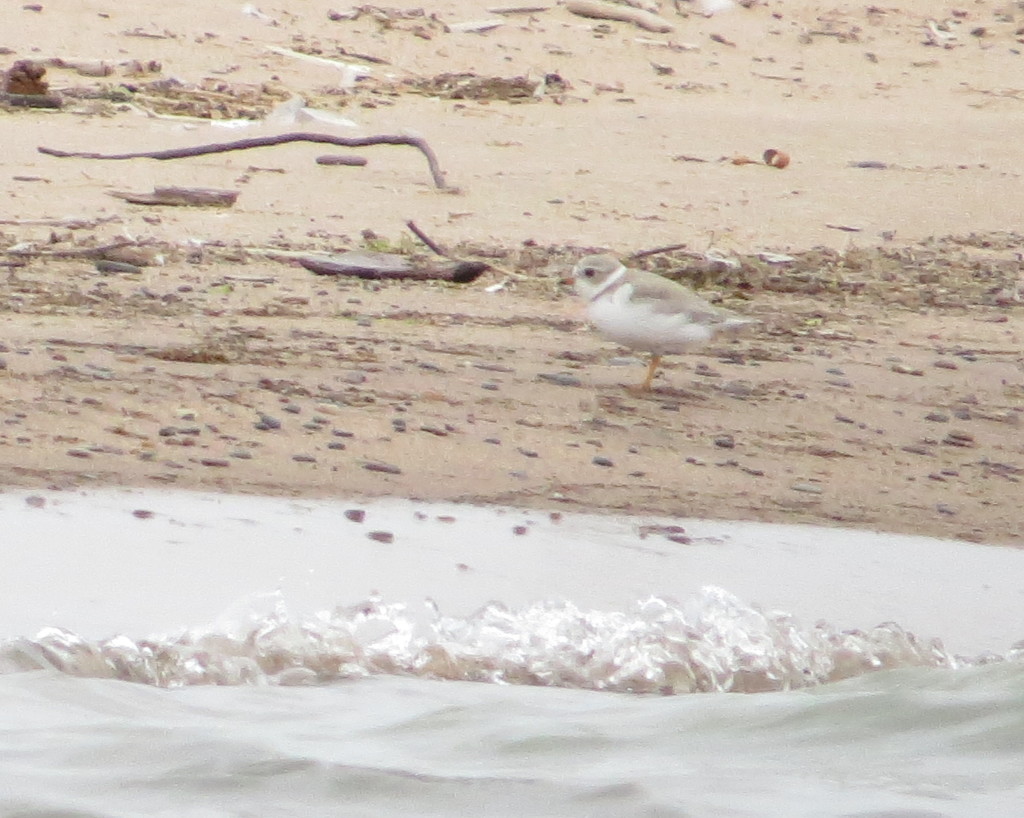
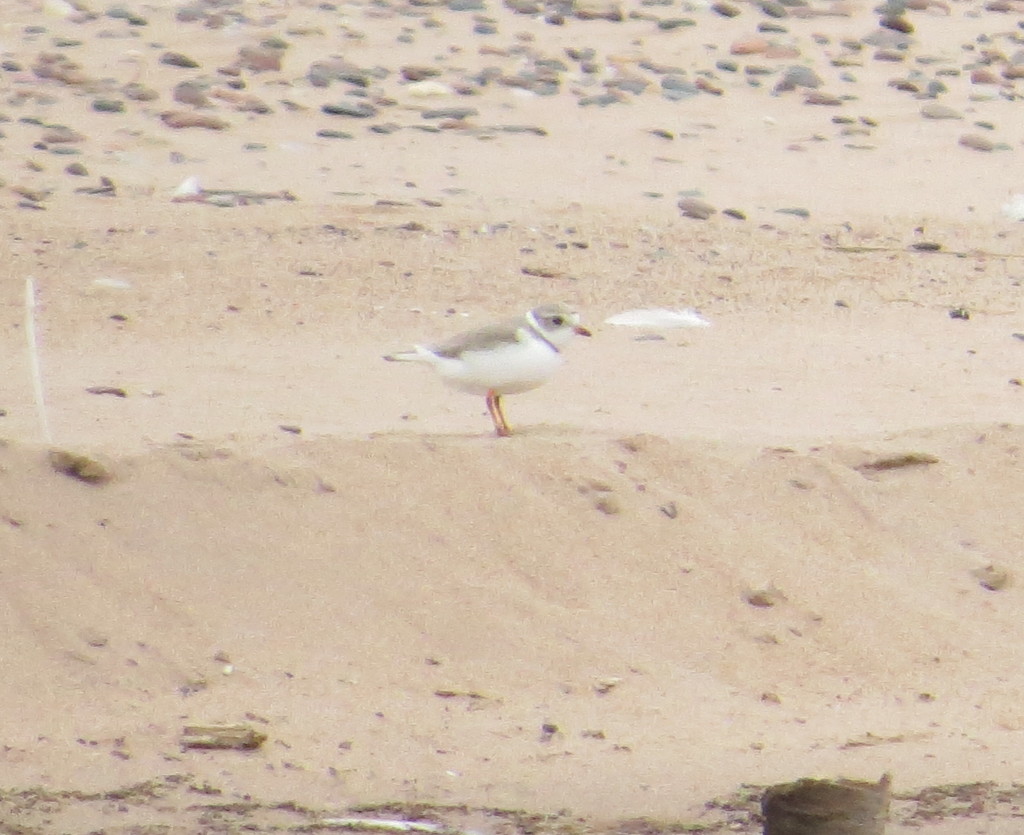
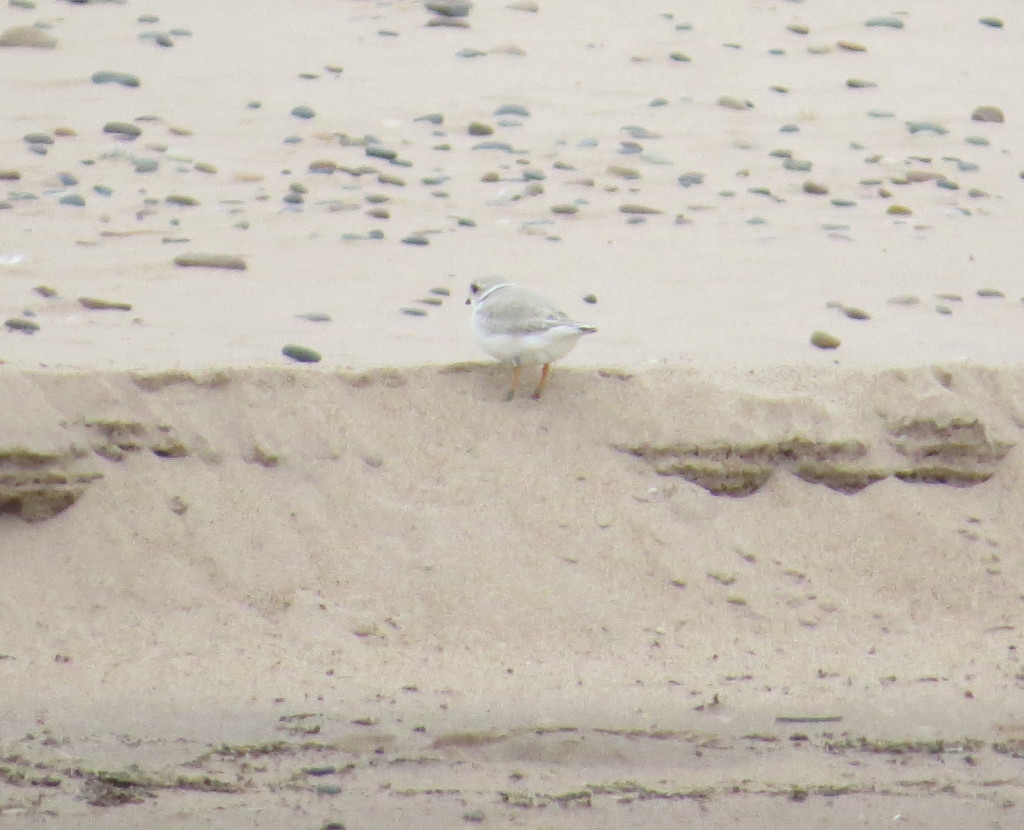
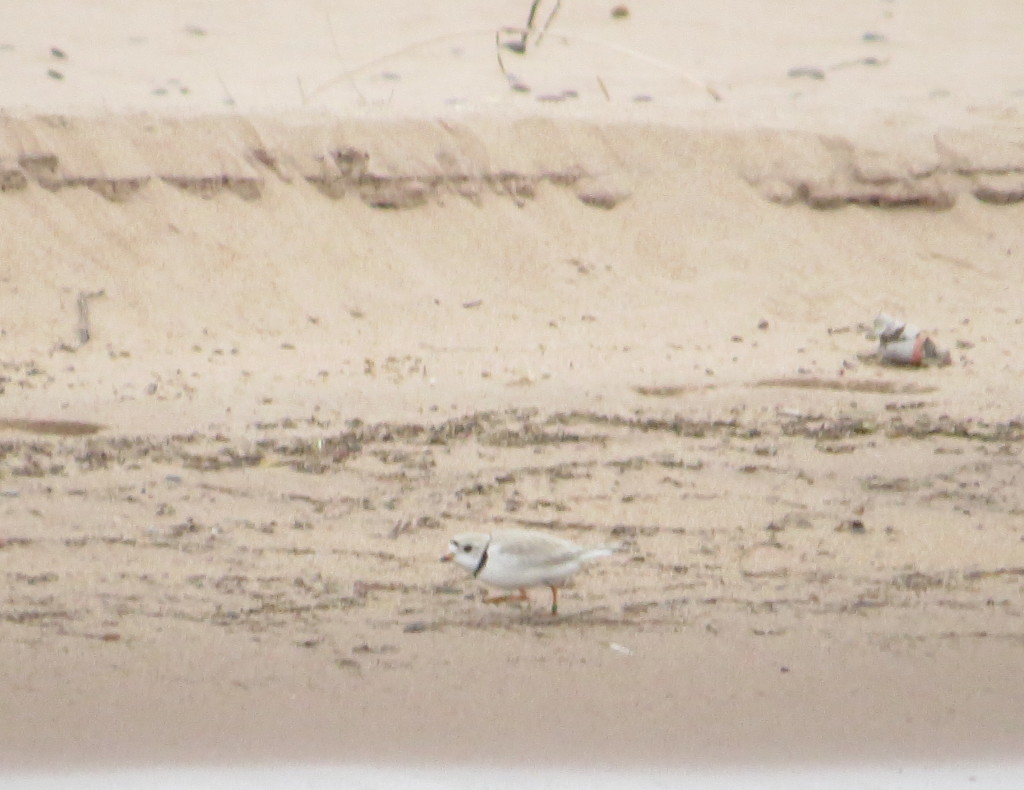
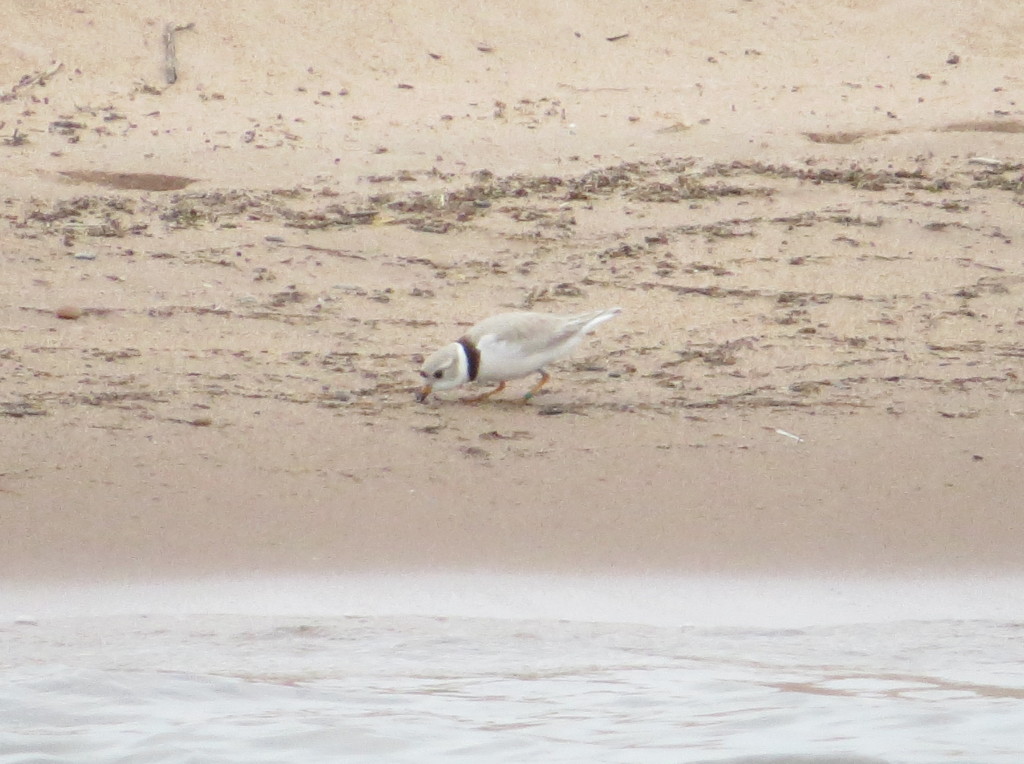
 Getting to the scene a few hundred yards down the trail, I heard the bird immediately. Several birders and I strained to locate it. One lady claimed she saw it.
Getting to the scene a few hundred yards down the trail, I heard the bird immediately. Several birders and I strained to locate it. One lady claimed she saw it.
 Before we left, I thought I heard the soft bee-buzzzz call of a Blue-winged Warbler. Nah, couldn’t be…
Before we left, I thought I heard the soft bee-buzzzz call of a Blue-winged Warbler. Nah, couldn’t be…





 If two unplanned lifers weren’t enough, how about a third?! Several Terns caught my eye right away when we got to the ponds. Their bills looked excessively reddish and other clues were leading me to the conclusion that I was looking at Common Terns, which aren’t so common in Minnesota compared to the excessively common Forster’s Tern.
If two unplanned lifers weren’t enough, how about a third?! Several Terns caught my eye right away when we got to the ponds. Their bills looked excessively reddish and other clues were leading me to the conclusion that I was looking at Common Terns, which aren’t so common in Minnesota compared to the excessively common Forster’s Tern. I spent much time agonizing over this ID after the fact as Common and Forster’s Terns are incredibly similar looking. Many hours were spent scouring images on Google, studying Sibley, etc. Common Terns have reddish-orange bills while Forster’s Terns have a straight-up orange color. The red really popped when I looked at these birds.
I spent much time agonizing over this ID after the fact as Common and Forster’s Terns are incredibly similar looking. Many hours were spent scouring images on Google, studying Sibley, etc. Common Terns have reddish-orange bills while Forster’s Terns have a straight-up orange color. The red really popped when I looked at these birds.





 Dunlin were excessively plentiful and quite striking in full breeding plumage.
Dunlin were excessively plentiful and quite striking in full breeding plumage.


 There was a lot going on with the shorebirds, both in numbers of birds and numbers of species. Wilson’s Phalaropes and White-rumped Sandpipers can be seen in my photos, but I didn’t focus any of my photography efforts on them. I probably could have spent hours photographing all these shorebirds, but I wanted to take another crack at that White-eyed Vireo and the day was already getting long for the non-birders. It was time to head back to New Ulm and hit the trail one last time.
There was a lot going on with the shorebirds, both in numbers of birds and numbers of species. Wilson’s Phalaropes and White-rumped Sandpipers can be seen in my photos, but I didn’t focus any of my photography efforts on them. I probably could have spent hours photographing all these shorebirds, but I wanted to take another crack at that White-eyed Vireo and the day was already getting long for the non-birders. It was time to head back to New Ulm and hit the trail one last time.

 The Blue-winged Warbler was another great consolation prize in a day full of consolation goodies. It felt good to get better photos of this species.
The Blue-winged Warbler was another great consolation prize in a day full of consolation goodies. It felt good to get better photos of this species. So, we went to see a White-eyed Vireo and failed in that regard. However, this day was an unimaginable lifer and FOY grab. Getting four lifers (WEVI, HUGO, SAND, COTE) in a day instate is unheard of at this stage in our birding. Topping it off with some incredible shorebirds like the Avocets and Turnstones as well as the Blue-winged Warbler really made for an exciting day back on our old stomping grounds.
So, we went to see a White-eyed Vireo and failed in that regard. However, this day was an unimaginable lifer and FOY grab. Getting four lifers (WEVI, HUGO, SAND, COTE) in a day instate is unheard of at this stage in our birding. Topping it off with some incredible shorebirds like the Avocets and Turnstones as well as the Blue-winged Warbler really made for an exciting day back on our old stomping grounds.